POW PERFECTION

LESCARROZ-THEULTIMATE WEEKENDGETAWAY?FRESHIES & TAPASIN SPAIN'SBAQUEIRA-BERET







2024GEARPREVIEW RELIVING THEGLORYDAYSOFBLADONLINES BESTRESORTSFORSUMMERFUN








LESCARROZ-THEULTIMATE WEEKENDGETAWAY?FRESHIES & TAPASIN SPAIN'SBAQUEIRA-BERET







2024GEARPREVIEW RELIVING THEGLORYDAYSOFBLADONLINES BESTRESORTSFORSUMMERFUN






We've been united in the mountains for 40 years and counting. That's a whole lot of passion and experience, and a whole lot of impact too. But we're here to stay and so are the mountains. That's why we're helping you to make the right choice, so you look great, perform at your best and protect the wild playgrounds we love, for the next 40 years and beyond.
15%discount in-store and on line for Ski Club GB members with code AF-SKIGB-Cl Expires: 31.03.2023. T&Cs online.

Make the right choice with our experts.

52
Wegetall nostalgicrelivingthe gloryof BladonLines
TheGambrillfamilygetstuckintoAustria'sSkiWelt
72

2023SkiTestdebrief:the gearworld'snewstarsshine
-CLUBTALK
8 Snowmail Martin's Musings
10 ClubNews
The latest from the mountains
16 Parrots in the Snow
Iain Martin goes back in time to the glory days ofBladon Lines
20 Our Ambassador says ...
Chemmy Alcott celebrates a winter of champions
22 In the Stubli with ...
Freeride pioneer Dominique Perret
24 Guided by Goodlad
Bruce Goodlad reveals his top picks for ski mountaineering kit
26 Departures
The pick of the late season and ski touring trips from Freshtracks and Mountain Tracks
-ACTIONZONE
30 Exposure
Alaskan snowboard movie action
32 Mountain News
The latest from your favourite resorts
33 Resort of the Month
Les Deux Alpes for all
34 Summer in the Alps
Inspiration for when the snow melts
36 Bears in Les Arcs
We visit the World's Best New Ski Hotel
40 Baqueira-Beret

72 hours in this Spanish ski resort
44 Grandma's Grindelwald
A wonderfully nostalgic ski trip


47 Ski Challenge
The Newman family are on a mission ...
48 Quick hits in Les Carroz
Get set to enjoy a springtime blast
52 The ultimate family resort?
The Gambrill family head to SkiWelt
INSIDEEDGE

54 Perfect Pitstop
Too much love in Paradiski's Les Chalets de !'Arc
56 Ski Technique
Warren Smith shares his expert tips
58 Snowboard Technique
The experts at Vivid Snowboarding on how to do a frontside and backside 180
60 In Shape with Chemmy
Meet the pyschologist who's changed the shape of elite performance rehab

62 Ski with the Club
Our Reps share their winter highlights
64 The Kit Doctor
Our expert on how to stay warm
66 Made in Britain
Introducing the West Country/Verbier eyewear brand, SunGod
68 On Test
Ski and snowboard gear put to the test
72 2023/24 Ski Gear Preview
We report on the 2023 Ski Test
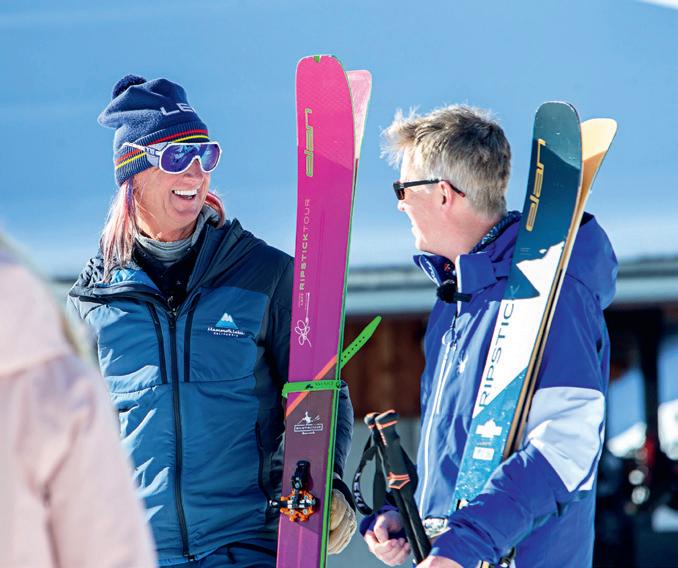
76 2023/24 Snowboard Preview
A sneak peek at the boards of tomorrow

78 From the Archive
The British Ski Racing Week of1960
As snowdrops weave their magical blanket on the ground here in England, the joy of spring skiing is
yourself for skiing from our homegrown comeback queen and Ski Club Ambassador, Chemmy Alcott (p60). on our minds. Halcyon memories of late afternoon turns on pistes bathed in warm sunshine and long ski touring days rewarded with glorious corn snow descents make us eager to eke out every last ski moment in the season.
If you're equally inspired to max out the spring, we've got the pick of the late season Freshtracks holidays (p26), a selection of the best kit for your next ski mountaineering trip from Bruce Goodlad (p24), and top tips on mentally preparing
4 skiclub.co.uk
Further inspiration comes from our insider's guide to the secret stashes of Les Carroz (p48), a nostalgic jaunt to Grindelwald (p44) and a family trip to Les Arcs to check out the Best New Ski Hotel in the World (p36).
Last but not least, we've got a sneaky preview of the best pieces of kit for winter 2023/24 (p72) to get you through the summer.
NICOLAISEARD & GABRIELLA LE BRETON,EDITORS5%OFF SKI CLUBTRAVELSERVIC *


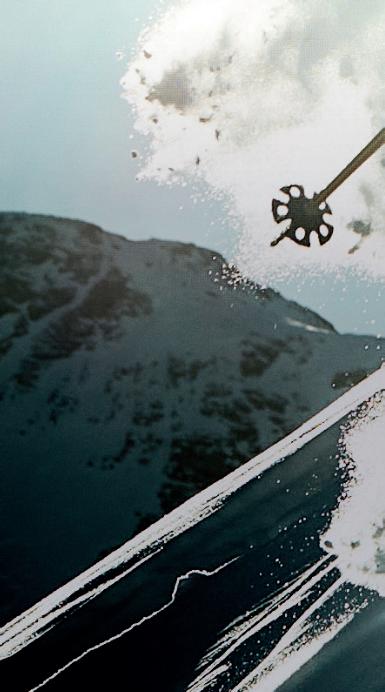
10%OFF SKIWORLD *







15%OFF SKI CLUB TRAVEL INSURAN *


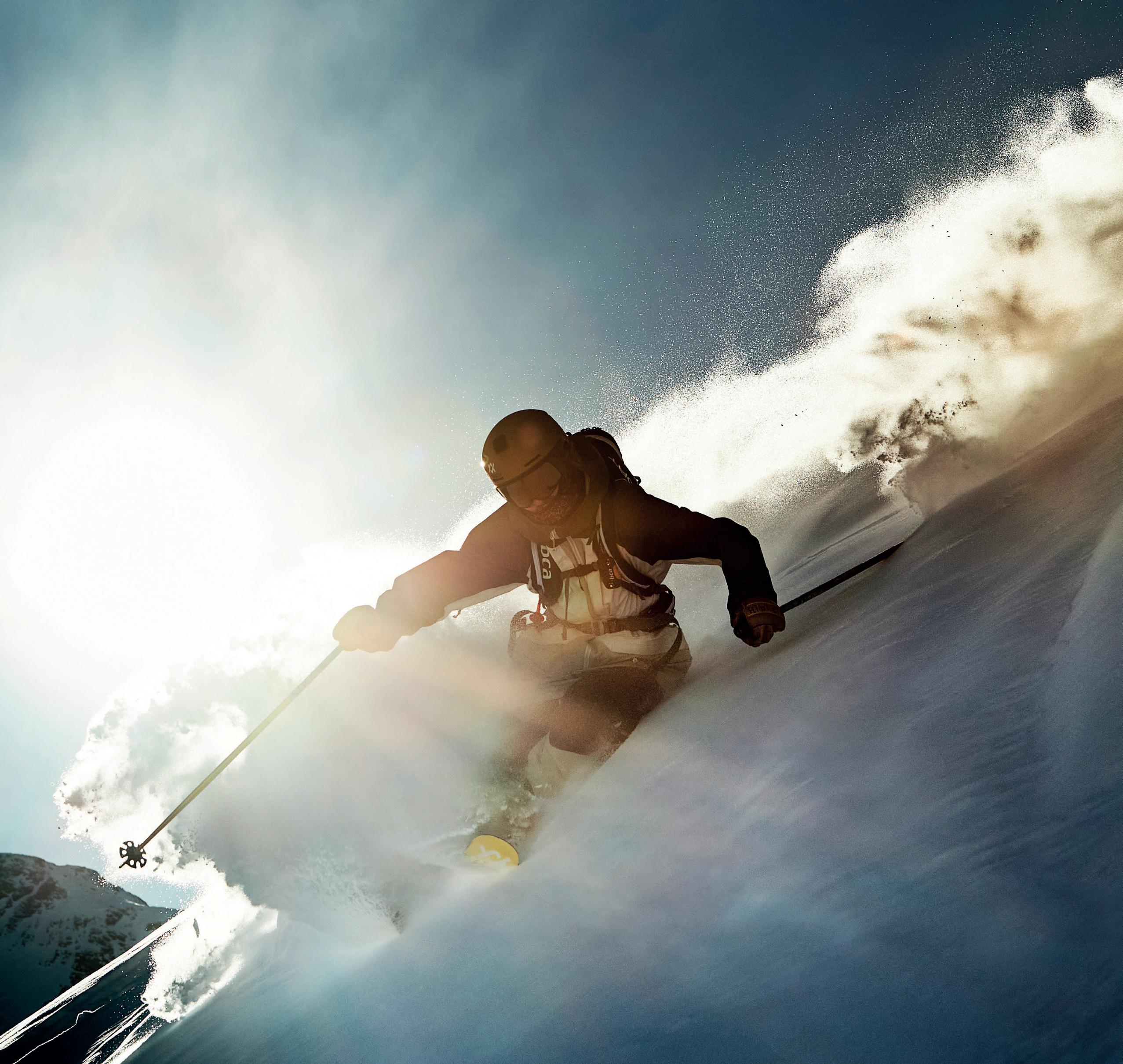
20%OFF SNOW+ROCK *



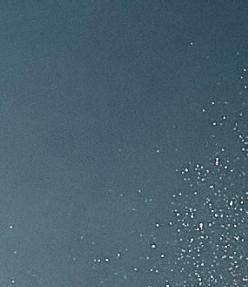

25%OFF NEW GENERATIONLESSONS *

40%OFF BOLLEEYEWEAR *










50%OFF SKISETEQUIPMENTRENTAL'S

MARCH2023
Coverphoto:WarrenSmithenjoying theVerbierpowin January2023,shot byCraigPaterson,justbefilms
EDITORS
Nicolalseard& GabriellaLeBreton snowmail@skiclub.co.uk
STAFFWRITER
HenryJohn
DESIGN
ThinkPublishing
ADVERTISING partners@skiclub.co.uk daniel.taylor@thinkpublishing.co.uk

PUBLISHER
SkiClubof GreatBritain
LondonSW96DE skiclub.co.ukI02084102000
DISTRIBUTION
Jellyfish
Issue220
© SkiClubof GreatBritain2023
ISSN139-8826

Ski+boardisprintedbyPressionPress
ProductionmanagedbyJellyfish
All materialisstrictlycopyrightand all rightsarereserved.Nopartof thispublicationmaybereproduced in wholeor in partwithoutthe prior writtenpermissionof the publisher. All pricesarebasedon information availableat thetimeof goingto press. Opinionsexpressed in Ski+board arenot necessarilythoseof the SkiClubof GreatBritain,nordoes the publisheracceptresponsibility for advertisingcontent.

As we head into the last months of winter and early spring, it's interesting to reflect on how 'normal' this season has been after the challenges and uncertainties of the past few years. For most of us who have finally got back on snow, that feeling of freedom and pure escapism the mountains provide hasn't diminished at all; quite the opposite.
Sensing that British skiers were keen to get back to business, the Club expanded its key on-snow services in 2022/23, with the holidays programme growing by 25% and the Reps programme by 50%. With a healthy number of new Members joining, we're approaching our 120th winter in 2023/24 with a sense of renewed optimism and excitement.
But this winter isn't done yet! A Ski Club team was in La Clusaz for the Ski Tests, enjoying great conditions
Helping you get more from the mountains is one of the Club's key objectives, and we'll be working hard over the summer to develop more ways to help you achieve this, whatever your area of interest in snowsports.
We're looking to be as inclusive as possible, especially as we look for ways for all Members, and all skiers, to celebrate in our 120th anniversary in the UK and in resort. Keep an eye on our website, emails and social media streams for more information as we share our plans for this big birthday!
One of the joys of our sport is the sheer variety of ways to enjoy a day in the mountains. From carving down the perfect piste to bouncing through knee deep powder, there's
the hike up provides as much fun!
Whilst here at the Club we live for winter, the draw of in which to try hundreds of skis due to hit the stores later this year. We'll reveal a sneak peek in this issue, but you'll have to wait until autumn for the full run down.
Meanwhile, March brings with it peak touring season, and we've got some great ideas for destinations, as well as the best kit to get you up and away from the marked runs and into the backcountry.
the mountains in summer has never been stronger. We're delighted that many Alpine resorts are focusing much of their time on developing diverse summer activities, with a move to a more sustainable four-season offering. In this issue, we reveal some of our top picks for summer fun in the mountains, even if it's just to keep those muscles trained for next winter!
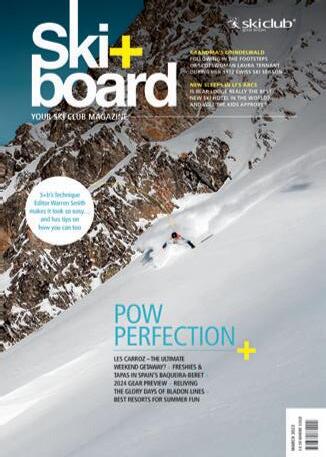
"We 're approaching our 120th winter with something for each ofus.Forsome,even
renewed optimism"

Whetheryou are an experiencedpowder hound or lookingto take your first turns off the piste,experience fabulousFlainethis winter, stayingin the SkiClub·schalet and skiingwith our incredible instructors-who we·ve been working with for over a quarter of a century!


Formore informationabout our holidaysvisit Skiclub.co.uk/freshtracks

When we received a letter from Ski Club Rep Martin Jordan asking us to consider some of his 0 musings 0 for S+b,he had us giggling from his first line: 0 1'm on the SCGB Council, but please don't hold that against me ... 0
You'll find a sample of Martin's thoughts on a perfect day's Repping below and we would like to invite you to vote on whether or not we should give him a regular column in the 2023/24 issues of Ski+board. So have a read, and a giggle, and let us know via snowmail@skiclub.co.uk whether we all need more of Martin's musings in our lives!
You know the day when everything goes right, and you can do no wrong? I had one such day Repping last week -I was a Rep God! No need for an amp that goes to 11, tight trousers with a few socks stuffed down them -I was the real deal.
0 Wow, Martin what did you do?" I'm glad you asked. I was planning to take the Espressos(Anthony, Philip and Roger) over to Italy, now the link was finally open. I hope they're reading this and can verify our amazing day. As we arrived at Trockener Steg, the Fruggsattel Chair had just opened, so we decided to have a warm-up run down the pristine motorway piste. So far so excellent. Then back to plan A and over to Italy. Approaching Testa Grigia to head down Run 7 to Cervinia, I noticed a crowd waiting -there was a barrier closing the run. As I approached the pisteurs to investigate the situation, to my delight they started to furl the barrier. I quickly shepherded the Espressosthrough the small gap before you could say "no friends in powder".
Now readers, just reflect on this for a moment. We had a slope that had been closed to Switzerland for a few days due to snow and bad weather. It had just been groomed. It now stretched out before us in good light, km after glorious km (1,400m vertical) of virgin corduroy. There was no one in front of us -we were ahead of the pack.
I was first out the gate -I've never been down that run so fast! The hero snow and smooth surface gave me the confidence to let it all hang out on wide sweeping carving turns. Not wanting to lose our front spot, we just kept going until Cervinia. At the bottom, huge grins all round and high fives. Piste skiing doesn't get any better! Of course, I took all the credit for it, cementing my new Rep God status.
As Cervinia started to get misty and the light flat, we made our way to Valtournenche, where the skies were
Wewouldloveto hearyourviewsonallthings snowy.PenourStarLetterandyou'llwina SkiClub HalfZipSweaterfromtheSkiClubShop.Writeto snowmail@skiclub.co.uk



clear. I really AM good. (The fact that lunch had been booked in Valtournenche the day before, mere detail.) We flew down the quiet pistes, all the way down to 1,650m. Joy. We arrived at Foyer des Guides at 12.30pm and, being early, got the best table and attentive service.
After a delicious Italian meal, we pushed on back to the land of the Toblerone. We arrived at Cimi Bianchi cable car, which had been a bottle neck, to walk straight in. It was all going so smoothly, I was starting to believe my own hype. Then doubts started to creep in; it's all going too well, surely something bad will happen?
Back on home ground, we skied over to Hurli and tried some off-piste by the side of the black run. Roger had never really been off-piste and he loved it. It was deeply satisfying to see how thrilled he was, when we finally got back on the groomers. I think I've made a convert there.
Apres was at Blatten, where of course we got a great table and Gili Gili's all around, especially as Mr Gili Gili Man was with us in person.
Roger said he would mark my Repping at 150%, which is lovely if a bit worrying that a chemical engineer doesn't understand percentages ...
So, a memorable day, where we were incredibly lucky. I know I'm not really a Rep God. Now, where are those socks?
~10%EXTRA 1 ~DISCOUNT on our ski hire!



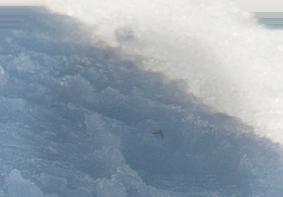


Henry John: Let's talk about Angus before the Ski Club: how did you get into skiing?
Angus Maciver: Being a child of the Scottish Highlands, you might expect skiing to be part and parcel of my upbringing, but it wasn't until my twenties that I first hit the slopes. I have my darling wife, Debbie, to thank for that, who very early on laid down the mantle that I was to join her in the mountains every year. Luckily, I fell in love with it straight away!
HJ: When did the Ski Club first feature in your journey as a skier?

AM: In the late 1990s, Debbie and I were lucky enough to be based in Budapest as part of my work. From there, the Alps were only a couple of hours away by car and we managed to fit in skiing regularly, especially weekend trips. Upon our return to the UK, we were desperate to keep up that pattern as much as we could, and we discovered the Ski Club's Freshtracks holidays were the perfect way to fulfil this desire.
HJ: You've been with the Club just over 10years, and beenaRepforfive ofthose-whatareyour best memories of this time?
AM: The holidays have always been terrific, just seeing everything come together and people enjoying themselves while growing their skiing. I took some time to focus on my skiing between jobs in the winter of 2011,and the first off-piste trip I did in Chamonix was extraordinary -watching my skiing and confidence grow was really something! I saw the same thing happen on a trip I was a Rep on, in Klosters: a Member perhaps hadn't understood the grading system and joined the holiday below the assigned standard. However, her hard work and determination meant she was joining us down blacks and steep reds by the end of the week, to the delight of everyone!
HJ: You've mentioned previously that you joined the SCGBCouncil to give something back to the Club, either out of obligation or a desire to share the joy you've found with it. Now, as its Chairman, how do you use your experience to help the Club?
AM: The most important thing the Club has given me is that sense of community built around snowsports; it's why I have loved the holidays so much, seeing that all come together on the slopes. The Club has been through a well-documented difficult period which, thanks to the good work of Trevor, James and others, has been overcome. The time now is to focus on what the Club does well to help it grow, all whilst keeping control of Members' money.
The Club does snowsports very well, and that is where it needs to focus. The growth of the Reps' programme
is the best example of this and is something we'll keep expanding. We also need to diversify, taking into consideration all forms of snowsports, including cross-country, touring and telemarking, and all forms of Members, including, in particular, families. It is only through this diversification, within the framework of snowsports, that the Club can excel at being a club and create a perpetual virtuous circle.
HJ: Where is the Club looking to place Reps moving forward?
AM: Where the skiers are. France is the obvious option -I was Repping on a Freshtracks holiday to Les Deux Alpes a couple of weeks ago, and I was surprised by the awareness of the Club, even being approached in bars when wearing my Ski Club Jacket. The skiers are there; the Club needs to be there to serve them in return.
We want to do it in the best way possible, however, so that requires us working with local stakeholders including tourist offices, resort ownership and local ski schools to ensure we are welcomed with open arms.
HJ:And finally, where can we find Angus skiing next season?

AM: I have been able to arrange a trip-of-a-lifetime to
Canada with Bruce Goodlad (IFMGAMountain Guide and the Ski Club's Mountain Safety Advisor). While I'm there, I will hopefully be joining some of the Club's Reps in Canada, so that's the place you are guaranteed to find me next year! Otherwise, I shall raise my hand for Rep allocations and see what the Ski Club can offer.
Little could the founding fathers of the Ski Club of Great Britain have known, as they sat down to dinner at London's Cafe Royal on 6 May 1903 under the reign of King Edward VII, that the club they founded that evening would turn 120 years old on the day of the Coronation of King Charles III.
While we are clearly delighted to share our birthday with such a regal event, it does mean our party planning
has been impacted. We therefore urge you to keep a close eye on your emails and the SCGBsocial media channels for updates on our planned celebrations.
In the meantime, we are also honoured to share this celebratory year with the Ladies' Ski Club, which turned 100 in January 2023 with typical flair, hosting a 1920s costumed slalom race fore-run by our very own Chemmy Alcott.


mllyVaughan-Jones was in sparkling form when I dropped into his Pembrokeshire workshop to chat about his pioneering business venture ArcticFox. And well he might be, having just heard that he'd been selected for the Team England Adaptive Surf Squad.
This is a man who is obsessed with sliding around on water and snow, and his England team selection, plus the organised chaos of his workshop, were proof that a serious disability is nowhere near enough to prevent him indulging in his passion. By designing innovative sit-skis for adaptive skiers and snowboarders, Olly is also ensuring other disabled snowsports enthusiasts can get their kicks on the slopes.
Following several years of research and development, the ArcticFox Vixen adaptive sit-ski was introduced to the public at the National Ski Show in October 2022, and went on the market last month. The Vixen All-Mountain version is set to launch imminently.
The ingenious Vixen weighs in at just 13kg, is fully adjustable and semi-customised, and fits into a suitcase for easy transportation (Ollyregularly travels on public transport, in a wheelchair, with his sit-ski). Ideally suited for mono sit-ski learners, the Vixen can be used everywhere from indoor snow centres to pistes and pow, and can also be upgraded as the user progresses their
skiing. The Vixen All-Mountain, as the name suggests, has various design tweaks that make it more suitable for more advanced skiers and freeride terrain (where, as Olly points out, face shots are far easier than on regular skis!).
The Vixen All-Mountain also comes with a 'lift assist' system, which allows the user to access chair lifts on their own rather than needing assistance from friends or lift operators. As well as significantly reducing arm fatigue and the strength required to get onto a chair lift, this facilitates increased independence whilst riding.
Olly, 38, not only brings award-winning design engineer credentials to the table with his ArcticFox designs, but also first-hand experience of using sitskis. Shortly after scooping the Gillette Innovation Award in 2008 while studying at Brunel University in the late noughties, Olly contracted serious myalgic encephalomyelitis (ME).The virus resulted in Olly having to endure hospital, care homes and assisted living for many years, at one stage losing the ability to speak and having to be spoon-fed by his parents and sister, and ultimately being left wheelchair-bound.


A passionate snowboarder and skier, Olly had qualified as a snowboard instructor before starting university and spent several seasons in Chamonix and Mont Tremblant, ultimately hoping to work as a design engineer within the ski industry. As such, he seized the opportunity
TBydesigning innovativesit-skis, Ollyisensuringother disabledsnowsports enthusiastscanget theiron-slopekicks
to take a sit-ski lesson at Tamworth SnowDome with Disability Snowsports UK in 2017."The instructors were great, but I was terrible!" Undeterred, he gave sit-skiing another go on a visit to Arinsal the following year, where he discovered the resort's Val Nord Adaptive Ski School, which has 13 dedicated sit-ski instructors.
Here, with the help of instructors Dave and Marcus, things started falling into place, and Olly made the life-changing discovery that, by using a lighter, more adjustable mono-ski he could once again enjoy sliding around on snow.
However, as a design engineer he was compelled to come up with a better, more practical and efficient alternative to the sit-skis he'd been offered at the ski school. ''I'd been looking for something technical and challenging that I could engage my brain with. Given my training as a design engineer, designing a better sit-ski was an obvious 'come back' project."
Setting up ArcticFox in 2019 (the name derives from Olly's childhood nickname, 'Foxy'), the design and development process not only involved time at the drawing board and in the workshop, but also site visits, including an enlightening trip to Winter Park in Colorado last winter at the invitation of the British Armed Forces Para Snowsports Team. The resort, says Olly, is: "The pinnacle of adaptive skiing, with



an adaptive ski school and instructors that totally understand the issues faced by disabled skiers."

He was even taken out on backcountry adventures with his newly developed sit-ski by locals, accessing the 3,796m Jones Pass on snowmobiles.
"I felt like I was back in Cham in the old days, hitting deep powder and enjoying the wilderness of the winter backcountry. I finally realised that adaptive skiing could provide all the thrills I used to experience on the snow before my illness."
The combination of long hours of design work plus feedback from trips to the mountains and discussions with adaptive ski instructors and other sit-ski users has led to the development over the past three years of the two new ArcticFox Vixen sit-skis which, incidentally, are built using materials sourced within Wales and the wider UK wherever possible.
As ArcticFox hits the market this winter you can be sure that this is just the start for this enterprising one-man band. Thanks to Olly's engineering skills and passion for the mountains, his products make it as easy and practical as possible for adaptive riders to get out there and hit the piste, pow and park.
*FormoreinformationabouttheArcticfoxrange visitthewebsiteatarcticfoxadaptive.com
Olly's design engineering backgroundhasled to new backcountry adventures
SCGBis delightedto announcea brand new partnershipwith the BritishSki& SnowboardNationalFoundation(BSSNF),the charitythat helpseasethe financialburdensthat preventtalented para athletesand young skiersand boardersfrom excellingin their chosensnowsport
When para athlete Scott Meenagh took silver in the seated 12.5km biathlon at the Para Nordic World Championships in Sweden in January 2023, it was a hard-earned victory for him and his supporters, including the team at the BSSNF. When UK Sport withdrew World Class Programme funding from the para Nordic team in July 2022, along with the Alpine and Cross-Country disciplines, Scott had been forced to consider retiring from Team GB.
A double amputee who was injured while serving in Afghanistan in 2011,Scott only switched from competitive para rowing to para Nordic in 2016, becoming the first para Nordic skier to represent Great Britain at a Winter Olympics in 2018. Just four years later, he finished sixth in the long-distance biathlon at the 2022 Beijing Olympics.

The withdrawal of funding for para Nordic after this success was, therefore, a massive blow. Fortunately for Scott, and British sports, the BSSNFwas able to stop this stellar athlete from being forced into early retirement by plugging some of the £30,000 funding gap left by UK Sport. As Elizabeth Winfield, director of the BSSNF,says: "I was overcome by emotion when Scott won silver -our journey together started seven years ago and BSSNFwas delighted to fund the World Championship Event that brought the first ever Para Nordic medal home for GB."
It's stories like this that bring home the importance of donation-funded charities like the BSSNF.Formed in 2016, the foundation works to ensure financial barriers, disability and access don't prevent potential athletes from enjoying the exhilaration of snowsports.
Grant recipients are chosen from a pool of athletes nominated by the Home Nations governing bodies and GB Snowsport and include para athletes of all levels and young snowsports athletes in diverse disciplines from freestyle and alpine to ski cross and halfpipe.
As Elizabeth explains: "We're daring to dream of a strong GBwinter team, but we're mindful of the fact that we need to support these athletes from the start of their journey to reach podium potential, not merely be present once they've reached it. We fund dreams, not success."
The freestyle snowboarder Mia Brookes is another athlete to have benefited from BSSNF funding. Mia took silver at the slopestyle World Cup event in LAAX in January 2023 just a few days after her 16th birthday, making her 20 years younger than Dave Ryding, her
fellow World Cup silver medal winner that week. Thanks to funding from the BSSNF,Mia has been able to continue studying for her GCSEswhile training and competing. As Elizabeth explains: "Our grant of £6,500 secured online schooling for Mia while she spent a winter on the circuit. She's now embarking on a threeyear journey towards the 2026 Milan-Cortina Winter Olympics, for which she needs financial support and commitment from us, from our donors, that enables her to plan for her future in sport while also continuing her education."
Talks are currently ongoing between the Ski Club and the BSSNF on how best to support athletes like Scott and Mia, as well as the many projects the charity runs to help young people get involved in snowsports. We look forward to revealing more details about our partnership soon.
In the meantime, if you would like to support some of the nation's most exciting young snowsports athletes and para athletes, and nurture a passion for snowsports at grassroots level, visit bssnf.uk for more information or scan the QR code on the right to make a donation.
BSSNF,101NewCavendishStreet,London,W1W6XH, tel:0203994S300,email:elizabeth@bssnf.uk, registeredcharitynumber1167331.


As Members who have enjoyed exploring the off-piste with the Club's Instructor-led Guiding (ILG)service will know, the unique service enables them to access half-price guided skiing and snowboarding in small group sessions with expert instructors from local ski schools.
The ILG service has been available to Members so far this winter in St Anton, Verbier and several French resorts, including Val d'Isere, Meribel and Les Arcs. Thanks to a new partnership with SkiBro, ILG days will now also available from March to April in Plaine and the high-altitude Austrian resort of Solden.
SkiBro is an online platform and app that allows riders to scroll through hundreds of qualified instructors and guides, as defined by their personal needs, and book lessons in some 200 resorts across the Alps.

*Toaccessyour50%MemberdiscountforILGdaysin FlaineandSiilden,simplylogintotheSkiClubwebsite (skiclub.co.uk}usingyourMembershipdetails,visitthe Ski& SnowboardSchoolsDiscountspageandapplythe discountcodeshownontheSkiBropage.
PropEvents is the master organiser of networking events within the property industry, hosting sporting events that enable real estate experts to chat business as they ski, sail, row, shoot and play golf in some of the Europe's top destinations.

Celebrating its tenth year, PropSki is the flagship bash

of the networking specialist. The event hosted some 600 property industry professionals; there were presentations
on the state of the UK property market and the Macdonald
& Company race day, which saw competitors compete in GS and team dual slalom races for prizes provided by the SCGB,complete with commentary from the managing director of Protect Our Winters, Lauren Mccullen.
The mountaintop Colliers Mountain Meal fondue event raised over £14,000 for charities including the
ELIFAR Foundation, LANDAID,and Protect Our Winters (POWUK), bringing the total donations raised by PropEvents over the last decade to over £200,000.
Work is already underway to make the 2024 PropSki (propski.co.uk} even better, so watch this space!
lainMartin takesus on a schussdown memory lane,sharingthe colourful story of the 1980schalet holidaytrailblazerand sorelymissedBladonLines

The last glass of 'Parrot Claret' may have been served over 25 years ago, but the chalet company Bladon Lines continues to hold a special place in the hearts of many British skiers, not least because many of today's ski industry leaders started their careers working for the pioneering company. So get comfy and let's start at the beginning ...
When Simon Bladon arrived at Exeter University in 1971,most of his fellow students were hippies with long hair and Afghan coats. The clean-cut Mark Lines, complete with tweed jacket, was more his sort and the two hit it off immediately. After graduating from university, Simon and Mark shared a house in London while working in the City until 1978,when life changed suddenly -Bladon was sacked from his job at Schroders for developing houses in his spare time. He claims: "They said I was moonlighting!
''There was never any question about what was going to happen next," adds Bladon. "Mark told me he'd be handing in his notice immediately. We found three chalets in Verbier and put in £15,000 each. My father was livid."
The following winter, the pair added chalets in Meribel and Courmayeur and turned a small profit, but it was in the company's third winter in 1980/81that the breakthrough happened, albeit by accident.

"It was my job to do the pricing," says Bladon. "We'd recently moved into our first offices and I totally forgot to add in a cost for the new overheads. It meant our holidays were about £30 cheaper than everyone else's."
Early members oftheBladon Linesteamin theirfullparrot gloryinVald'lsere (farleft,photo courtesyof AminMomen), andinZermatt in1993(above)

vintage BladonLines brochure,courtesy ofLesleyGlass

The programme completely sold out and the company made a profit of £80,000 [equivalent to £400,000 today].
John Yates-Smith (co-founder of the Val d'Isere specialist YSE Ski) joined the company in 1983. "Until then the ski scene had been Supertravel and John Morgan. Then along came Bladon Lines and they did the job better than any of them," he says. "They were very good at coming up with ideas."
Take the famous Bladon Lines parrot. According to Ed Mannix (founder of Zermatt specialist Matterhorn Chalets), who worked for the company from 1985to 1994: "The jackets were an unremarkable blue, but they had zip-off sleeves. One of the chalet girls swapped her sleeves for yellow ones and the parrot was born!"

Bladon was delighted: "I thought, that's brilliant, let's make it part of our logo." Bladon Lines became synonymous with the multi-coloured bird, helping staff stand out from the crowds of reps at airports and resorts.

Nick Morgan, who founded Le Ski in 1982,recalls that "The parrots were everywhere!". Alastair Scott, the then Sunday Timesski correspondent, described them as "hideously recognisable".
It wasn't just the jackets that were different. When Mannix joined, he realised he could print bespoke labels for chalet wine. "Mark loved this idea and came up with 'Parrot Claret' for the red and 'Parrot Fin' for the white."
Not many ski companies would liken their chalet wine to paraffin today, but the chalets were as different then as the wine.
Simon Hoskyns (co-owner of Alpine Answers) worked in Val d'Isere as a maintenance man in 1987:"Atypical chalet would have five bedrooms and two bathrooms.
The biggest problem was everyone wanting hot water at once -the chalets couldn't take it." Amin Momen (founder and director of Momentum Ski), Bladon Lines' overseas manager from 1986 to 1995, confirms: "We took over people's houses and put them through weekly commercial use. The ovens and electrics were not up to it and sometimes the chalet girls weren't either!"
Working a ski season was, nonetheless, a rite of passage for 20-something 'Sloanes' of the era. They were prepared to work for a pittance, sharing tiny bedrooms under the eaves, for the chance to ski all day and party all night. There's general agreement that there was a definite 'type' of chalet girl. Momen remembers that the training manual warned against bringing 'Barbours and wellies'. "They were nice girls who'd been to the right schools," adds Hoskyns.
John Yates-Smith ran Bladon Lines' operations in Val d'Isere until 1991."It was the days of glorious amateurishness," he says. "The training course was an afternoon in Wandsworth Town Hall."
Resort reps dealt with the problems of hundreds of guests every week, working within the limitations of 20th century technology. There were no mobile phones or internet, so reps were constantly looking for phone boxes.
Gareth Crump (operations director at VIP SKI)worked for Bladon Lines from 1988 to 1997:''You weren't meant to call the UK as it cost too much money. You had to use a Telex instead."

For those readers unfamiliar with the Telex, Momen expounds: "You had to type a message on a computer. That printed out a tape like a Morse code. You then took
.A.Somemore classicBladon Linesbrochures, completewith whatAlastair Scottdescribesas those"hideously recognisable" uniforms


"Bladon Lines considers itself the most 'up market' company in Britain"
The Bladon Lines Reps' Manual
that to the transfer company, where they fed it into a machine, which sent your Telex to the UK."
The arrival of the fax machine was a revolution. "Faxes were cutting edge technology," says Crump. "But you had to go to the tourist office to send or receive one, and they were charging us a fortune for every page."
By the '90s it wasn't just technology that was changing: as competitors like Crystal Ski came onto the scene, the days of the upmarket specialist were numbered.
"Bladon Lines over-expanded. It had to sell through travel agencies and cut its margins," explains Morgan. "The company had a loyal following, but had overstretched itself," agrees Hoskyns.
The new entrants fired up hyperinflation in chalet prices. "Crystal were going round with bags of money and waving them at owners," says Mannix.
Momen recalls: "I used to sit down with the owners and renew the contract over a glass of wine. Suddenly they were telling me Crystal was offering much more: they wanted the beds at any price."
In 1995 Inghams bought Bladon Lines. Mannix explains: "Inghams saw what Crystal were up to. Previously, chalets had been the preserve of the upper middle classes. All of a sudden it had gone mass market."
Crump thinks it was more complex. "Inghams was motivated by a huge rivalry with Crystal, but they didn't understand how chalets work."
You can hear the disappointment in Bladon's voice when he says: "The biggest mistake Inghams made was getting rid of the Bladon Lines name."
Bladon Lines may have gone, but many of its former employees still work in the industry. Crump believes the opportunity for quick promotion and high levels of responsibility at any early age helped give staff a valuable grounding in the travel industry. ''You grow up quickly," he says. "As a 20-something you're out there telling SO-year-olds what to do."
Momen echoes Crump's sentiment: "I was in San Vigilio when Bladon Lines told me they'd just sacked their resort manager in Courmayeur. I went from looking after 50 guests each week to more than 250."
And, as Hoskyns explains, there was a real sense of community among the staff: "Bladon Lines gave me a sense of belonging. It was like a family."
"Doing a ski season has a formative effect," confirms Crump. "It was extremely sociable: people made friends for life. And there were thousands of people doing that each year."
Yates-Smith believes Bladon Lines was: "Never run to be a serious player. Mark's attitude was 'I consider that I'm running my own holidays and if people want to come and join us then they are very welcome'."
This attitude chimes, perhaps, with the very British approach to skiing as an activity to enjoy not only with family but with friends, and our preference for chalets over hotels and apartments.

However, the lobby group Seasonal Businesses in Travel notes a 50 per cent reduction in chalet capacity since 2020. Two years ago, Crystal Ski, now the biggest British ski tour operator, cancelled its entire chalet programme.

The final word on a bygone era should perhaps go to founder Simon Bladon, who fondly remembers the annual end of season chalet girl races: "You'd have 200 chalet girls taking over the mountain, all wearing these bright, bright jackets," he sighs. "Allthose parrots in the snow: it was a wonderful sight."

"Wenever thought that the parrot would catch on to such an extent!"

This winter has been full of celebration.

GBWinter Sports is at an all-time high, enjoying a historical season, with our athletes achieving incredible podium results and victories not just on the mountain with alpine, moguls, telemark, freestyle, para Nordic, para alpine and snowboard cross, but also in the sliding sports -skeleton and bobsleigh, monobob and even ice dancing.

I was lucky enough to witness Dave Ryding's third Kitzbiihel podium a year after he reigned supreme. A masterclass of a second run propelled him to a silver medal. Dave is every ski racing fan's second favourite racer (after their home nation champ, obviously) for good reason. He is incredibly likeable, hardworking, selfdeprecating and humble. I consider myself lucky to call someone of whom I am such a fan also a friend!
Also big in alpine skiing is the history-making GOAT female ski racer Mikaela Shiffrin. She has put the last few challenging years (which have included her father's tragic accident and her struggles at the 2022 Beijing Winter Olympics) behind her to find formidable freedom to her skiing. I am writing this at the February 2023 World Championships in Meribel, where she summed up her current mindset after skiing out of the slalom to place second in the women's combined race: "The only way I have a chance is to ski full, full gas. So, I was doing that, taking the risk that you don't finish."

Mikaela won her 83rd race on 24 January 2023 at
Kronplatz, Italy to eclipse the all-time women's record held by Lindsey Vonn. Winning her next two races brought her to the brink of Ingemar Stenmark's record of 86 World Cup wins, which she just missed out on equalling when she placed second by a nail-biting 0.06 seconds in Spindleruv Mlyn, Czech Republic. But I'm sure it will be hers before the winter is over -and I can't think of a more deserving history maker.

Then there are the retired superstars who are still leading the charge to empower others. Take the aforementioned Lindsey Vonn for example, with her courageous and slightly crazy launch down the most challenging men's World Cup course on the tour, the Streif, AT NIGHT! She has always, and will always, push the boundaries of what female speed skiers can achieve.
I'm also celebrating two big birthdays: this year marks 100 years of the Alpine Ladies Club -brave, pioneering women who risked it all for the sport we love. I tried skiing on a pair ofl00-year-old skis in their honour ... And a big happy 45th birthday to Ski Sunday! A television show that has moulded my life from when I first became a fan, aged just five years, and to now having the honour of presenting with Ed Leigh.

Lookingforsomethingtrulyspecial?At HotelEdelweiss& Gurgl,you'llfind relaxationin our luxuriousroomsandelegantsuites.Relaxin our spaciousspa areaandexperiencea marvelloustime in a winterwonderland.HotelEdelweiss&Gurgloffersyoumemorable momentsinthemountainsyou'lltreasureforever.

At HotelEdelweiss& Gurgl,guestsloveour excellent4-starsuperiorservice.You'llfind everythingyou needfor a successfulski holidayin the immediatevicinity.The hotel is located1,930metresabovesealevelin the centreof Obergurgland directlynextto the ski slope.ThereisasnowguaranteeintheObergurgl-HochgurglskiregionfrommidNovembertoearlyMay.




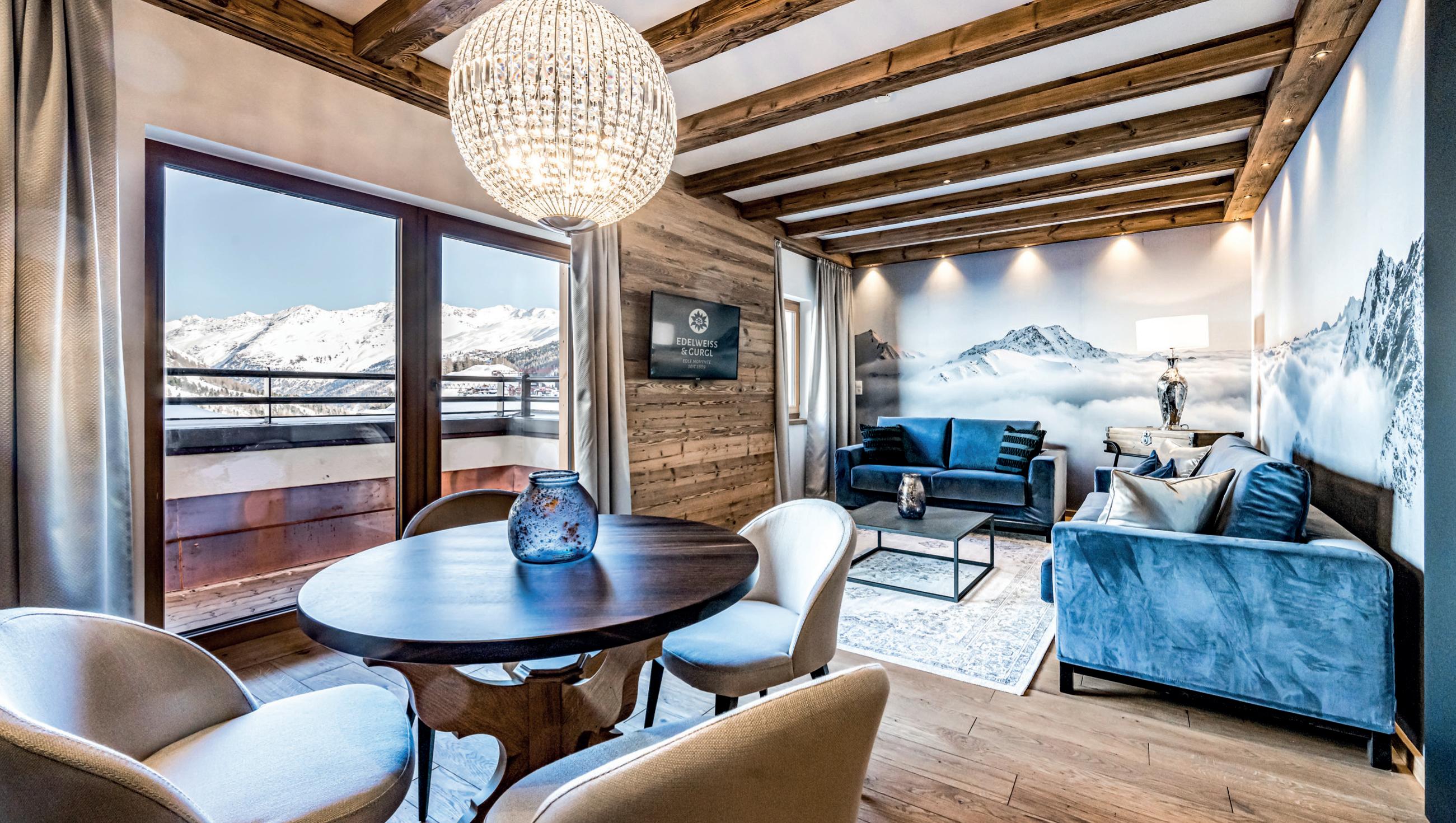


MYJOBINANUTSHELL...
Job? I don't know why but I've never had a job! I had the immense privilege to be born with a passion and have always taken the risk oflistening to my heart. This passion for skiing, for snow and the mountains, without knowing it, has filled my whole life and taken me beyond anything I could have dreamed of as a child .
HOWITALLBEGAN...
I was born in La Chaux de Fonds, in the Swiss Jura. It's a town in the mountains, at an altitude ofl,000m, where everything was possible and imaginable. As a child ofnature -of the woods in summer, and the snow in winter -I was very lucky to grow up in this outdoors environment. I was immediately hooked on skiing: the smoothness of the snow, the freedom, the speed, the jumps and the unique and ephemeral feeling of escaping gravity. I decided: this will be my life!
Skiing motivated me to start and finish my studies in mechanical engineering in order to develop innovative products. I then started Vertical Zoo Films, my production company, and convinced brands -who thought I was crazy -to follow me on my expeditions, creating freeride films around the world. My first adventure had begun.
At the end of28 pro seasons, I realised that more than 30 friends, and several thousands of skiers, have died while practicing this passion. Unacceptable.
It seemed 100% natural to me to found WEMountain -an avalanche online safety program -to respond to the obvious lack of education in the mountains. My second adventure had begun.
Since then, with the help of an amazing co-founder, I've put all my heart, passion, time and money into the project.
WEMountain is a unique ecosystem composed of all the actors of the mountain world: practitioners, brands, resorts and instructors. My role now is to shake up this international community; to exchange and consolidate around common values that are dear to me -namely freedom, pleasure and safety.
THEHIGHLIGHTOFMYCAREER...
I've always been a skier at heart -I don't look much at the tracks left behind, but always at the ones to be made! My ambition is that WEMountain will bring together all the actors of the snowsports industry and succeed in inventing the mountain of tomorrow. That would be, without any doubt, my most beautiful track!
WHATILOVEMOSTABOUTMYJOB...
Passion, people, travels, challenges, sharing, risks, successes, and for sure the extraordinary energy of the young blood that I work with.
THEHARDESTPARTIS...

The mediocre, jealous and lazy people full of bad energy that I cross paths with. Those who are part of the problem and not of the solution.
Verbier, my home ski resort. You get easy access to steep, exposed, challenging skiing. To ski with my two sons Charles (27years old) and Noe (24 years old), and maybe one day their children, and with my friends, is a dream. Good skiers or not, it doesn't matter, as long as we have fun and a great place to meet the next generation who come to ski these amazing mountains.
Dominiquein action:''I'vealways beenaskierat heart- I don'tlook atthetracksleft behind,butatthe onestobemade!"



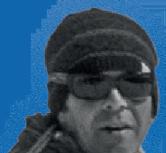
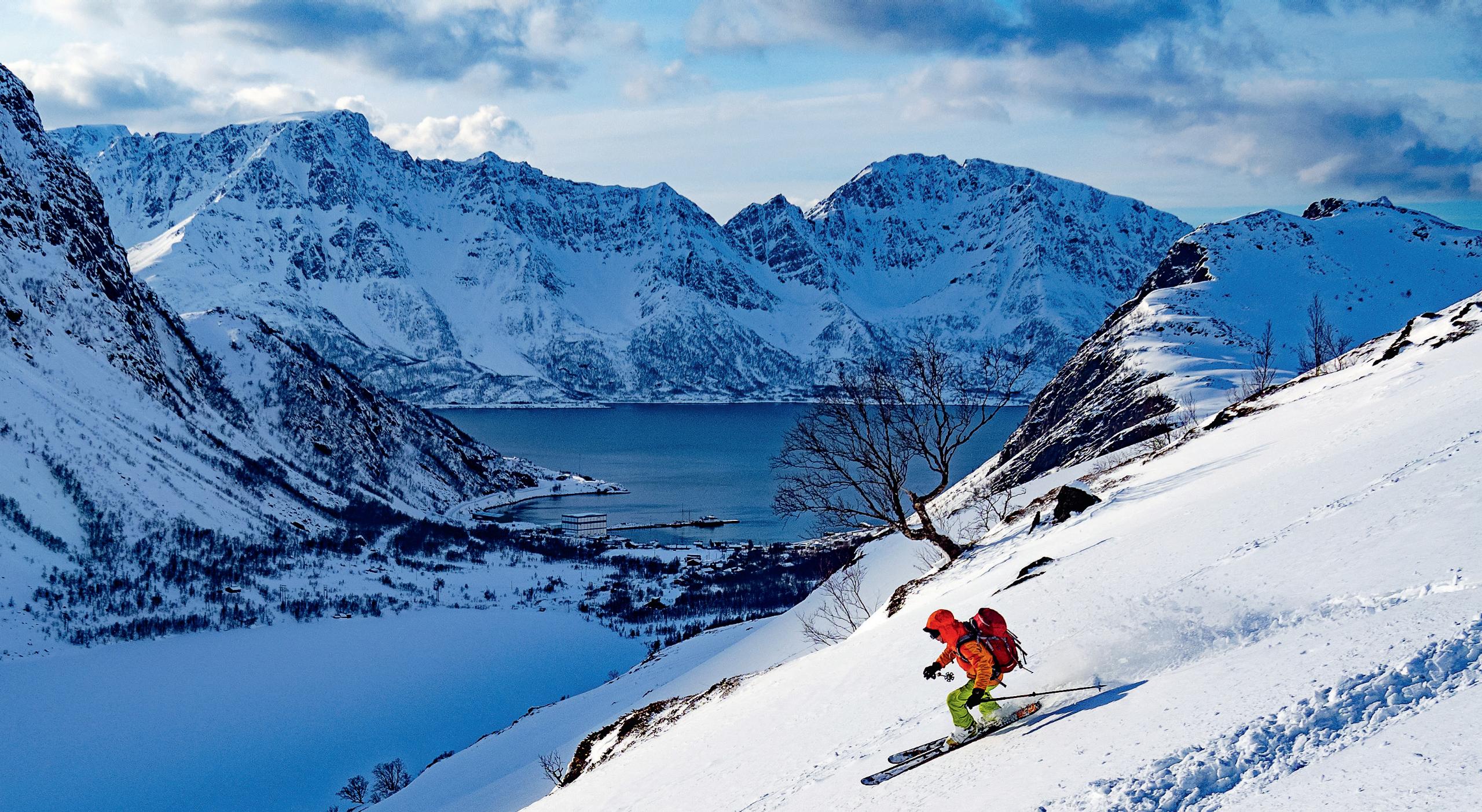
I've spent over 20 years leading ski trips around the world that range from off-piste skiing in my local ski resort of Saint Gervais to climbing new peaks in Antarctica. I'm often asked what the difference between ski touring and ski mountaineering is. In my opinion, the transition comes when we swap skis for crampons and ski poles for an ice axe.
When I ask clients to bring an axe and crampons on a trip, it often raises two concerns: where are we going that's so extreme, and will they weigh down my rucksack? The first depends on the nature of the trip, while the answer to the second is not as much as you may think. Modern materials and design technology mean high performance kit is remarkably lightweight. Still wondering why we need an ice axe and crampons? Imagine you're skinning to a summit and the snow goes from soft powder to hard wind pack. You could give up or put on ski crampons, which work with your skins to give extra grip and security. The terrain then either becomes too hard for crampons or too exposed for skis. At this point, you stash your skis on your pack, attach your crampons, swap a ski pole for an ice axe and carry on to bag that elusive summit. I've tested the items below to ensure you never have to forgo a summit due to kit:
1.PETZLRIDEICEAXE(2406,45CM)
I've been using this for the past five years. It's a really light ice axe that, at 45cm in length, fits neatly inside your rucksack, meaning you're less likely to stab yourself or anyone else with it, and unlikely to lose it in a fall. The axe has a steel head (some models have less robust aluminium heads), for when you have to cut a step or a platform to put your skis on when transitioning from skis 24 skiclub.co.uk
to crampons or back again. I've added a TRIGREST (£14; alpinetrek.co.uk) to mine -a sliding handle that makes it easier to hold on steeper terrain. £84.99; ellis-brigham.com

2.PETZLGULLYICEAXE(2806,45CM)
For those seeking something more technical, the steel pick of the Gully is more steeply inclined to give added grip on steeper terrain. The shaft is exactly the same as the Petzl Ride, perfect to slot inside your rucksack, and a great balance between weight and performance. A TRIGRESTis included with this model. £112;alpinetrek.co.uk
3.BLACKDIAMONDRAVENPROICEAXE(3736,50CM)
Those who dabble in mountaineering, but want a lighter weight axe that covers multiple bases, should consider the Raven Pro. The Pro version of the popular Raven adds a curve to the shaft, making it more comfortable and secure when plunging the axe into the snow, and shaving off some of the weight. The steel head is well made and very comfortable to hold with gloves on, with the addition of grooves in the bottom of the shaft to make it easier to grip. £120; blackdiamondequipment.com
4.BLACKDIAMONDVENOMLT(2406,45CM)
I'm very excited about this new Black Diamond tool. With a curved shaft similar to the Petzl tools, it's the same length, so will fit inside your pack easily. It also has an aluminium head and steel pick to keep the weight down and functionality up. I'm excited about the way you can change the pick to a steeper version for more
.6.BillGibson, capturedbyBruce Goodlad,heading fromsummitto seainOksfjord, Norwayshowing thatit'sinvariably worthbagging thatelusive summit...
technical ascents, and can also attach a hammer and hand rest (like the Petzl Ride). These features come as standard on the Venom Lt Tech version. Furthermore, you can use the tool as the handle for the Black Diamond Transfer Light Shovel. I intend to carry the Transfer shovel handle when the chances of avalanche are generally greater before using the Venom Lt axe as the handle -saving weight and the amount of kit I have to carry in the ski touring season. £140; blackdiamondequipment.com

5.BLACKDIAMONDTRANSFERLTSHOVEL(4086}
This is the lightest UIAA rated shovel on the market (all shovels and probes should be rated by the International Climbing and Mountaineering Federation, or Union Internationale des Associations d'Alpinisme, or UIAA).I initially struggled to take this shovel seriously as it's so light -over 200g lighter than my current version. The design works really well, cutting into avalanche debris and moving snow as effectively as anything else I have used. The handle folds up really small and the shaped handle is easy to hold. The shaped entry point where you slide the handle into the blade is brilliant. The handle only fits into the shovel in one orientation, so the sprung pin that locks the two together always locates first time. £110; blackdiamondequipment.com






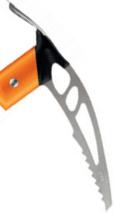

6.BCA5HAXEICEAXE/SHOVEL
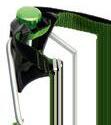

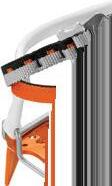




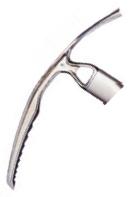

The BCAShaxe system has been around for several years and is the inspiration behind the Black Diamond Venom Axe and the Transfer Shovel combination. The blade on the Shaxe is excellent for digging, and the shaft has a removable handle that can be swapped for an ice axe head. The aluminium head works really well as an ice axe, although I preferred the previous steel head: it was the only ice axe I took to Antarctica the last time I went.
The other great thing with the Shaxe is that it comes with a kit that can easily convert the shaft and blade, combined with a pair of skis, to create a rescue sledge. This relies on having holes in the tip and tail of the skis, but I just carry a drill bit in my spares kit that fits into a screwdriver that I carry for adjusting bindings. If we are ever in the situation where we have to move a skier with a broken leg then I'm sure they won't mind me drilling a hole in their skis. £139.95; mountainsports.co.uk
In the mountaineering world we always use crampons made out of steel to give the best possible grip when climbing. When ski touring or ski mountaineering, crampons are usually worn for a short distance to reach a summit, so a crampon made from aluminium, or a mixture of aluminium and steel, is appropriate and saves a significant weight. The best attachment systems for ski boots have a wire bail at the toe and a clip at the heel; models with a plastic toe strap never seem to fit ski boots very well.
7.PETZLLEOPARDFLEXLOCK(384G)ANDIRVl5(5706)
The first time I saw Petzl's lightweight crampons with the front and back joined together with string I thought it was a ridiculous idea. But it turns out the static Cord-Tee system that links the front and back of the crampons is great, and the flexibility


of the cord means the crampons fold up incredibly small, so they take up minimal room in your rucksack. Lots of guides now carry these as a matter of course as they're so light. The Irvis is the same design as the Leopard, but the front half is made of steel, not aluminium, making for a robust crampon that copes well with more technical terrain. £129.99; ellis-brigham.com
8.BLACKDIAMONDNEVEPRO(3946)
These new Black Diamond crampons feature some Petz! design ideas, but use a wire to attach the front and rear of the crampons, making them more robust. They also have a really simple adjustment system and come with anti-baling plates. These stop damp snow sticking to the underside of the crampon (featured in the Petzl Irvis but not the Leopard). For me, this gives them the edge over the Petz! models as the wire is so flexible they fold up easily for storage. £150; blackdiamondequipment.com
"ThePetzl Ride Ice Axe fits neatly in your rucksack, meaning you 're less likely to stab yourself or anyone else with it"
Skiinginspringmeansdifferentthingstodifferentpeople.Forsome,it'sachance tosqueezeinsomelastturnsbeforethesnowmelts;forothers,it'stimetosoak upthesunontheterracesoftheirfavouriterestaurants;andforsomeofus,it's timetofreetheheelandstrikeoutforthelastpocketsofuntouchedpowder
As the days get longer, the Ski Club is here to help you find the perfect spring trip, whatever kind of spring skier you are. Ski Club
Freshtracks has a selection of April holidays that promise plenty of sun and, importantly, late season snow, thanks to the elevation and snow record of our carefully selected destinations in France, Italy and Switzerland.
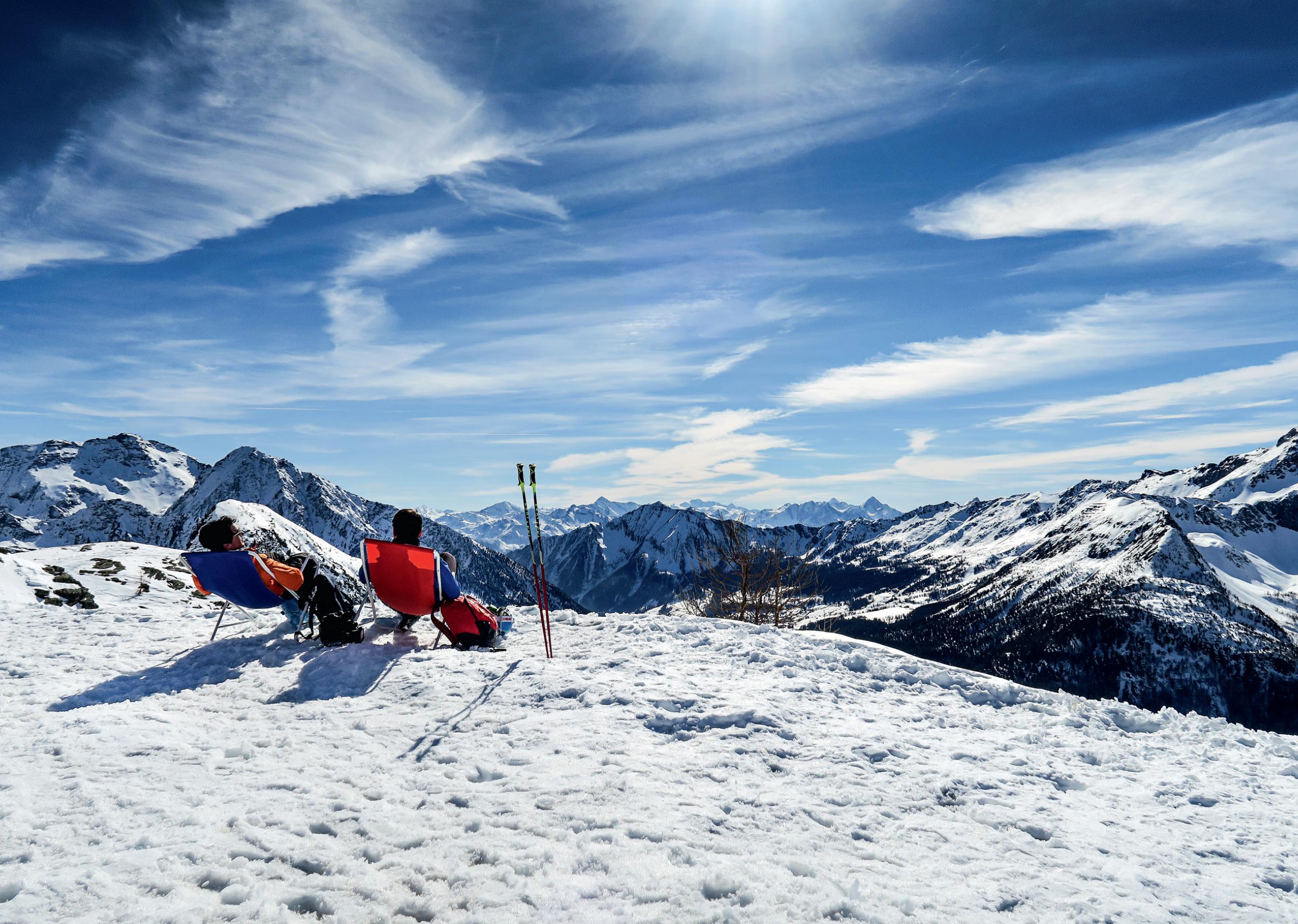
Sister-brand Mountain Tracks, meanwhile, offers diverse opportunities for those looking to go uphill as well as downhill. The ski touring specialist works with highly trained mountain guides, who will make the sky your limit this spring, helping you to bag towering summits such as Mont Blanc, the highest peak in Western Europe.
Emma Mancini, who manages our Plaine chalets as
the Club's Freshtracks Chalet Manager, is particularly excited about the late-season Freshtracks departures to Zermatt. "I am so tempted by the end of season Bank Holiday off piste trip to Zermatt," she told Ski+board. "Having never skied in Switzerland, the lure of the views of the Matterhorn and exploring the mountains in the spring sunshine would be perfect way to end a season."
The area around Zermatt features prominently in this edition of Departures: the Monterosa region in eastern Switzerland, which straddles the Swiss-Italian border in similar vein to Zermatt-Cervinia, features countless summits, long descents, and well-appointed mountain huts -perfect for a spring tour! At its heart is Alagna, the jewel in the crown ofltalian off-piste skiing and a perfect destination for late season powder hunting.
The ltalo-Swiss Monterosa ski region spans several valleys and peaks below the Monte Rosa massif. With more than 38 peaks over 4,000m, visitors enjoy scenic and challenging climbs and varied descents, sleeping in Swiss and Italian mountain huts along the way. Add a two-day ski ascent and descent of Mont Blanc for extra kicks.
Whowith? MountainTracks
When?Variousdatesthroughouttheseason
Whofor? Skill4 // Stamina 3
Howmuch?From£2,035,includingsixdays'guided touringandfivenights'accommodation in Zermattand mountainhuts.A two-dayextensionwith a MontBlanc skiascent/descentisavailableat the endof thetrip.
One of the most charming resorts in the Monterosa ski area, Alagna is one of the best freeride destinations in the Alps, yet remains largely undiscovered. This long Easter weekend enables you to escape the crowds, improve your off-piste skiing and soak up the spring sunshine in this authentic Italian gem of a resort.
Whowith? SkiClubFreshtracks
When?6 April-10 April2023
Whofor?Advanced(Purple)Off-pisteskiers
Howmuch?From£1,499,includingflights, transfers,three-and-a-halfdays'skiingwith guides andthreenights'halfboardandonenightb&b at a 3-starhotel.

One of the Club's favourite resorts, Tignes plays host to some of our earliest and latest season trips latest thanks to its high elevation and strong snow record. This weekend trip is your chance to squeeze in some turns before the snow melts, spending three days with instructors to hone your technique and finish the season in style.
Whowith? SkiClubFreshtracks
When?27April-01 May2023
Whofor? Intermediate(Silver)andAdvanced(Purple) Off-pisteskiers
Howmuch?From£799,includingreturntransfers, fournights'accommodationona twin-sharebasis, andthreedays'skiingwith instructors.

Switzerland's quiet Western Oberland region is ideal for ski touring with fewer glaciers, less imposing peaks and less exposure to the elements than the Bernese Oberland. Warm up for this high-level ski tour with lift access from the sleepy resort ofLeysin before bagging six summits in remote and wild terrain, staying in rustic mountain huts.
Whowith? MountainTracks
When?Variousdatesthroughouttheseason
Whofor? Skill2 // Stamina 3
Howmuch?From£1,655,includingsixdays'guiding ona maximum1:6 ratio,threenights'b&bhotel accommodationandfournights'halfboardin mountainhuts.

Zermatt is another firm Ski Club favourite, celebrated for its reliable late season snow. Explore the Matterhorn Glacier Paradise region with our hand-picked mountain guides, nipping across the Swiss/Italian border into Cervinia if conditions permit, and soak up the spring sunshine on manicured glacial pistes at the foot of the Matterhorn.
Whowith? SkiClubFreshtracks
When?27April-1 May2023
Whofor? Intermediate(Silver)andAdvanced(Purple) Off-pisteskiers
Howmuch?From£999,includingthreedays'skiingwith mountainguidesandfournights'b&bin a 3-starhotel.

This memorable trip includes a five-day acclimatisation and training phase, which will see guests ski tour some of Chamonix's classic routes before making a bid for the summit of Mont Blanc (4,808ml via the Arete Royal and Dome du GoO.ter.If the conditions are right, you can even opt for a heli-drop on the Italian side of Mont Blanc on summit day.

Whowith? MountainTracks
When?Variousdatesthroughoutthe season
Whofor? Skill3 // Stamina3
Howmuch?From£2,195,includingsixdays'skiing with IFMGA-qualifiedmountainguides,fournights' halfboardin hotelsandthreenights'halfboardin mountainhuts.

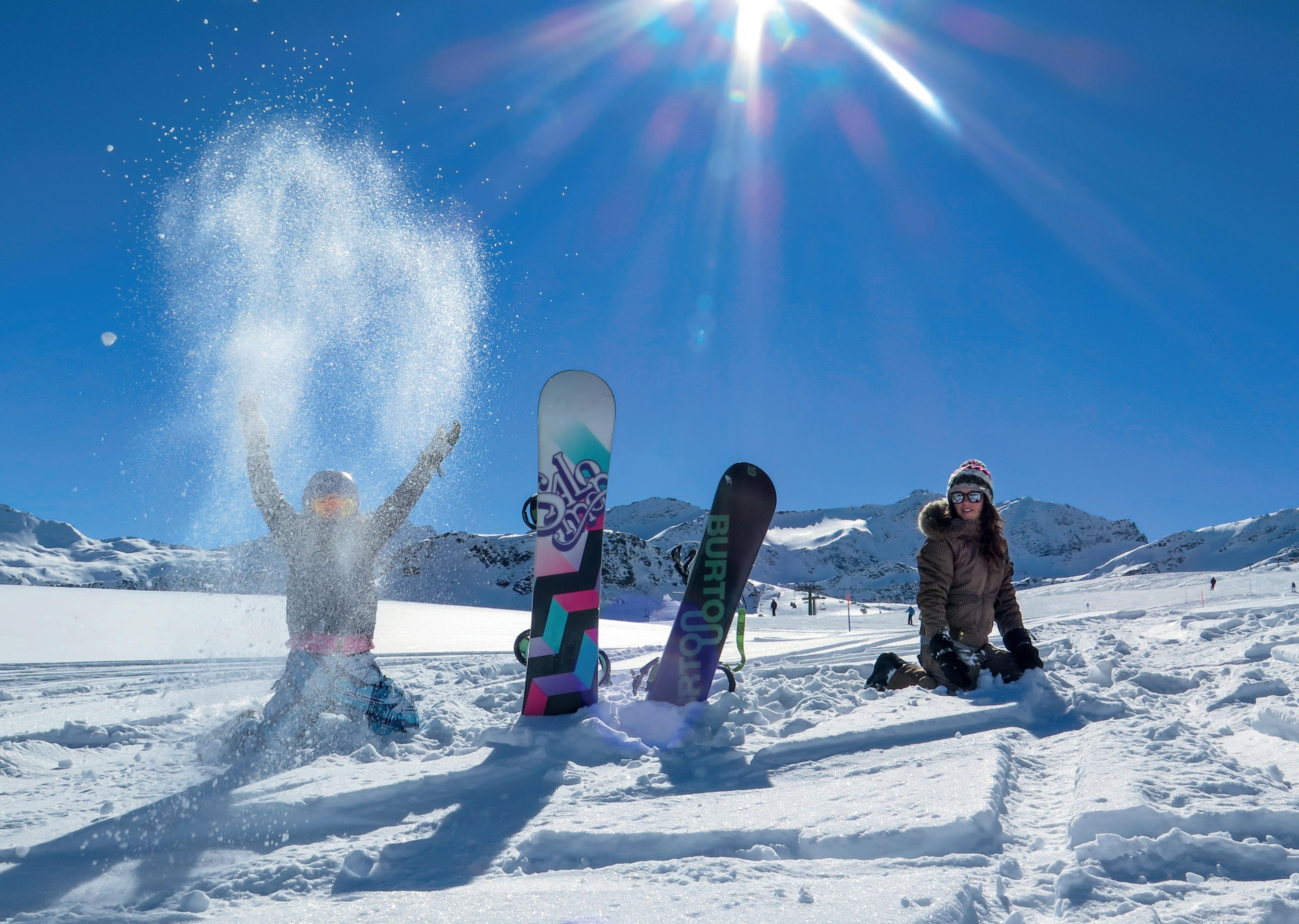











No, this is not a painting you're looking at. The impossibly silky-looking snow that snowboarder Ben Ferguson is about to land into, like a giant duvet, is as real as it gets; found in Alaska, land of the steep and deep.
The image is taken from Ben's new movie FleetingTime. The film solidifies the 27-year-old's evolution from a top-tier Olympic halfpipe snowboarder to one of the greatest big mountain freeriders of today.

During the two-year filming project, Ben and crew travelled to not only Alaska (Haines and Valdez), but also Whistler, British Columbia; McCall, Idaho; Jackson Hole, Wyoming; Lake Tahoe, California; Japan, and to Ben's home in Oregon at Mt. Bachelor and Mt. Hood, honing in on deep powder, steep peaks and massive jumps.
Starring alongside Ben are some of the biggest names in snowboarding -icons, Olympians and innovators. "Everyone in the movie is an amazing snowboarder; they're some of my favourite people to ride with, and they push me to ride better every time we go out," says Ben.
Ben's goal for FleetingTime was to make a classic snowboard movie like the ones he grew up watching: "Afilm that lives up to those same high standards, stands the test of time and inspires the next generation to get out and ride," says Ben.
Well, it certainly inspires us to get out there ... in powder just a silky smooth ... SCGB Freshtracks Alaska trip 2024, anyone?

----1v


Ever dreamed of skiing with an eagle? Head to Pointe de Nyon in Morzine and you can do just that. Here, at an altitude ofl,S00m, at the Pointe de Nyon restaurant, Jacques-Olivier Travers has founded Les Aigles du Leman -a full aviary of birds of prey, from the gigantic Andean condor to the bald eagle, to raise awareness of conservation while offering visitors unique encounters with these remarkable birds. One of which is the chance to ski with Fletcher, a white-tailed eagle.
S+b editor Nicola was there last month. "Sitting on the Raverettes chairlift next to Fletcher, who was sat perched on Jacques-Olivier's arm, was wonderfully surreal. He was so excited to fly, having not flown for two days, and kept attempting to do so (Jacques-Olivier had good hold of him with a harness)."
At the top, Jacques-Olivier let Fletcher go and off he soared above the piste, Jacques-Olivier, Nicola and her family chasing behind on skis. "Every 30 seconds or so, Fletcher would swoop back to his

owner for a treat, flying so close to us that at one point his wing brushed my hat," says Nicola. "With a wingspan of2.lm, it was an incredible sight to see him fly so close."
"I wanted to prove that a bird born in captivity can fly like a wild one, ifwe teach him," explains Jacques-Olivier. "And for that I use skis. Because these eagles are so fast, I can't follow Fletcher on foot. Skiing is wonderful because we travel at the same speed ... well, he's a little bit faster than me!" Fletcher -who is 14 years old and has been
with Jacques-Olivier since he rescued him 10 years ago from a zoo in Germany -is a figurehead for rewilding its breed in the area. Last summer, Jacques-Olivier and his team released four white-tailed eagles that had been bred in captivity into the wild. With those four still going strong, the team plan to release 10 more this year, with the aim to release 80 by 2030.
The experience costs €75pp; there are also free daily shows at Pointe de Nyon restaurant. lesaiglesduleman.com;morzine-avoriaz.com
The clue is in the name: the Festival de Dingue -or rather, the Crazy Festival -takes place in Anzere on 18 March and promises to have your head spinning. The festival centres around the extreme sport of base jumping, where spectators have the chance to witness Switzerland's most adrenalinehungry daredevils leap out of a helicopter and soar above Anzere's 2,000m peaks wearing only a wing suit. There are also paragliding displays, live music and film viewings -it's hands down one of the most exciting festivals in the Valais this winter. anzere.ch

Head to Saint-Gervais this winter and you'll get to ride the newly renovated Mont-Blanc Tramway. After 15years of renovation works costing a cool 100 million euros, the new generation Mont-Blanc Tramway -with its four new trains (named Anne, Marguerite, Jeanne and Marie) -transports skiers, hikers and tourists through forests and alpine prairies, up to the Bellevue Plateau at 1,900m and the Le Prarion ski area. Opened in 1909,this rack and pinion railway is the highest in France. ski-saintgervais.com
If you're planning a trip to the picturesque Saint-Martin-de-Belleville in the coming weeks and fancy something a little bit different for apres-ski, then read on.

Throughout the winter, the beautiful 17th century Saint-Martin-de-Belleville church has been stage to a series of evening classical and jazz music concerts. Held at 6pm, the next concerts are scheduled for 13 March, 27 March and 10 April, and best of all are completely free. What better way to unwind after a day's skiing?
st-martin-belleville.com
TWithskiingup
to3,600m,skiing doesn'tgetany
It's set at 1,650m in the heart of the Ecrins Massif, between Grenoble and Brian9on. With its glacier reaching up to 3,600m, it's one of Europe's highest ski areas -you can ski here throughout much of the year.
With 43 lifts serving a mega 410 hectares, Les Deux Alpes is one of those resorts that really does have something for everyone, whether you're a newbie finding their ski legs on the five free ski lifts at the bottom, or a seasoned skier with a passion for technique-testing valley runs and off-piste.
Looking for steeps and deeps? L2A is connected to La Grave, home to some of the most demanding skiing and snowboarding in the world. The park, meanwhile, is world class, with lines for families, newbies, intermediates and experts.

Non-skiers in tow? There's plenty of 3 action to get stuck into besides skiing, from § ice skating and tobogganing to on-snow s: e-mountain biking. Or, for something a
little more tranquil, wrap up for a torchlight walk through the village.
It's in winters like these, when the snow is far from forthcoming, that we really appreciate resorts like Les Deux Alpes. With skiing up to 3,600m and a large glacier to play on, you can head off merrily on your holidays knowing that, whatever happens with the weather, there'll be at least some skiing to greet you at the other end.
The lifts in Les Deux Alpes have been managed since December 2020 by SATA Group, which also manages the ski lifts in Alpe d'Huez and La Grave.
As part of the takeover, the group is investing €128 million in Les Deux Alpes over five years (until 2025) to redesign the ski area and invest in more modern lifts. Modern lifts mean fast lifts, which means less queuing and more time skiing.

Now's the time to hit up one of the resort's many events, too. Calendar highlights for this season include the Snowboard Cross World Cup, Ski Cross World Cup, 2023 Rise Festival, avalanche blaster training, dog handler training, a Night Snow Trail and the renowned End of Year Festivities.
Pistes:200km / Skilifts:43
les2alpes.com
team in Les Deux Alpes is working endlessly to support the conservation of the national park to ensure the longevity of year-round skiing and glacier structure. The highest part of the glacier forms a dome where the sun's rays are dispersed over the larger gentler slope, slowing the rate of melting.

The snow engineers are utilising snow guns and water management, daily snow grooming, installation of snow barriers as well as intensive snow analysis to help support the conservation.
But there's still time to enjoy it! Accessible for skiers, snowboarders and pedestrians via the Funiculaire du glacier, you get mind-blowing 360-degree views from the top.
March 2023 33 \ .

WeaskedSkiClubReps,Members,HQandthe S+bteamtoreveal theirfavouriteAlpineresortsforasummertoremember
Katharine Bewlay, SCGBMember
You can be active and also watch others being even more active. The resort offers the perfect combination of walking for all ages and abilities as well as amazing spectator sports; my favourite memory from my last visit is watching the elite athletes battle it out at the Climbing World Cup -two huge outdoor walls are erected in the centre of town -and also the Ultra-Trail du Mont-Blanc, the infamous mountain ultramarathon race.
There are endless eating options, swimming, great campsites, free campervan parking, wild flowers, wildlife and -the best bit of all -the chance to feast on wild myrtilles (blueberries). chamonix.com
Bruce Goodlad, Ski+boardBackcountryEditor
For climbing and mountaineering it is unbeatable. The mountains are amazing and the access that is available using the lift system makes peaks that would typically be multi-day objectives accessible in a long day.

I remember spending a week in Zermatt one August introducing clients to its magical peaks, the highlight
being the traverse of the 4,164m Breithorn, a perfect mix of glacier travel and movement on rock snow and ice. zermatt.ch
Nicola Iseard, Ski+board Editor
"People come here for the winters and end up staying for the summers." So goes a saying among many Morzine locals (and it's what happened to my husband and I, having arrived 10 years ago and never left). Yes, summers in the Portes du Soleil are pretty epic.
The PdS is the epicentre of France's mountain biking scene. There are 600km of trails across 12linked resorts and two countries. The variety is outstanding -yes, there are plenty of grit-your-teeth-and-send-it Championship courses, but there are also miles of wide and mellow routes across scenic meadows for people just starting out.
For those who prefer to explore the mountains with two feet firmly on the ground, the PdS has 7,000km of marked walking trails, many of which are accessible via the extensive summer lift system. Technical climbs such as the three-hour Roe d'Enfer route, lake walks with views, family friendly rambles -just take your pick.
There is plenty of action to be had on the River Dranse too, from rafting, canyoning and hydrospeeding to airboating and canorafting -book via the superb Frogs Rafting team (frogsrafting.com). Or take to the skies and try paragliding ...
David Marsden, SCGBMember
We had great weather -ideal for enjoying the open air pool in the centre of Morzine. The mountain biking was really well organised and exciting. My favourite memory is having the best burger and beer in Les Gets after a day's mountain biking. Perfect. morzine-avoriaz.com
Angus Maciver, SCGBChairman
The resort has so many things to do and summer events: a hiking festival, climbing championships, gourmet walks, e-MTB trails (with charging points), a mountain kart track -something for everyone, no matter your interest or fitness level. The highlight for me was the Tour du Miroir d'Argentine hike, which starts and ends in Solalex on the banks of the Avarn;on river: a popular spot with families, nature-lovers and climbers. The hike takes in the impressive Miroir d'Argentine: a shimmering slab of rock, smooth as a mirror. alpesvaudoises.ch
Joe Clayton, SCGBStaff
There are excellent mountain bike and hiking routes, white water rafting in the valley and amazing weather. My favourite memory is spending the morning climbing (cycling) up the mountain to meet friends for a prolonged picnic with terrific mountain views, before enjoying the decent back down to town. la-plagne.com
Warren Smith, Ski+boardTechnique Editor
After spending 28 summers skiing in the Alps, I have settled on the resort of Cervinia in the last 10 years for my summer fun. The main reason being that there is access the incredible Zermatt/Cervinia glacier between 3,500m and 3,900m; it means we can run our Academy courses and instructor training all year round.
The mountain biking is also great in Cervinia and we usually get the clients out on the bikes if they have the energy in the afternoons. I love to mountain bike, more recently e-biking, go climbing and then plunge in the glacier lakes for some cold water therapy. My favourite Cervinia memory has to be from August 2013 when
.A.Walking, climbing,eating: theChamonix regionhasitall

I skied fresh powder -actually good-quality powder -in the morning and then went white water rafting in the afternoon. cervinia.it
Jane Billington, SCGBRep
I had a brilliant time going on fabulous walks, expertly guided by fellow SCGBRep Ness Cornborough, surrounded by wildflowers and the scent of newly cut hay; hop on the cable car up to Schatzalp to see the alpine garden full of edelweiss and orchids and then follow the walking path back down to town.
We also took the Bernina Express train and got off right at the top of the pass by the lake, and walked down towards Italy through some stunning scenery. We took various trains throughout our visit, which were great value and really convenient for taking us to or back from various walks. klosters.ch
T Upandaway: Taketotheskies inMorzine...

Gabriella Le Breton, Ski+boardEditor
When I first visited Verbier in summer, it was for the Verbier Music Festival that takes place each July. I was delighted to discover that the town I'd only ever known carpeted in snow was transformed into a buzzing hub for cyclists, hikers, climbers and classical music buffs, bursting with gem-coloured wildflowers.
The Verbier Festival is the headline show of summers packed with cultural and sporting events that range from traditional cow fights to meditation courses. Aside from enjoying performances from the world's greatest living musicians, I love Verbier in summer for the scenic hikes to duck-egg blue glacial lakes high above the town, tackling the via ferrata routes at Les Gentianes, reaching the peak of Mont-Fort on foot and taking yoga classes with the former Freeride World Tour champ Emilien Badoux on the lush La Chaux pasture. verbier.ch
to graceArc 1950'svillage scene,Bear Lodgeprovesa winner
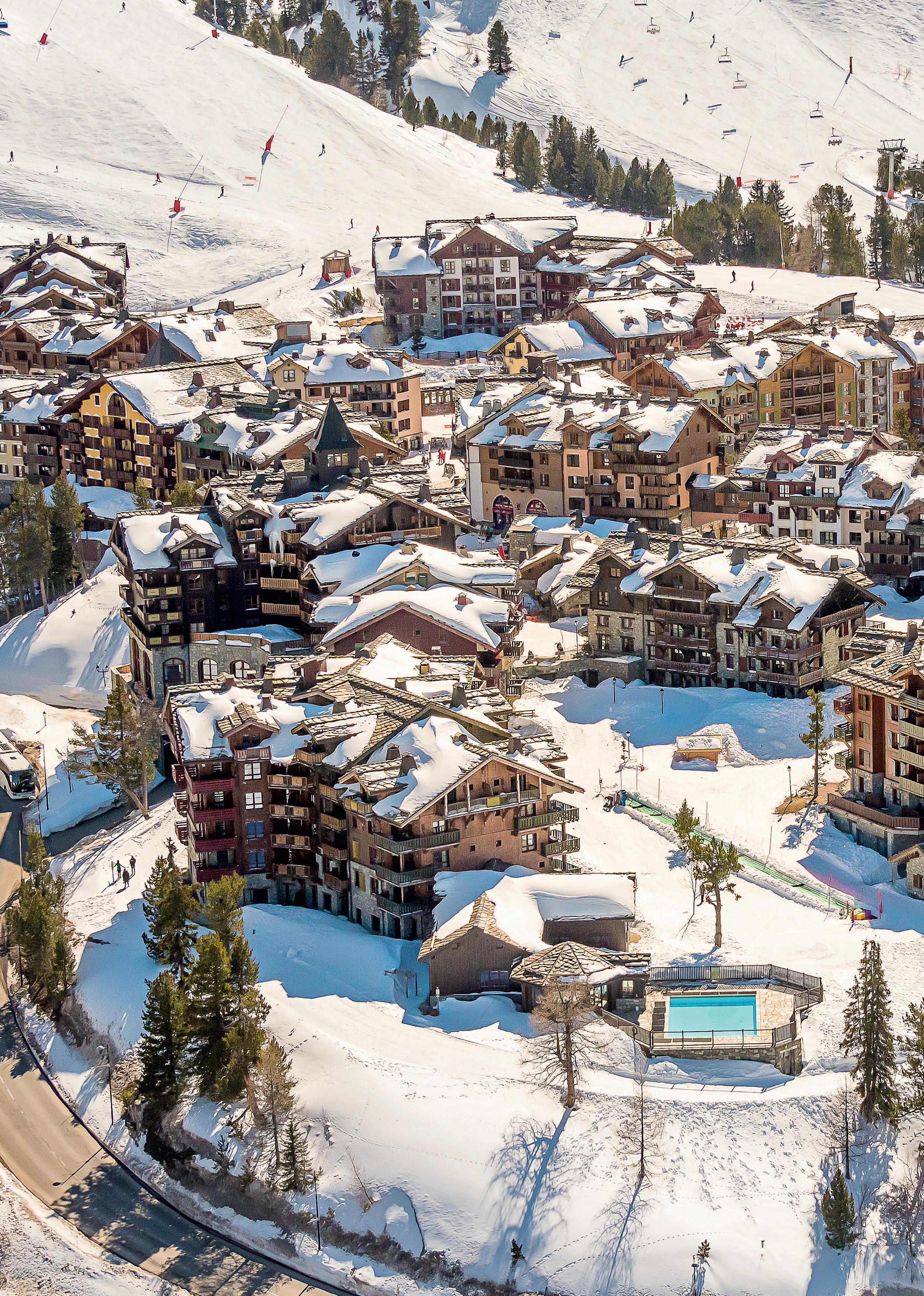
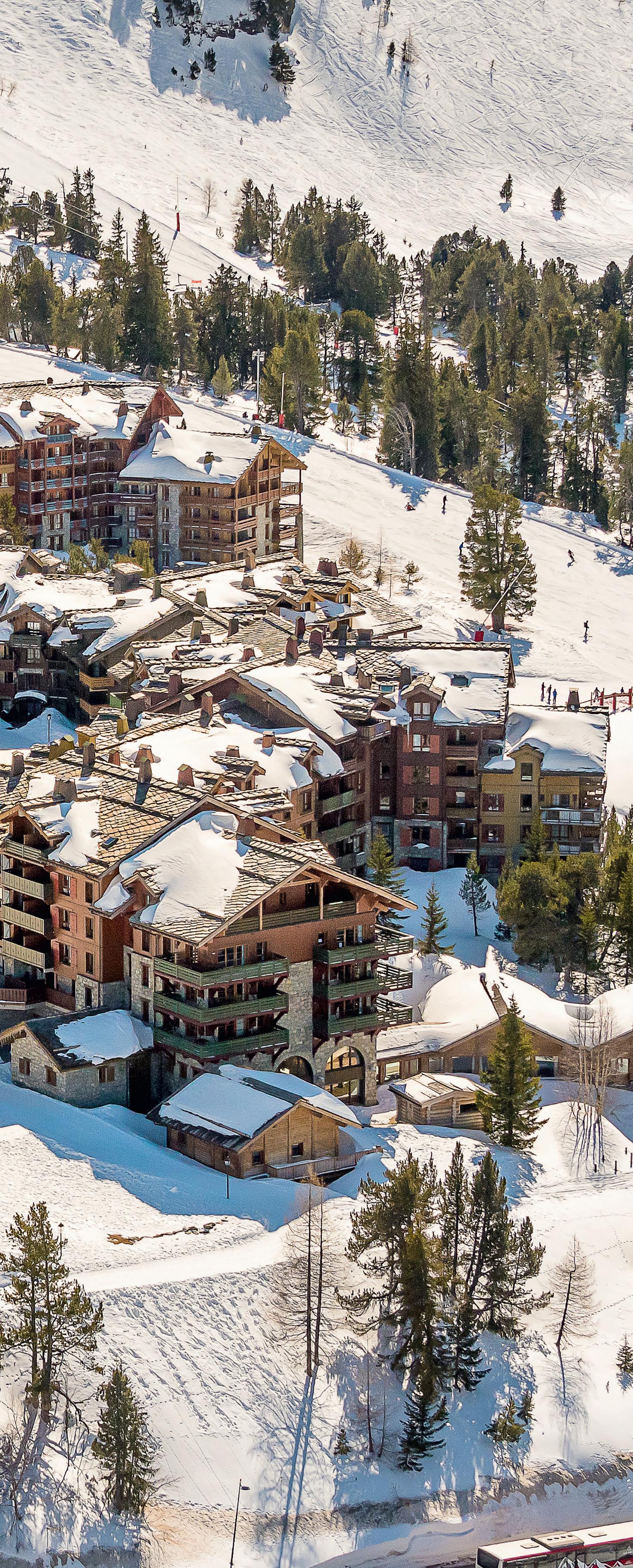
Skiingwith young children, as so many Members know, has its moments. There are battles over gloves, dramas over ill-fitting ski boots, tantrums about carrying skis and more overpriced (and spilled) hot chocolates than I care to admit. Yet we persevere in the hope that our passion for skiing, and all the glory of the mountains that goes with it, might eventually be shared by our progeny. Golden visions of ripping through powder fields together in later years sustain us as we cling to their tiny bodies on precarious chairlifts and try to forget the sound of their tears as we leave them at ski school. My older daughter Mathilde had joined my husband, Ed, and me on four ski holidays before turning five years old, but it was on our last one, to Arc 1950 in January, that she had a true breakthrough. It wasn't just that a few hours of private tuition with the charming Manon from the ESF had helped her to crack the snowplough, learning to turn, slow and stop by herself, it was a blissful moment on the Pre Saint Esprit 39 chairlift f-as we pulled down the blue canopy and she

exploded with excitement.
"Everything's gone blue!" she squealed with joy looking around with delight. "We're going over a road! We're going over people! We're soooooooo high up! The snow is sparkling like diamonds! Look at the mountains -they're ginormous!" Ed and I had spent the last five days riding
chairlifts across the sprawling 200km Les Arcs/ Peisey-Vallandry ski area, taking all the above entirely for granted. Suddenly, we were seeing our surroundings, and the simple magic of riding a chairlift, with fresh eyes thanks to Mathilde's enthusiasm. At the top of the lift, having first marvelled at the proximity of the towering Aiguille Rouge, we asked her which piste she might like to follow next. "I don't care, so long as it goes down and we go really fast!"
Ed and I beamed, not just because it's the philosophy we had adopted over the course of our week's holiday in the aptly named Paradiski ski area. Arriving as thick, fluffy snowflakes filled the air, we had spent our days letting our skis lead us around as we warmed up our Mum/Dad bods on the expertly groomed pistes that criss-cross the extensive ski area before plundering its easily accessible and little-touched off-piste terrain.
Our base for the week was Bear Lodge, the first hotel to grace the small village of Arc 1950 -and recently lauded 'Best New Ski Hotel 2022' at the World Ski Awards. Sandwiched between the stark architecture of Arcs 1600, 1800 and 2000, Arc 1950 was built by the now-defunct North American real estate behemoth Intrawest in the developer's trademark Disney-esque interpretation of Alpine cute. A cluster of timber and stone buildings house inviting little bars, restaurants, cafes and shops as well as self-catered apartments comprising 3,000 beds, all linked by winding snowy trails. It's hugely popular with well-heeled European families, who indulge in leshoppingavecskis aux pieds and venture out for organic snacks at Le Bob Cafe or aperitifs and Brittany oysters at La Vache Rouge, pulling their children along on sledges, tightly bundled in matching Moncier down.
Bear Lodge is a welcome addition to this gentile scene, adding 30 hotel rooms and 12 self-contained chalets. The sizeable piste-side Lodge, which sits just below the original village, is arguably more of a chalet-hotel, with hotel guests benefiting from chalet catering (breakfast, afternoon tea and dinners with complimentary wines) and chalet-style service delivered by charmingly clean-cut, eager to please young seasonnaires.
The Lodge was conceived by Andy Sturt, who founded the Alpine chalet specialist VIP SKI in 1989.Andy successfully revived his baby after it went into

administration in 2020, raising it from the ashes with a selective property portfolio in exclusively high-altitude resorts (the average altitude of a VIP SKI property is 1,776m).Bear Lodge, the brand's flagship property, offers all the VIP signature touches, like the friendly 'never oily' service, excellent food, professional childcare and inclusive resort transfers. On top of this, there's a slick in-house ski rental outfit that operates out of the large ski room (with individual lockers for each room and chalet), a capacious wellness area, private cinema and a lively bar with games room.

As we soon realised, Bear Lodge is ideally placed for staging quick getaways from (and returns to) the Bear Cubs kids' club, placed as it is on the blue Baptiste Giabiconi piste at the bottom of Arc 1950, just by the Marmottes and Bois de l'Ours chairlifts. The former whisks you up towards the high-altitude Grand Col and Aiguille Rouge areas, while the latter delivers you to the Col des Frettes, from where you can enjoy off-piste lines under the chair or drop over the ridge to the wide-open blues and reds above Arc 1800.
BuyaParadiskiPremium liftpass(€415forasix-day adultpass)andyougetalotmore thanskiing.Hereareourfive favouriteperks:
1.OnefreeguidedFirstTracks session
2.OnefreerideontheTyrolienne zipwire
!z3.Unlimitedaccessto13priority
;;li liftqueues
if: 4.Onepriorityqueuingaccess totheAiguilleRougelift
<C 5.UnlimitedaccesstotheLuge 1800andLuge2000tracks
Reining inthespeed unicorn...
VIPsignature touchesalaBear Lodgeinclude a poolwithaview andstylishrooms
BearLodge sitsintheideal spottoenjoy off-pistelines - ordropover theridgeto wide-openblues andreds
Blessed as we were by fantastic snow, and gaining confidence as the girls hit their stride at the kids' club, we started exploring further afield, lapping the tree runs and meandering, tree-lined pistes in the quiet Peisey area beyond Vallandry.
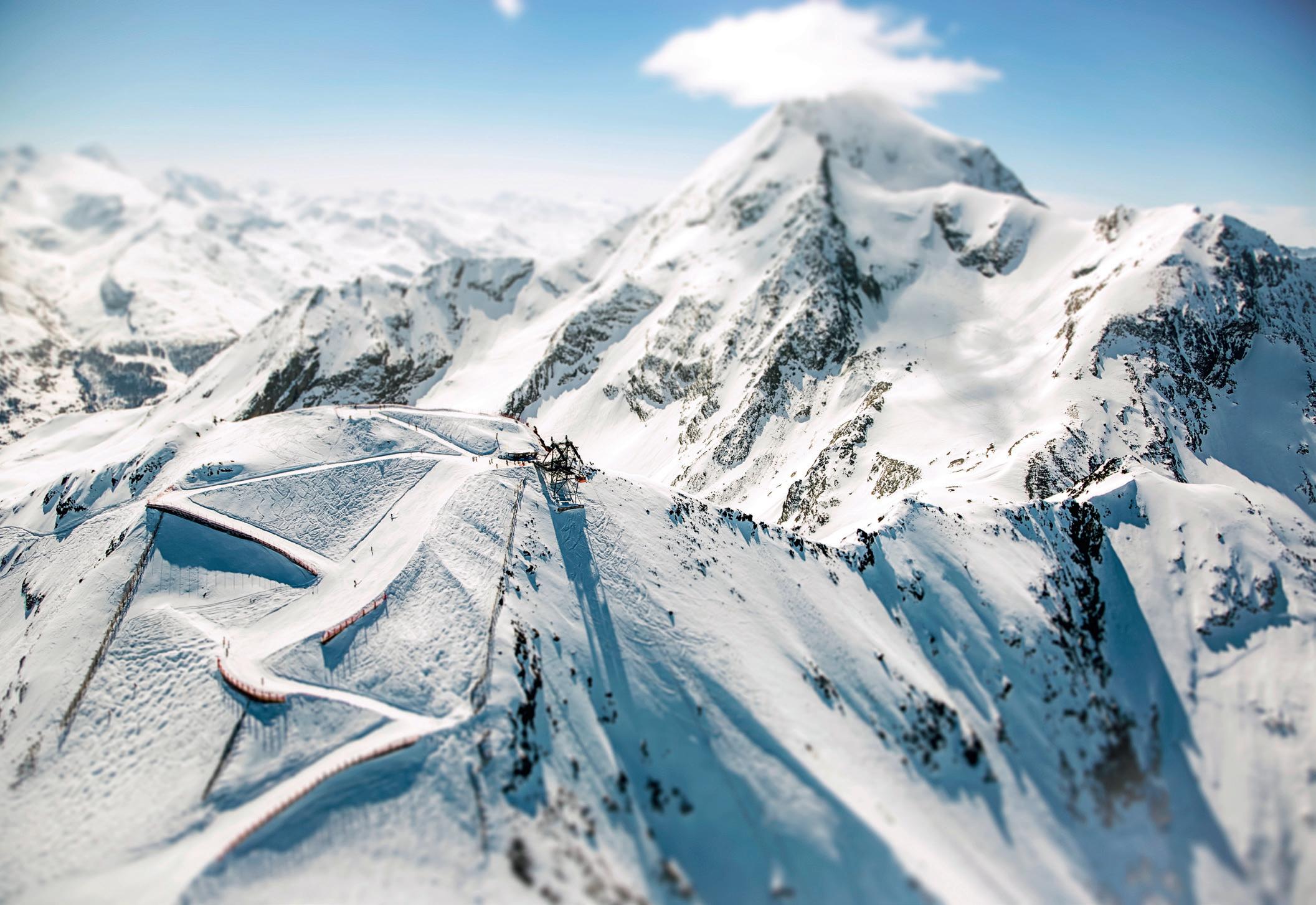
After such brilliant ski days, we returned rejuvenated to Bear Lodge to scoop up our two little bear cubs. We would take Mathilde for some ski runs just outside the hotel, while Amalia watched from her sledge; grab some cake and tea from the afternoon tea spread laid out in the bar, or head straight to the pool and hot tub, which were hugely popular with both girls. We quickly found our holiday rhythm, taking the girls for an early kids' dinner at 5pm before putting Amalia to bed while Mathilde joined the pyjama club -an excellent service offered by the nannies, who supervise films for the kids in the cinema from 7-9pm for just €10, enabling parents to enjoy a tranquil dinner together.
While we savoured the rare time adeux, several fellow guests formed a big social table. Thanks to a strong relationship with the local ESF, Bear Lodge offers guests the opportunity to join two complimentary mornings (2.5 hours) of guided skiing with an instructor. The mornings not only help guests to navigate the extensive slopes of Les Arcs, but also bring them together socially, with many of them continuing to ski together for the rest of the week, or at least gather on most evenings in the bar and restaurant.

Together with our unfailingly cheery hotel hosts, they became a big extended family for Mathilde and Amalia who were doted on, played with, chatted to, and generally treated like royalty. And, as any parent knows, happy children make for happy parents, particularly when they get to ski all day!



18:40 Land in Toulouse-Blagnac, grab my cheapo car rental and, after a typically French-to-English exchange, head for the Spanish hills. Destination: Baqueira-Beret, Spain largest ski resort, located in the Val d'Aran on the northern side of the Pyrenees. Host to the 2023 Freeride World Tour season opener competition.
21:50 Pulling into Salardu -a small historic town 10 minutes' drive from Baqueira (and a popular base for skiers) -I dump the car and jump into a waiting taxi, restaurant-bound to join my merry crew of friends who are getting stuck into beers and tapas. Hooray for Spanish dinner time!
10:00 Late to bed, late to rise -Spanish style.
10:05 The car battery's flat. Roadside assistance is closed for the weekend. We cut our losses (it's been snowing for 24 hours solid -it's a powder day up there) and order a taxi to Baqueira. Seems there's only two in the entire Val d'Aran and we pay €35 for the 10-minute drive. It doesn't take long to learn that a car is essential for skiing here. There are dozens of car parks (around €15 a day) but no real public transport network, or transfers from the airport. It's a surprise for the modern skier, with the resort extending beyond Baqueira and Beret to a string of villages down to popular Vielha, 20 minutes away.
But this is not the Alps and it's how the Spaniards do it. A bus goes every hour, though we didn't manage to catch it or sight of it over the weekend, and a €6 locker under Baqueira's lift station means you can dump skis and more easily thumb a ride.
10:20 We've just found out that the Freeride World Tour competition has been postponed to tomorrow, with low
visibility forecast all day. It leaves me free to ski the area and get my bearings. Or not ... Forget the judges not being able to see the riders from a few hundred metres awayit's a full-on whiteout and I can't even see my feet.
10:45 The lift ticket queue is more every man for himself, and I get into the swing of it remarkably quickly. To avoid the hustle, a hack here would be picking up an electronic BaqueiraTICKET from any ski hire, hotel or
shop that lets you top up/buy online. While the reputation ofBaqueira is that it's expensive for the Pyrenees, it's not in Alps terms: a one-day ticket in Baqueira is €62, and eating and drinking is considerably less than at its Alpine counterparts. On the slopes it's pretty much exclusively Spanish that you hear, and there's half the amount of people skiing on 165km of piste almost entirely above 2,000m in elevation (with 1,100m of skiable vert) on mountains pummelled by snowstorms. It's also (unsurprisingly, with the Tour stop here), great for freeriding. But today is definitely not the day to be venturing beyond the ropes.
11:15Up the 'huevos' (gondolas) and on to the slopes. Visibility is nada and it's impossible to get a feel for the place. What you can get a sense of is fear for your legs as a hundred skiers use each other as piste markers, as we blindly find the same few metres to turn in. It's survivalmode skiing, and I'm not sure we're even on a piste.
11:45 Out of nowhere, the Mirador lift appears -a four-man heading to the heights ofBaqueira. We get on, pleased with ourselves for escaping the bubble of chaos.
11:55 "Have we died?" says my buddy's voice from the other end of the chair, who's just a blur, as we levitate through the mist, on and on. Are we even moving?!
12:05 At the top of Mirador, I couldn't feel any more like an idiot, standing there waiting for someone, anyone, to appear and point the way. Ten minutes later two do, and we scramble down the mountain together, sacrificing the front runner if we're headed for a cliff. The snow is beautiful underfoot, but thank God no one can actually see me ski this.
13:00 Like a mirage, the Moet & Chandon bar appears through the clouds and we bump into half our crew. Within minutes the other half appears. DJ, cava, overpriced food -this isn't the Baqueira I've been expecting but we're buzzing.
Historic towns and villages pepper the Val


14:00 Ready to call it a day, I'm pressed into doing an infamous 'one last run', which turns out to be a winner, heading over to Beret with its mellow blue cruisers that are wide, uncrowded and, miraculously, the sun is starting to break through.
15:30 Vis has improved and the tree run under the chair from Baqueira 1500 has a foot of soft powder, if you don't mind an audience from above.
15:45 Reaching our fill of wayward skiers, we skirt apres at Baqueira 1500 at the base of the home run that's pumping out tunes, and head down the hill 100m to cafe-bar Croack. Jackpot.
16:00 Within minutes it's heaving and, prioritising beer (rookies), the tortillas sell out so it's gildas (green pickled chillies), butifarra (sausage) papas bravas (spicy potatoes) and albondigas (meatballs in tomato sauce). Local skier Bruno at the bar hears our English, offers up some tips -I note down the itinerary route to Mont Garri refuge for both skiing and food -and orders his friend working the bar to fire up another tortilla. Top marks for friendly locals.
22:00 Taverna Eth Bot might be the ultimate mountain restaurant. A barn, beautifully (barely) converted, it has icy mountain water running through a trough cooling drinks and a small, very local set menu for €40 a head, all in, with free-flowing table wine.
9:05 The clouds have lifted, the sky is piercing blue, and it's a whole new world here in Baqueira. This is the 'rough gem' of a resort I've been hearing whispers of the past few years (but scrap the 'rough'). Enter a top day on the hill and barn! -Hello new favourite ski resort.
11:00 It's comp day, and all the Freeride World Tour action is taking place on the face ofTuc de Baciver (2,644m), the crown of the Beret area. Hooning over to Beret, we make it to the top of Reina lift for 12pm, right on kick off. Already a decent crowd has set up; it's a beach day with a massive Spanish contingent, many with dogs, beers and tunes (the more serious fans with binoculars and cowbells).
12:12Snowboarding women open the event: Canada's Katie Anderson finds a playful line, linking multiple airs to stack up points, cruising through the lower powder apron with style to take first.
13:00 It's hard to spot the riders dropping in, so high up they are on the menacing face, and those with binoculars seek them out. The miniature form of USA rider Michael Mawn threads the needle at the top of his run, airing into a tight couloir, clinching victory at the end of the round. "Bueeeeenooooooo!" comes through the speakers to what must be 2,000 spectators.
14:00 The biggest cheers so far are reserved for local skier Elisabet Marina, but it's USA'.sAddison
42 skiclub.co.uk

Raiford who claims top podium on her first ever Tour. Impressive.
15:00 The backflips start from the stacked field of male skiers.

15:42 It's nearing the end of the day and we haven't seen Val d'Aran local Aymar Navarro. Counted in by the commentator, it takes a while for anyone to spot him. Eventually he's clocked, having traversed the entire cirque to take on his 2022 line, when he crashed out. This is a redemption run. No tricks, a straight line through sketchy terrain, and he nails it, carving out onto the apron to wild cheering. Shortly after, he announces his retirement from the FWT. The live appreciation for this Spanish hero is huge.
16:00 Local skier Abel Moga is crowned Pro Rider of the Day by the public, pulling off a front flip, with Swede Max Palm taking first for the second year running. Skis litter the Torn de Baciver piste and the crowd thins as spectators race to make it back before last lift.
10:00 Looker's right from Baqueira is the Bonaigua ski area. Runs are steeper, winding round the mountain, and whether it's Monday or the area, it's dead quiet. The views in every direction are powerful -these are big mountains -as !take stock of this world-class resort.
13:00 Bruno from the bar comes to jump-start the car, and it's over and out. Baqueira-Beret, we've had a blast. The reality ofBB by far outstripped the group's expectations, with great people, food and atmosphere (you could only be in Spain). And with its vast terrain, of which we barely scratched the surface, good bang for the buck, and zero pretension (if it's good enough for the king of Spain ...). We'll be back soon for our own backcountry powder day.


Tweedjackets,plusfoursandaninsanelyfashionableskiscene...


RichardBathtravelsbackthroughtimetojoinoneScottishadventurer onherfirstskiseasonattheturnofthecentury
witzerland," said celebrated Crans-Montana resident Roger Moore, "would not be Switzerland without the British".
When it comes to his adopted nation's status as a winter wonderland, the former James Bond actor has a point. The first man to climb the iconic Matterhorn was Edward Whymper in 1865.The Cresta Run in St Moritz was started by bored Britons in 1884.

The world's first ski race, in Crans-Montana in 1911, saw Cecil Hopkinson win a trophy donated by Field Marshall Earl Roberts of Kandahar (which lives on with Murren's legendary Inferno race, hosted by Alfred Lunn's Kandahar Ski Club).
There's also a good case that the British invented ski tourism through an 1893article on 'ski-running' by Sherlock Holmes author Sir Arthur Conan Doyle for The Strand magazine, which ignited a craze for what was then a virtually unknown pursuit. Almost overnight, upper-class British tourists flocked to the Swiss Alps for the ski season, and have been doing so ever since.
I was about to follow the crowd on a trip to Grindelwald to try the new Eiger Express cable car -which takes 15minutes to get to the top of the mountain rather than 47 minutes using the joyously quaint Jungfrau cogwheel train, which has serviced the resort and neighbouring Wengen for 110years -when I was collared by my wife, Beatrice. "Where are you going again?" she asked, perking up when I told her. "Grindelwald? That's where my grandmother learnt to ski. There's a big entry in her
diaries. I'll try and dig it out for you. I think there are some pictures too."
I'd almost forgotten the exchange by the time I settled down to do some work on my train from Geneva airport, only to be reminded when my email pinged. On my laptop screen were a dozen pin-sharp sepia images of a ski resort, with the pukka Edwardian gents wearing tweed jackets and plus fours, while the women wore furs and enormous hats.
The last file contained a month's worth of Bea's grandmother's diaries. On the bookshelves at home there is one leather-bound volume for every year of her life, each one embossed in gold with the year and her name, Laura Tennant. This one related to January and February 1912,when the Tennant family travelled from Scotland to Switzerland for the first time.
In an extraordinary day-by-day account of her time that covered a remarkable 13,000 words, this genteel 20-year-old Scotswoman managed to encapsulate the essence of British ski tourism. Her writing is crisp, vivid and alive with detail. She writes memorably of the winter pursuits of skating, curling, tobogganing, lugeing and, of course, skiing, but she also paints a rich picture of what it was like to undergo a month-long whirlwind of athletic heartiness and frenetic alpine socialising.
From the moment Laura and her sister Beatrice climbed aboard the train in the small Ayrshire village of Fairlie,
Britishski tourismatthe turnofthe centuryis exquisitely capturedin Laura'smusings












they barely paused for breath. After lunch at Harrods in London, they were joined for the journey by their friend Marjorie Maitland and her aunt, Mrs Neville. The party then "taxi'd to Charing Cross where the Folkestone train was crammed, but we had seats so had no trouble in that direction. Nearly everyone seemed Switzerland-way bound -skis, skiing sticks, books on winter sports and so on were much in evidence."
The Swiss Alps were packed with British winter sports enthusiasts, and Grindelwald was no different. Formerly a place packed with Britons seeking clean mountain air to ease their respiratory ailments, skiing reached this quaint little village when Englishman Gerald Fox put his skis on in his hotel bedroom in 1881and walked out through the hotel bar to the slopes wearing them.

It was to this place that Laura and her sister Beatrice travelled in 1912,to join another sister Sheena and their parents at the imposing Alpenruhe Hotel. Thanks to their industrialist ancestor Charles Tennant, whose discovery of bleaching powder bequeathed wealth to generations of his family, they led a blissful existence in the carefree years before war.
Skiing was insanely fashionable, so a host of friends, family and acquaintances joined them in Grindelwald and nearby Wengen. Laura's excitement at the prospect of her first ski season was palpable.
"Our train wound up the valley, between overpoweringly high rocky peaks and mountains, patched with snow and besprinkled with dark fir trees, past little chalets, neat wood piles outside the doors and little green burns running past," she wrote. "The Wetterhorn and the Eiger looked glorious with the sun on them. It is too extraordinary here -a certain amount of snow on the ground, quite a frost and yet even without a jacket you aren't cold. It's like having all the niceness of real wintertime without any of the nastinesses."
What followed was a month of relentlessly heartiness. Within hours Laura was skating on the rink before the three sisters piloted luges down the road, Sheena crashing into a house and having to pay damages to the irate homeowner. "It is great fun," wrote Laura. "Youyell out 'Achtung' if there is anybody or anything in front of you and they have to clear out."
If the sisters were not curling, skating, bobsleighing or being dragged along on their toboggans by unfeasibly large St Bernard dogs, they would take hot chocolate and cakes on the hotel verandah. A highlight was a walk on the nearby glacier, "a thing too lovely for words -in the distance it looks pale green but when you get near it looks a beautiful blue green colour, more blue than green really. The guide led us inside by a little tunnel and it was like being
in fairyland."
The evenings were furiously sociable. Although the British predominated, the village was packed with other Europeans, with the fun-loving Dutch featuring prominently in Laura's diaries, as does the evening when they all toasted the Kaiser's birthday.
The nights were a whirl of fancy dress parties, billiards, games like Cat and Mouse, Steps, Blindman's Buff, Animal Noises and Fox and Geese, or waltzing to a band to
Grindelwald haslongbeen afavouritewith usBritsandstill retainsacertain vintagecharm


"the strains ofYip-i-addy-i-ay and other dance music".

A few days in, Laura and her sisters had their first taste of skiing. With the railway not finished until that summer, the party was taken up the hill by horse-drawn sleigh before a 45-minute hike up the hill dragging heavy wooden skis. Then, "off we went, flying down the hill. I started brilliantly, lost both my sticks, my balance and fell. We were all flying in all directions, falling about all over the place. Bea had to be extricated from a ditch and Sheena from a seemingly impossible position among the snow where she seemed to be tied in dozens of knots."
The sisters quickly mastered "stemming turns" and even tried their hand at telemark skiing. ''I'm quite bitten with the skiing mania," admits Laura as she entered downhill and slalom races. Laura's regret when "at last the train got a move on and we trundled away from the dear old Alpenruhe" was heartfelt.
The Alpenruhe still stands in the centre of Grindelwald, these days renamed the Grand Hotel Regina, but despite the railway and the ski lifts criss-crossing the mountain, the village retains much of the charm that so endeared it to Laura Tennant.

More than a century later, my visit was not as long or as sociable as Laura's, but it was made memorable by the sense that I was walking in Grandmother's footsteps. grindelwald.swiss

asking to be bashed.
Both kids quickly grew in confidence and ability. Yes, the snow lower down became tracked out by our second week. But a couple of lifts from the main station took us to a fantastically chalky area. "One of my favourite things was the jumps in the Pixel zone," said Luke of a region on the way over to Val Thorens, whose slalom track was also a hit.

iiskied ONLYreds today." It was when both kids came back having skied Mount Vallon, a peak with a long red descent I had on my own bucket list, that I realised we were making progress. Like so many families, our ski holidays had been kiboshed by the pandemic, so we had decided to come to Meribel for three weeks to see whether our Elsa, 9, and Luke, 7, could rise beyond the world of blues and greens.
We arrived in time for Christmas -and my goodness Meribel does Christmas well. Think twinkling lights and boundless entertainment: fireworks over a torchlit ski descent (which the kids could join), live music, stilt dancers and the sure crowd-pleaser, Father Christmas on his sleigh, throwing chocolates out into the throng.
But, of course, what we'd come for was the skiing. We'd chosen Ecole du Ski Francais -initially cautious of their erstwhile strict reputation. But friends had told us great things, and while the class sizes are bigger (up to 12 in a group) they are also half the price of others we looked at. Verdict? Excellent.
Elsa and Luke spent their first week together in the Two Star group, cautiously zigzagging the blue slope, working on linking 10 parallel turns. Their teacher was a vivacious local called Emma (who, like all the coaches with Anglais groups, spoke fluent English). "Really, the most important thing," she said smiling, "is that they have fun".
Afternoons were pure joy. For the first few days, the Inuit Village featured largely: just above Meribel centre, it's a zone with Inuit-style tents and activities such as face painting and ice fishing -also a charming trail set with animal statues and a huge gong just

.a.Skimission accomplished! Thekidseven nailedtheirfirst blackrun
There is, of course, a wealth of entertainment beyond the slopes: favourites included pony riding, ice skating, and a memorable snowshoe expedition leading to a picnic chocolate fondue. And let's not forget lunch: my pick was the tartiflette at Les Pierres Plates at the top of the Pas de Lac lift, on whose sunny terrace we ate our (mainly cheese-based) Christmas dinner.
By the third week Luke was throwing himself into everything (if cleaving to snow plough, hence still in Three Star). Elsa had moved to Bronze, her teacher Phillipe Lau a world champion at telemark, really encouraging her carving. "I liked the teachers," she told me, "and I was really proud when we went down my first black". "Me too!" chimed in Luke, after our family followed Elsa down an icy black at speed. It was that moment, towards the end of a hugely enjoyable holiday, realisation dawned: for our next intensive ski trip, the improvement goals would be less centred on the kids, more on their mother ...
Skiliire:

lntersport(intersportrent.com)stocl<s well-fittedbootsandtop-notchskis,which youcanswapfor freeshouldconditions change,fromaround€8 perdayincluding skis,helmet,polesandboots.
Liftpass: Buya ThreeValleypassfor a familyof four for sixdays,andhaveyouradultpassfor thesamepriceasa kids'pass-€259pp. Seeskir1ass-meribel.com
Oneof the oldest,andstilloneof the best,

How do you fit in skiing if you're hideously time poor, with a job that is all-consuming over the winter months? This was my conundrum for almost 10 years as my 'second' job as a rugby journalist collided with my skiing addiction. There are many commitments in life you can reshuffle, but apparently rugby's governing body didn't fancy moving the Six Nations so I could get my annual fix of the white stuff.

The solution lay in two words: Les Carroz. This lovely little French ski resort is 45 minutes from Geneva airport, and has pretty much preserved my sanity for much of the last decade.
I'm lucky that my skiing buddy, Graeme, lives in Divonne-Les-Bains on Lake Geneva, just 10 minutes from the airport. On a Sunday or Monday after covering a rugby game, I'd catch the 06.30 Easyjet flight from Edinburgh, wearing all my ski kit apart from my salopettes. I'd smuggle aboard comically oversized hand luggage containing my boots and helmet, then forcibly wedge it into the overhead luggage rack.
As we hit the tarmac in Geneva at 09.40, I'd rush off the plane while texting my chauffeur. Ten minutes later Graeme and I would be en route to Les Carroz, a journey punctuated by a rapid pit-stop at a rental store to pick up skis (the owner appears to know me -last year he laughed and declared to his sidekick "Ah, le retour du grand massif"). By 10.45, we had parked at the Timolets red run and were sitting on our first lift of the day. Sometimes I'd stay for one night and two days of skiing, sometimes two nights. We'd either commute to
Graeme and his wife Tami's home, or stay in Les Carroz. Either way, Graeme and I are well-matched advanced intermediates who go hard at red runs all day, eking as many runs as possible from first lift to last. After two or three days I'd catch the 8.10pm flight back from Geneva airport, and be home by 10.30pm, refreshed and ready for work the next morning.
Let me back up a little. If I've made Les Carroz sound like somewhere you only go if you're time poor, then I'm dramatically underselling one of my favourite ski resorts. I first visited in 2002 and fell in love with this traditional and charming, yet quiet Savoyarde family resort. It's low-key and relaxed, with a main square lined with bars, butchers and bakers, which suggest there's a real community here.
There's also an outdoor ice rink and sledging area for families, heated outdoor pool, and a market on Tuesday mornings. As I was there to ski and chill rather than party, it had everything I wanted, and before I started my series ofwham-bam-thank-you-maam trips after 2014, I had two further week-long trips there.
But why? Sure it's ridiculously accessible, very French, phenomenal value compared to the more chi-chi French resorts, and we found some outstanding accommodation. But, most importantly, as part of the Grand Massif ski area you can access 265km of pistes across Les Carroz, Plaine, Samoens, Morillon and Sixt, taking in a dizzying variety of terrain.
Lowkeyand relaxeditmay be,butLes Carrozserves upadizzying varietyofterrain
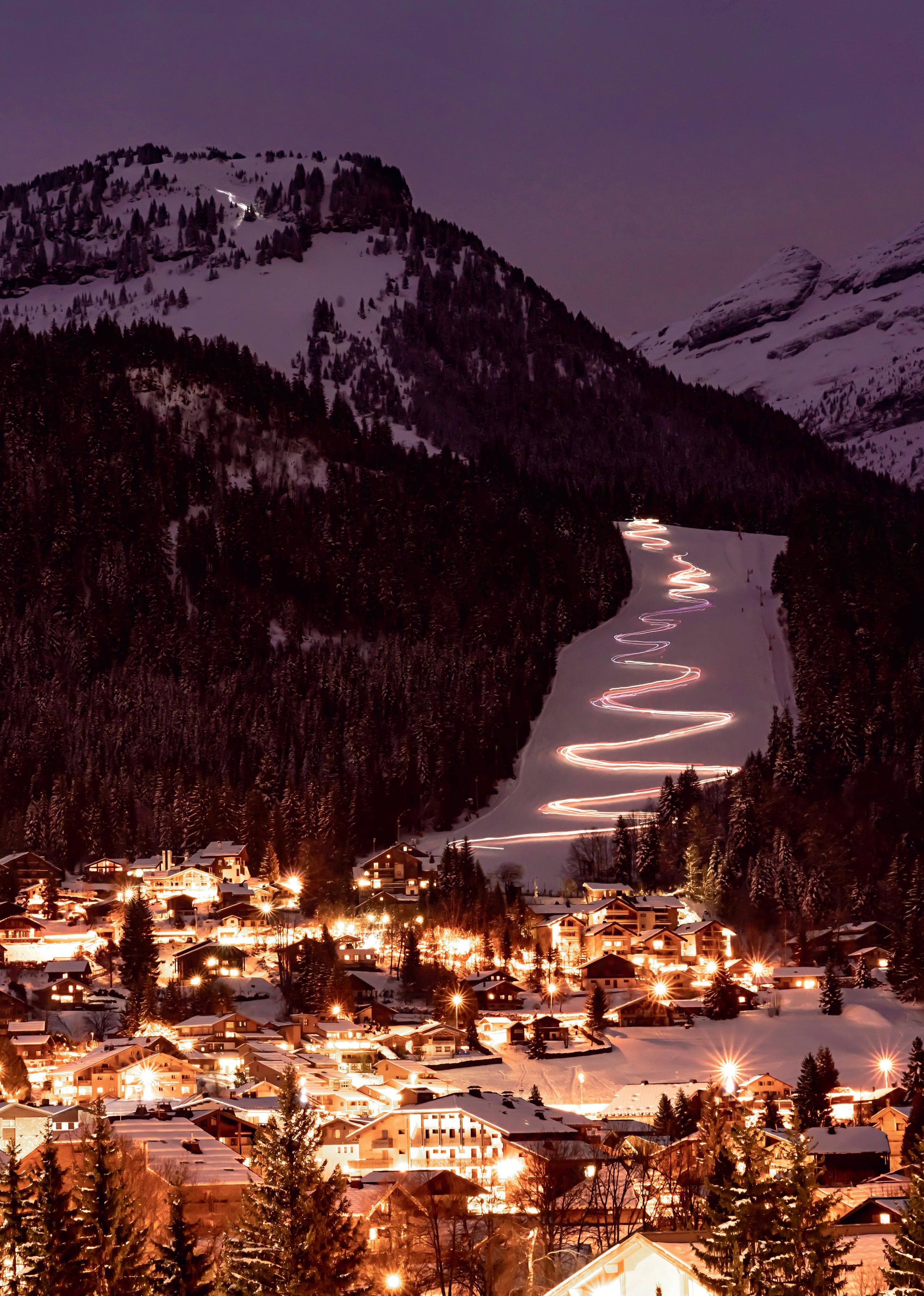
Les Carroz is quite low at 1,140m (its top lift is 2,480m), but has a good snow record and is connected to Flaine, one of France's most snow-sure resorts. The skiing at Les Carroz, with its 32 pistes and 15lifts, is particularly beloved of beginners and lower intermediates (I brought my oldest son here for his first ski trip), with several long green runs through the trees ending up back at the village. The resort even recently created a low-priced beginners' lift pass giving access to a handful of slopes for novices to find their feet on.

There is also a huge amount of skiing for intermediates to clock up mileage, especially if you range over to Samoens, Flaine and Morillon, which are all easily accessible and always on my agenda. There's also great on-mountain food -I particular commend L'Igloo (when in Samoens mountain biking, I fell and broke four ribs, only to find the lift took me to L'Igloo,so despite being thoroughly bloodied I stopped and had the cepes with pepper sauce on rustic bread and smoked cheese, arguably my favourite ever mountain meal, before heading to hospital).
But to label Les Carroz as simply a beginner and intermediate resort is to miss a trick -there are also some unexpectedly great stashes hidden away in the most unlikely places for stronger skiers. The area has 15 black runs and there are some wonderful powder bowls heading towards Flaine and Samoens, while the Corbalanche freeride area is accessible from the new Tete des Saix chairlift.
Local favourite the Piste des Cascades pitches at 40%, and if that's not adrenalised enough for you, try the narrow moguls of the Diamant Nair, the crevasses of the Flaine bowl, or hire a guide and take on the daunting Combe de Gers basin. Personally, I particularly enjoy a short but feisty black mogul field, the Feline, which is barely 100 yards from the main lift but hardly skied.
If you've got more esoteric tastes, the area can accommodate most snowsport activities. Les Carroz has two boardercross courses and the Oasis Cool Zone snowpark caters for all levels. Cross-country skiing is on 17km of tracks at the Col de Pierre Carree, while a free shuttle bus links Les Carroz to 50km of paths at nearby Agy. Paragliding, fat biking, dog sledding, snow shoeing trips and nocturnal 'snake' sledging (several sledges attached together in a line) are also available, and most evenings there is a torchlit ski procession down the mountain, which is watched by half the village.
While accommodation in Les Carroz is mainly apartments, on my first trip (and all subsequent trips)
we stayed at the luxurious Chalet Calluna, a catered chalet run by Aubin and Jackie Roger. These cheery Fife farmers sold their land near St Andrews 25 years ago and decamped to Les Carroz, where they have been joined by their son Mark, a former ski racer and sous chef in several Michelin-starred restaurants. Not only is the food stunning, but Mark is a knowledgeable skiing companion.
Now married to Nadine, who also has a background in five-star hotels and Michelin-starred restaurants, Chalet Calluna is being refurbished with the younger Rogers running nearby four-bedroomed Chalet Erica on the same formula.

All are surprisingly good, rather like Les Carroz. Indeed, on this year's trip, my annual ski companion Graeme seemed to be suspiciously well-informed on small gastronomic changes at Les Carroz's restaurants, and even the conditions of the various runs. Living where he does, he has access to a huge range of popular resorts within 90 minutes' drive, but always opts for Les Carroz and its four sister resorts.
It turns out Graeme's been doing a lot of research. "I always get drawn back here," he told me. "The Grand Massif has something for every condition, plus good food, small queues and free parking. And although it's not much further to go elsewhere and a change is always good, there are plenty of reasons why this place has become a habit I don't intend to break. Why would I go anywhere else?" Touche.

SKI
A skipassgivingunlimitedaccessto thefiveGrandMassifskiareascosts€54JJerdayfor an adultand€43for 8-15yearolds(childrenaged7 or under,or adultsaged75andoverare free),with nodiscountfor buyingmultipledays(exceptconvenience).TheVillagesskiJJass, whichdoesn'tgiveaccessto Flaine,costs€48 (€39for 8-15yearolds),whilethe LesCarrozonlybeginners'JJassis€27(€20fm 8-15yearolds).
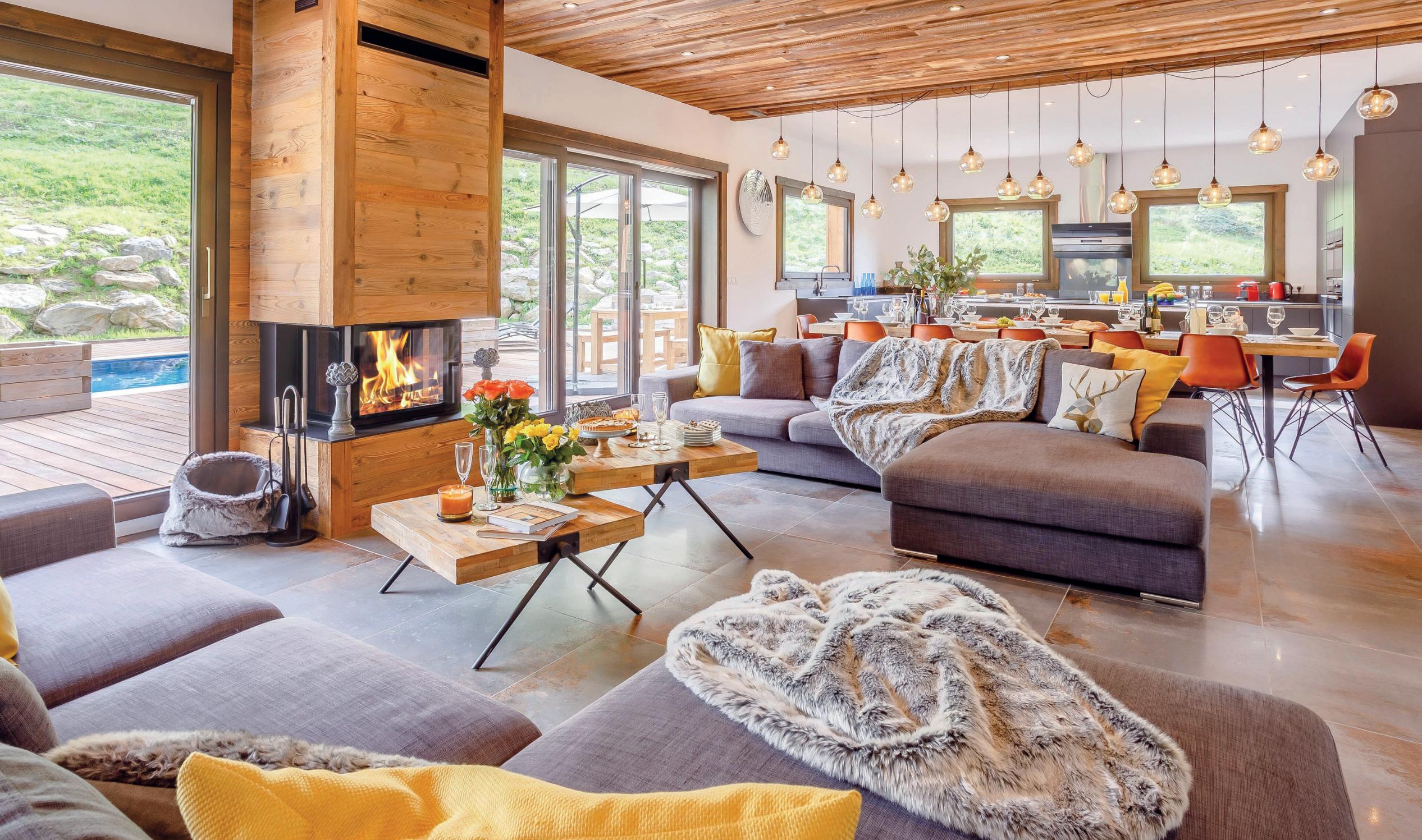



Skiing as a family can be tough. Kids love the snow, but the logistics of sorting out kit and lessons, retrieving lost passes, dealing with an especially cold day or when they would just 'rather go swimming' can turn an idyllic family time in the mountains into something more stressful than everyday life.
But, as with so many things, the key is in the planning. As a veteran now of many family holidays with young, and now not-so-young, kids, I'm all too aware that it's getting the key details right that makes the difference between an unbeatable holiday, and a week of woe.
If your kids are of school age then the choice of when to go skiing is rather limited. Christmas and Easter both have huge merits when it comes to a family ski trip, but many families still opt for the mid-February half-term, when the snow conditions are likely to be optimum and the weather hopefully has a touch of spring in the air.
That, of course, means it is always going to be busy, so the first thing to look for is a resort with plenty of mileage to escape the throngs.
If the kids are going to be in ski school you'll need to
factor in timings. Often a half day of lessons suits best, as kids can stay engaged and interested with the 'learning' and you'll get time to ski together as a family too, which (hopefully)was one of the key reasons to go skiing together!
Remember too that for kids, especially younger ones, this is a real winter experience. For many living in the UK snow is rarity, and kids will want to spend time doing other things on snow as well as skiing, so factor that into your resort choice.
Needless to say, regular hot chocolate stops are vital -nothing revives tired legs and cold toes quite like a cosy mountain restaurant -and most resorts these days have plenty of piste-side options.
Travel too is a key factor. You'll likely be carrying all of your kit with you, so an easy transfer is important and means everyone arrives less tired and more likely to enjoy the first day's skiing.

Considering all of the above, there is one place that stands out among the crowd: SkiWelt. And so it was that my family and I, including my three kids aged between eight and 11,found ourselves bound for Innsbruck for our annual family ski getaway ...
.&.Comprising nineski-in/ ski-outvillages, theSkiWelt regionhasbeen afavouritewith familiesforyears
Comprising of nine idyllic ski-in/ski-out villages, the Austrian Tirol's SkiWelt region has been a family favourite with Brits for many years, and it's not hard to see why. What's impressive is the way the region has kept investing to keep itself at the top of the family skiing bucket-list. Fast and efficient lifts clear the queues even on busy days (it's one of the fastest lift systems in the Alps), and the relatively low altitude makes for short lift rides, so everyone can get back on snow and having fun.
Don't be fooled into thinking that lower elevation means poor snow, however -the area's snowmaking is incredible, with coverage on all the major runs. The gentle Sound of Music-esque alpine pastures also need less snow coverage for good conditions than some of the rockier areas of the Alps, something to consider when comparing snow depth.
Access is a cinch. SkiWelt is a short hop by coach or car from Innsbruck airport, and reachable by train from the UK for those looking to travel in the most eco-friendly way.
Sustainability is an increasingly important factor for many families as they look to safeguard skiing for their children in the future, and SkiWelt leads on this with some seriously impressive eco-credentials, from solar powered lifts (100% of its lifts are powered by eco-electricity) to recycled water for snow making.
We were based in Soll, the largest of the four Wilder Kaiser villages set along the valley road, where a modern and fast gondola whisked us up to Hochsoll (1,S00m).From there the mountain opens up with a variety of routes to explore this huge ski area. There's a sense of 'friendliness' that pervades the region, the scenery is stunning (you're surrounded by more than 70 peaks above 3,000m), but less daunting than in some higher mountain areas, and everywhere there are tracks through the trees and little areas to explore that gives the feeling of a real mountain playground.
And boy what a playground. Miles of wide, mellow pistes on which to gain confidence (including free nursery slopes), numerous pacey reds and blacks for more experienced skiers, plus three fun parks, eleven fun slopes with 'ski parcours', speed measurement runs, even ski movie routes.
.._Sollis the night skiing mecca,with 10km of slopes lit up

Skiing by day is all well and good, but what about when 1::i evening falls? A huge attraction of the SkiWelt is the night skiing area above Soll -it's Austria's largest, with 10km illuminated slopes. Kids will have days when they tu c just don't want to ski all day, but for the hard-pressed parent on limited time this can be a tough compromise 5 I when time on snow is so precious. But with night skiing, c.. you can have an early finish, head back to the hotel for a rest and refuel, then get kitted back up again for an evening slide.
TThe Gambrill junior team sample the delights of this epic region
For us, night skiing was a truly magical experience -the stillness and light makes for a very special atmosphere that differs from the daytime, and it's something our kids often talk about, even months after. Yes, it's a few degrees colder than in the daytime, but that just makes the post-ski dinner in a cosy mountain hut all the more special.
Something else that is etched in our kids' memories is the witch's house at the middle station of the Hohe Salve, where children can brew their own potions in a giant cauldron -and the Igloo Village, too, a magical world made of ice at Hochbrixen that makes for a truly special hot chocolate stop.
As for me, I loved exploring the pretty villages that form the base for SkiWelt. Despite the fact the villages look like almost like a theme park, with their perfect pitched roofs and onion-domed churches, there is no denying this is an authentic place, where the locals have skied for years and are proud of their heritage, their region, their food and their love of welcoming visitors. We came in search of a stress-free, fun-packed week. What we found was that, and so much more.

With a name like mine, I ought to be fluent in French but, regrettably, I'm not. Nonetheless, my understanding is good enough to appreciate the claim by the Falcoz family that their Chalets de !'Arc restaurant boasts tropd'amour,an evocative description of this convivial mountain refuge.
Set on the blue Marmottes piste just above Arc 1950 and Arc 2000, four connected timber and stone chalets and two large sun terraces house the outstanding Le Chalet restaurant and more informal l'epicerie ("for the die-hard riders who think that eating's cheating"). The latter, with its cheerily mismatched pieces of vintage furniture and friendly young staff, offers a stripped-down menu of classic skier's fast food: hearty soup (€12), oozing croques monsieur (€15), towering burgers (€18) and vast slabs of blueberry tart (€10). Drop in after 2pm to bag the best seats in the house -the oversize velvet sofa and swing by the big window -and you'll find yourself wishing the service was a tad slower to warrant spending a little longer there.
If you find yourself getting comfy at l'epicerie, prepare to settle in for the afternoon at Le Chalet. Set on several levels, all linked by wonky hand-carved timber staircases, dotted with open fireplaces and topped by vast hand-hewn timber beams, the restaurant was largely built by Robert Falcoz. Something of a Les Arcs legend, the enterprising Falcoz worked as a local ski
patroller, instructor, restaurateur and baker before teaching himself the rudiments of carpentry and building Les Chalets de l'Arc in 1999.Key to his latest venture was the installation of authentic wood fired ovens, in which he could bake bread and cook meats and vegetables in time-honoured Savoyard style, at 2,220m as!.
Now in the safe hands of Robert Falcoz's children, Lucas and Candice, the ovens continue to blaze, not only providing bread and delicacies for diners in the restaurant and l'epicerie, but also for the other Les Arcs venues in the Maison Falcoz portfolio (Le Savoy and Chez B.O.B.).
The scent of freshly baked bread and molten cheese hits you the second you enter the softly lit, buzzing chalet. As you settle into an armchair by a roaring fire, waiters sporting smart white shirts and old-school braces or aprons stride around purposefully, balancing vast trays of tartiflette, charcuterie and entire roast chickens.
This is not the time or place to hold back. In addition to a selection of cheesey classics like fondue (from €29), wood oven cooked crofite au fromage (€24) and tartiflette (€24), the menu offers melt-in-the-mouth filet mignon with blueberries (€58 for two), fragrant slow-cooked lamb shank confit with honey and thyme (€29), and succulent braised ham on the bone with crepes (€26).

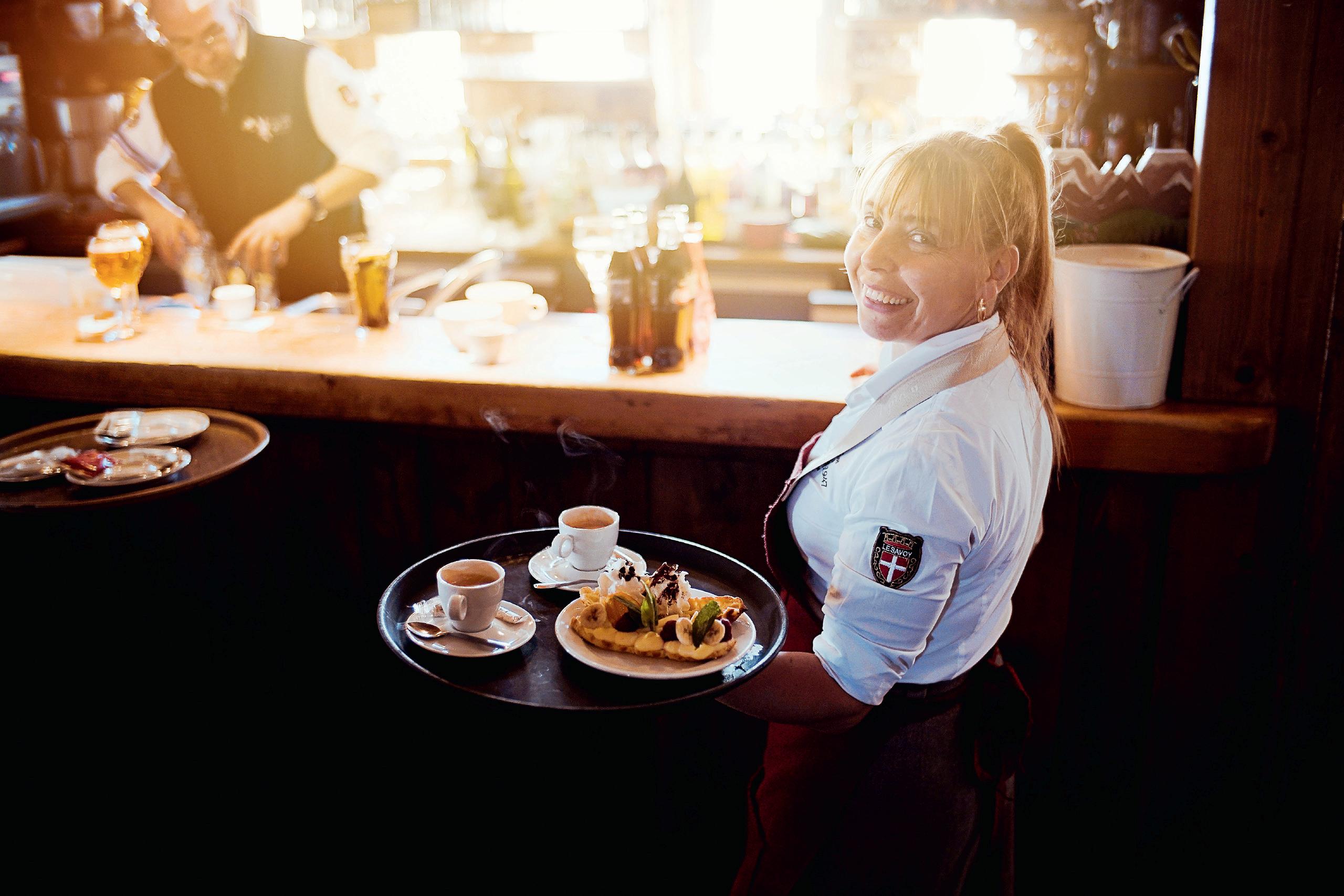
A surprise star dish was the oven-cooked vegetables (€25); a colourful plate of perfectly charred and deeply tasty
• Bread
• 3eggs

• 25clmilk
• 250ggratedcheese,ideallyBeaufort
Cutathicksliceofbread. Beattheeggsandaddthemilk. Soakthebreadintheeggandmilk mixture,thendip it inabowlof gratedcheese.
Fryinbutteruntilgoldenbrownonboth sidesandservewithafreshgreensalad.
Mediterranean veg, liberally drizzled with olive oil.
Special mention must also be made of Robert Falcoz's signature chaussons du boulanger (€25.50), or stuffed breads. Freshly baked to order, these delicious breads are stuffed full oflocally sourced goodies such as cured ham, mushrooms, parmesan and sour cream (Le Forestier), or local sausage, cabbage and Beaufort cheese (Le Savoyard).
maisonfalcoz.com
GabriellaLeBreton investigates the mountainhut aboveArc 1950 that promises"too much love"
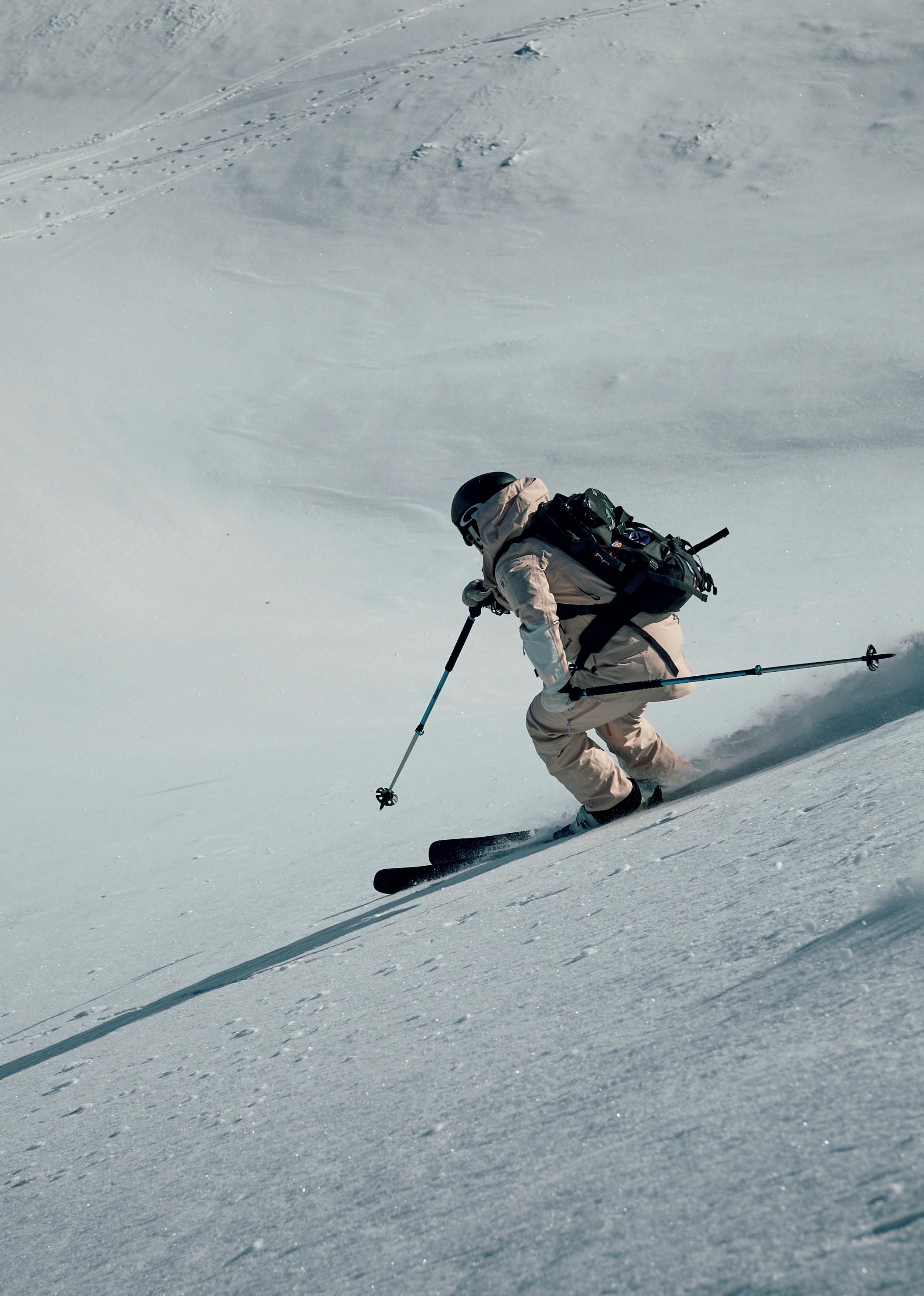

Honeyourskiskillswith
Thismonth:Powderskiing
SeethatepicshotofWarrenwaist-deepinpowderonthefrontcover?
Wanttoknowhowhemakesitlooksodarneasy?Readon...
For many skiers, it's usually a goal or an ambition to be able to ski a lovely blanket of powder snow. I know for our Academy skiers it's a huge reason why people come to train with us in the first place. However, it's not just something you can jump in and expect to work. There are a few things that must be spot on in your technique before you enter the deep stuff.
Unlike piste skiing, powder is a bit less forgiving. On-piste, if you find carving isn't working effectively or your weight goes back, you can normally escape an issue by skidding out a little, or recovering in a variety of ways. In powder, however, there is not much room for error.


It's not the end of the world ifit does go wrong-you can enjoy a tumble in the powder, brush yourself off and get back on with it. So definitely don't avoid it! But, when skiing powder, you can try a few things that will give you ffia betterchance of staying on your feet, keeping rhythm and linking more turns together.
u FRONTCOVERSHOT
V, 5 Captured on the cover of this month's Ski+board, I was lucky enough to be out skiing with a great bunch


skiclub.co.uk


in Verbier in January, including the magazine's co-editor Gabriella LeBreton. We had an awesome day and talked about some key technique elements that would help us stay afloat in the deep snow. Gaby, an expert skier herself, and I, and the rest of the group, had to constantly be thinking of these elements to ski the powder how we wanted:
Most of the group skiing with us were experienced. For all of us, a constant reminder was needed to activate our core and use its strength to stabilise the upper body. The sensation people get when they make a turn in deep powder is very different to that they get when carving and gripping on-piste. As you turn across, or against, the powder to round off a turn, no matter what radius, you create a powder wall, or the feeling of a bank of snow that can sometimes give you the sensation that, if you're not careful, you could go over the handle bars, so to speak.
If your core is not activated, chances are that as the powder wall and pressure builds, you might find your shoulder and upper body lunging forward. This is bad and will over-pressure the front of the skis and hurl you
forwards and possibly into the snow for a quick powder shower! I've certainly felt it, and am sure many reading this must have too at some point.
Ensure that you know how to ski with core activation before you go into the powder. When the pressure of the powder wall builds, if your core is active, you'll absorb the pressure in your legs and continue to link together awesome powder turns.
If you watch the sequence of my turn, you'll see the moment I start to really feel the powder wall and have to ensure my core is engaged. The faster and bigger the turn, the more you can feel the force of the wall (image 2).
Many skiers we coach think they can pole plant, but when actually tested, and when they actually need to -like when skiing moguls, steep narrow terrain, short radius turns or powder -what appears easy and basic quite often isn't fully learnt.
It's something that often lets down a skier in powder, and if not executed well can make them lose balance, lose rhythm or miss the chance of an extra bit of support and awareness at the entry of a new powder turn.






First, check your pole plant on-piste and make sure it's active and strong when needed. Also check that when making a pole plant, it isn't taking your concentration away from what you're doing with your legs. The last point to check is that your left and right pole plants are the same, or whether one is naturally weaker. Nearly every skier I've skied with has a weaker pole plant on one side, and it's usually always related to their weaker turn direction.
Ifany of these points show up, head back on-piste and do some pole plant training and get up to speed. Never underestimate the importance ofit, especially in powder, and how your hands linked together with your feet turn your skiing into four-wheel drive.
Last point here: make sure if you're having a powder or off-piste day that you check the baskets and the size of them on the end of your ski poles. If your baskets are too small your pole plants won't support you; they will just sink and put you off balance.
At the start of my turn in image 1,you can see what was the trail of my pole plant that set me up. Later, as
I finish in image 5, you can see my pole plant already moving to get me out of that turn and into the next.
Steering your legs, and effectively your skis, progressively is important. However, on-piste, if you're making Z-shape turns instead of S-shape turns, you'll get away with it and just skid the end of the turn you were trying to carve. In powder, if you make sudden steering movements you hammer too much pressure into that powder wall and get chucked over the handle bars. So steer smooth and progressive turns, feel the powder and flow with it. Also make sure when you're steering progressively that you are finishing each turn. Keep the s-shape turn in your head throughout.
For all the frames, you can see the line in the snow, and the arc shape that the progressive steering is taking me through. Ifl'd have steered too suddenly during image 2, I would have gone over the handle bars, as it was a lot of snow to absorb.
As I talked about in Ski+board issue 218, it's extra important to have as close to an aligned and symmetrical stance as possible. A-frames here, when your skis are submerged under snow, will get caught out straight away, and if the skis are at slightly different angles they WILL travel in slightly different trajectories.
You want it all working in your favour, so recap and double check you are skiing in symmetry.
Throughout all of this turn, and at the speed I went in at, without symmetry right at the start, during image 1 I'd have been correcting the entry of the turn and trying to re-position the skis.
No matter what your level, if you are lucky enough to experience powder this spring, try and do it with safety first, a good crew, hopefully an experienced instructor and enjoy every moment. It's one of the most amazing things about this incredible sport, so even if you take that unexpected powder shower, get back up and think about these pointers and it will help you enjoy the ride.

Thismonth:afrontsideandbackside180
It'stimetoputalltheelementsfromthelastthreetechniquepiecestogether andmasteryourfirstparktrip-theoh-sounderrated180,saysRobNorton
The 180 is one of the most underrated tricks in snowboarding. A very simple trick, done well it can show the true sign of a stylish, accomplished rider. The basics of the trick are spinning your snowboard, in the air, 180 degrees -so you'll be taking off regular and then landing switch. It will be one of the first rotations learnt, but will take time, energy and love to perfect. Before learning how to do a 180 you should already be comfortable with ollies and with riding switch.
This trick can be practised on an easy slope and then taken into the park or backcountry. Once mastered, it's great for testing that first rotation off a slightly bigger kicker. The trick can be performed off the toe or heel edge.
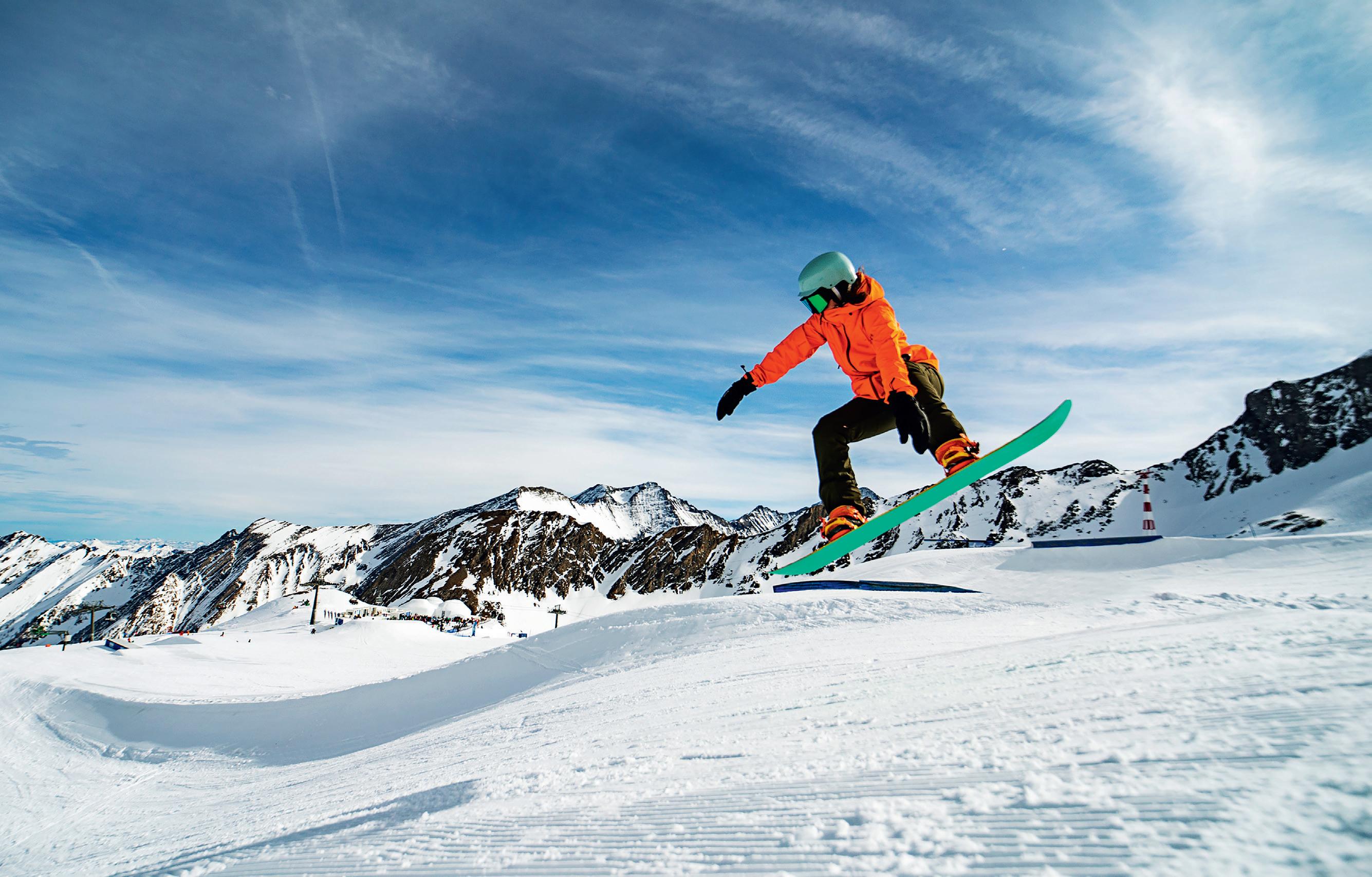
There are two versions of the 180 -frontside and backside. Frontside is when your torso twists in the ..: direction you are facing, so you always have your landing site in focus. A backside means that your ;;; torso will rotate up the mountain, briefly taking your 5 view away from your landing, making it slightly ii: more technical.

Before you take this trick to a jump, get comfortable jumping 180 on the flat.
Start by setting up on your heel edge (you would set up on your toe edge for backside 180s). Begin the movement by twisting your hips and shoulders in the opposite direction to the direction of your spin to build the energy for the rotation (the 'wind up'). Flex your knees with your weight on your back foot, as you would do for an ollie. Now pop up and rotate yourself around in the direction you want to go and lift your board in the air. Land on both feet with knees bent. Keep practicing this until it becomes easy.
Next, try your frontside 180 while traversing across a gentle, wide slope. Create grip with the snow using your toe edge, wind up your upper body using your arms and shoulders, then pop to lift and rotate the board. As you jump, swing your rear arm across your body so that it points in the new direction of travel.
The beauty about learning small rotational tricks is that they can be learnt, practised and mastered on a mellow slope before taking them into the park. By taking away the fear factor of the park, you can learn this trick in a safe and fun environment -and be building that ever-important confidence all the time.
Find a gentle slope with a small lip on the edge of the piste. Side hits are fantastic for 180s because being on your edge gives you grip with the snow, which is essential for all spin tricks.

Keep that central feel on your board -don't allow your weight to be too over the front foot, or be sitting back over the tail. Think a nice 50% on the front and 50% on the back foot. Keep your upper body relaxed and aligned, your core strong and your eyes focusing on the jump. Keep your ankles, knees and hips slightly flexed.
Don't be too hasty and rotate too early. A frontside 180 is a small rotation, so you don't need to throw the trick too hard on take-off. Remember to throw your head, shoulders and core at the same time; these movements want to be smooth and blended together.
Stay relaxed and compact in the air. Push your knees out over your boots to create that all-important triangle shape -or cowboy stance -with the lower half of your body. Try and make movements that are slow and stylish. Grabs can add stability into any trick, so don't be afraid to experiment with these.
Keep your eyeline watching the spot you want to land in. If you open your head up and keep looking around with the rotation then you'll over rotate the trick. By locking your eye line on the spot you want to land you will block the rotation and land on this spot. Try and achieve that gentle and relaxed centred landing, then ride away switch -and remember not to revert around to your regular position, as switch riding is the business!
When doing a backside 180, you can apply the same sequence of progression as you did for the frontside 180. Start on the flat, stationary even, winding up and turning your back to the direction of travel. The fact you are temporarily 'blind' when spinning this way means that you'll need total confidence in your switch riding before you consider trying this.
It's a good idea to straight air the jump a handful of times first. Since backside 180s are blind, one of the dangers of this trick is overshooting or undershooting a jump. If you do either, you won't know it until it's too late to try and compensate.
Even confident switch riders will have a tendency to land nose-heavy, on their uphill foot, wheelieing slightly on landing, so it's important to really try and remain balanced with a 50-50 weight distribution over your feet when landing backside 180s. With a little bit of practise you will quickly see how close within your grasp the backside 360 is. .A.Getset toland it...



ChemmyAlcottchatstoBrittTajet-Foxell-thepsychologist whohelpedheremergefrominjurystrongerthaneverbefore
In her final column celebrating the experts who help keep her in shape, Chemmy Alcott introduces Britt Tajet-Foxell, an elite performance psychologist. Born in Norway, Britt developed an interest in the psychological aspect of rehabilitation while working as a physiotherapist for the Royal Ballet Company. After retraining as a psychologist, she became the first consultant psychologist for the Royal Ballet -where one of her first clients was a 22-year-old Darcey Bussell -and has subsequently worked with numerous members of the Norwegian Olympic Team and the British Olympic Association.
Chemmy says: before going on a ski holiday, we usually consider our physical needs -how to get fitter and stronger -but rarely think about how to bring out the best in ourselves mentally. In the world of elite sports, working with a psychologist, within rehab in particular, is now recognised as being as valuable as working with a physio -not least because the pursuit of excellence can make athletes particularly susceptible to performance anxiety, self-doubt and perfectionism. Add to that the likelihood of injuries, and the mental trauma they can cause, and it's no wonder so many athletes, including me, have turned to Britt for support.
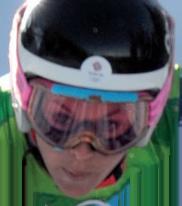
CA:What memories do you have of our time working together? I remember coming to you post-injury, when you helped me replace the negative memories and fear of crashing with positive thoughts. BTF: When we first met, as I would expect after a serious injury like yours, the traumatic event and after-effects you suffered were huge and complex; comparable to a Post-Traumatic Stress Response (PTSR).My aim after this event was not just to get you back, but to get you back a stronger and faster skier. An injury can be viewed as a tremendous shortcut to what's happening in an athlete's mind. If you can use it as a springboard, actually using the pain and trauma of your experience to underpin your physical and technical abilities, it can be a positive thing, ultimately making you stronger. We had to first separate the physical pain from the psychological pain, which would enable you to rebuild physically and technically -without the erosive effect of fear and anxiety. Acknowledging the profound psychological effects of an injury is an important step towards building a robust recovery and reducing the chances ofre-injury. Atthe same time, we focused on building mental resilience, gradually empowering you to once again trust your instincts, qualities and strengths. In simple terms, we had to clear out the debris

left from the injury to break through the barriers that were preventing you from fulfilling your potential.
CA:Do you have any tips for Members who might have sustained an injury, while skiing or not, that's creating a mental block about returning to the slopes?

BTF:I often compare injury to an iceberg -the emotional undertow lurks out of sight. Everything you do physically and technically is supported by what happens psychologically. If you have psychological control, and can create a language to define the emotions around a situation, it is easier to get through it.
First, try to pull out on your mental screen the specific memory files or mental programme of skiing. It's likely that it's been corrupted by memories of your injury.
Once you recognise that it's your memory files that are faulty, and start to differentiate between what's a real response to your injury and what is a memory response, you can start to use it as a tool to facilitate your rehabilitation, replacing the distorted programme with a more appropriate one.
Also, try to leave any feelings of perfectionism behind when you're returning to skiing after injury, or simply after a few months away from the snow.
Perfectionism is very common in the world of elite sports and performance, but it can be so damaging, trapping individuals in their own anxiety. I promote the idea of pursuing excellence: taking small, smart steps towards always being better.
The emotion around that is a sense of freedom -a freedom to develop. It gives you a map with lots of different possible directions towards improvement.
CA:You've worked with the world's best, from Olympic medallists to performers at the Royal Ballet -what are your top tips for helping people to be at their very best?

BTF:I usually work with performers over long periods of time, often precipitated by an injury. For example, I worked with the Norwegian cross-country skier Marit Bj0rgen for 12years, during which time she became the Olympic athlete with the most medals! I don't always have the luxury of time though: when I first started working with the Olympic rower James Cracknell, it was just three months before the 2004 Athens Olympics, and he had a stress fracture in his rib. When I asked him to
imagine his muscles and ribs, he pictured the broken rib as welded together. By carrying that image of weakness in his subconscious mind, he perceived a devalued performance, meaning he was less likely to win a gold medal. We worked on changing his mental picture of a rib that was welded together to one that looked just like the healthy rib on the other side. He went on to clinch the gold medal.
So, ifl was to give one tip only, it would be to pay extra attention to developing your ability to focus and learn to use visualisation techniques to help address issues that are clogging your subconscious.
CA:Can you help with the following scenario: I'm standing at the top of a black run. I know I can do it, I did it yesterday. But today my heart is pounding and my legs are aching. My family have zoomed off down and are waiting for me at the bottom, but as I look down the slope I freeze ...
BTF:If you're a skier with no experience or training in performance psychology or stress control, I would suggest you do a quick reality check and remind yourself you are NOT standing there totally naked having never done this before.
If you're still feeling naked, retrieve positive memories from every time you've skied down a piste before. You can go right back to the very first baby run you took on a family holiday, to blue runs you mastered at ski school, any strengthening programmes you've undertaken to improve your ski skills ... Importantly, recall the joy and sense of fun you have felt while skiing. And, with each memory, put on an item of clothing. The growing feeling of security from this list of evidence to back up your experience, and being (mentally and physically) dressed in your smart ski gear, will get you safely down!
To build confidence to help you deal with panic at the top of a hill, it is useful to mentally prepare your descent first. The better prepared you are, the easier it will be to control your fear and the more you will enjoy your sport. If this is something you want to continue, book up one or two sessions with a performance psychologist to help you learn to control your stress response.
.6.EvenOlympic skierslike Chemmyhaveto steelthemselves mentallytotake theplunge
FINDOUTMORE
Ifyou're interestedin workingwith apsychologist, a greatplaceto startistheBritish Psychological Society,which offerslists anddirectories ofqualified psychologists invarious specialistareas, includingsports (bps.org.uk).
SkiClub Repsselecttheir highlightsof what hasfelt to many likethe first fantastically"normal" winter sincethe world ground to a halt in 2020



.&."While the rest of the Alps was short of snow, Andermatt was blessed with lovely fluffy stuff!"
"Fun social skiing with our group taking in the views ofZell am See."
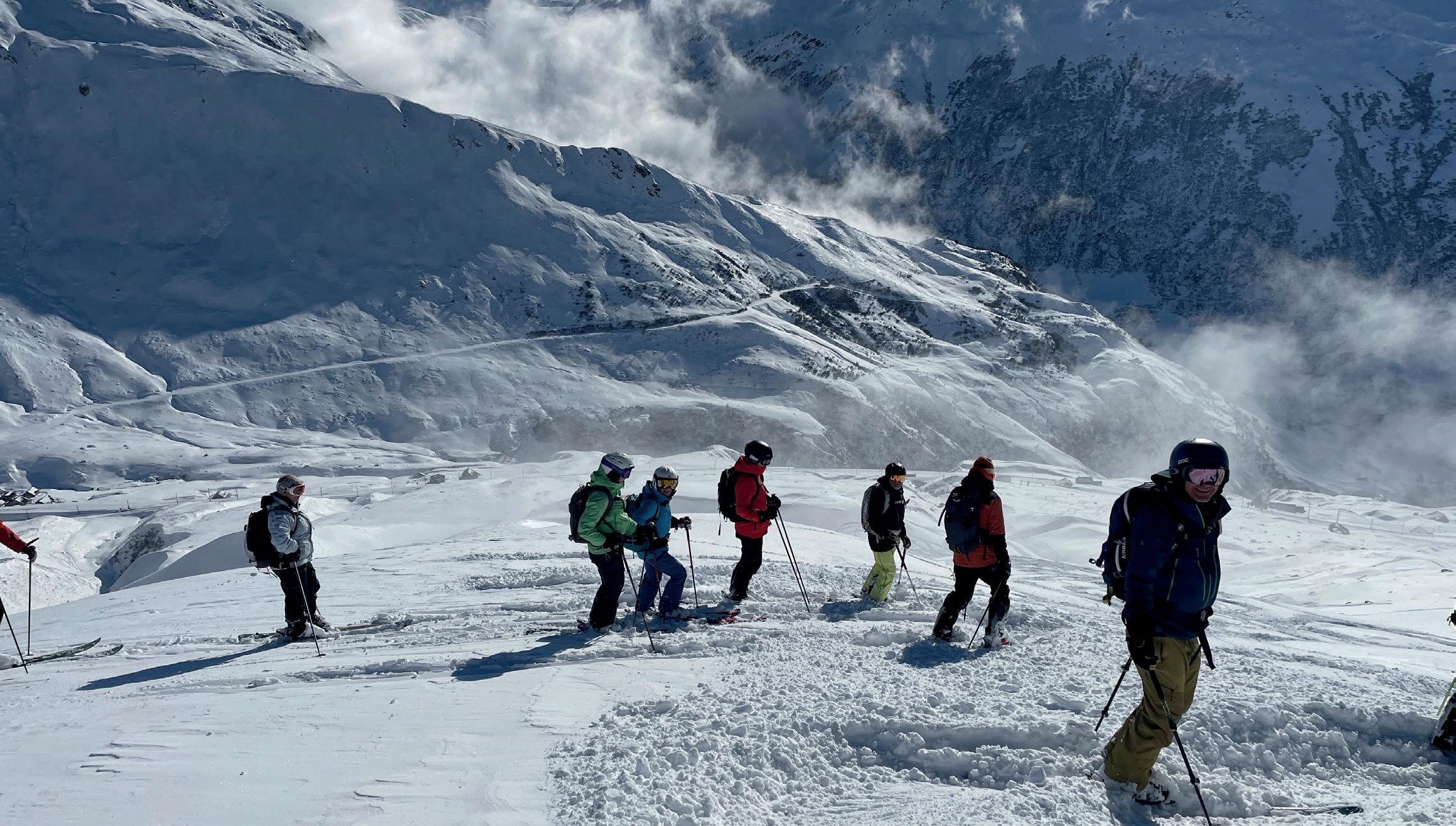


.&."An exercise in skiing what's in front of you: we were traversing a relatively flat back bowl one morning planning to head to a well-known face to bootpack up. En-route we skied over some very nice untouched powder, so we changed plans and did several very enjoyable bootpack laps of the powder face!"


The SkiClub'skit guru, HenryJohn, offersadviceon someof the most commondilemmaswhen it comesto stayingwarm on the slopes

Which material is better/or snowsports - natural down or synthetic insulation?
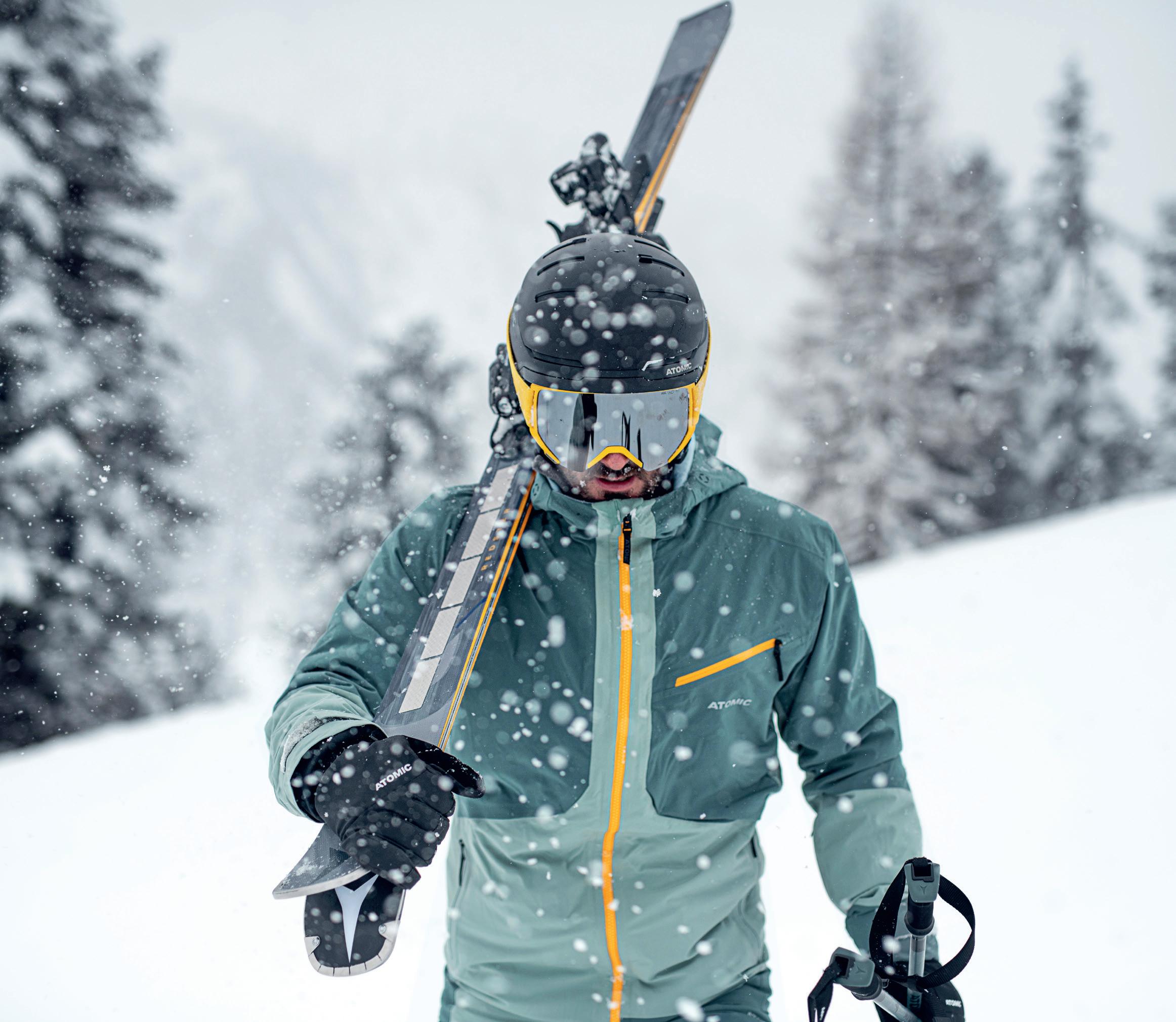
Natural goose or duck down is a fantastic way of keeping warm, as it packs a serious punch for its weight. However, down is almost too warm. By this I mean that it doesn't breathe or self-regulate in a way that modern synthetic insulation does. In snowsports, you generate a lot of your own body heat moving down the slopes, before sitting on the lift and cooling off on the way back up. Modern, thin insulating layers regulate their temperatures really well, venting excess heat when moving but keeping you warm when you stop. I have long been enamoured by the Arc'teryxAtom LT and Proton LT Hoodys (from £220; 64 skiclub.co.uk

arcteryx.com), which serve as fantastic mid-layers, packing plenty of warmth while remaining lightweight and breathable.




Thin down layers can often overcome this deficit, and, of course on some days, being warm is all that matters!
Norr0na's Trollveggen down vest (£249; norrona.com) is a perfect example of a lightweight down piece to stash as an extra layer or as the last line of defence from the cold.
My toes always get particularly cold when temperatures plummet-can you offer some solutions?

Cold toes and fingers occur when blood is diverted from your extremities to protect your primary organs. Fortunately, there are ways to combat this before frostbite hits! Good socks are the first must-have. Note that modern ski socks are often thinner than old-school versions, not only because technology has improved but also because a thinner, snug fitting sock encourages blood flow all the way to the tips of your toes.
Additionally, a good quality merino wool sock, such as those from Icebreaker or Smartwool, will be warmer than standard sheep wool in addition to being naturally anti-bacterial (so you can wear it for two or three days before washing!). Merino wool is also excellent at wicking sweat away from the foot-if this doesn't happen, the sweat can freeze and you'll really feel the cold.

If it's time to shop for new boots and you feel the cold, getting the right boot can also help with those chilly toes. Performance-focused ski boots focus on a tight fit at the expense of the liner, meaning they'll be colder than recreational boots. Consider whether you're willing to drop down a flex or two in return for a liner with more padding and, therefore, more warmth.
Finally, boot heaters, such as Therm-ic Heaters (£175;snowandrock.com) are really effective at keeping your toes warm. A small heater element slides under the insole of your boot with battery packs that attach to the top of the cuff of the boot.



Start with a glove liner, which adds an extra thin layer to the inside of the glove and can be enough to take the edge of things -Icebreaker make a very effective merino liner (£27; snowandrock.com). Then, if you're in the market for new gloves, consider a thicker glove and give thought to the material its crafted from -leather helps to trap heat and repel wind and water. I have been skiing in Reusch Mastery gloves (£100; snowandrock.com) for some time now, but I would also recommend Hestra's Heli Ski range (£125;hestragloves.uk) which have long been a staple of outdoor professionals around the world. You should also consider a mitten instead of a five-finger glove. By having your fingers all in the same compartment, the shared body heat helps to keep things toastier!
Finally, similarly, to boot heaters, heated gloves are also an option, with the Therm-ic range offering men's and women's gloves and mittens (from £295; ellis-brigham.com). Top tip: bump the heaters up to the max for 10 minutes to allow the gloves to warm up, then reduce to the minimum to keep your fingers toasty and preserve battery life.
 Goodsocks areamust...
Goodsocks areamust...
T...asare mittens,which reallykeep thingstoasty
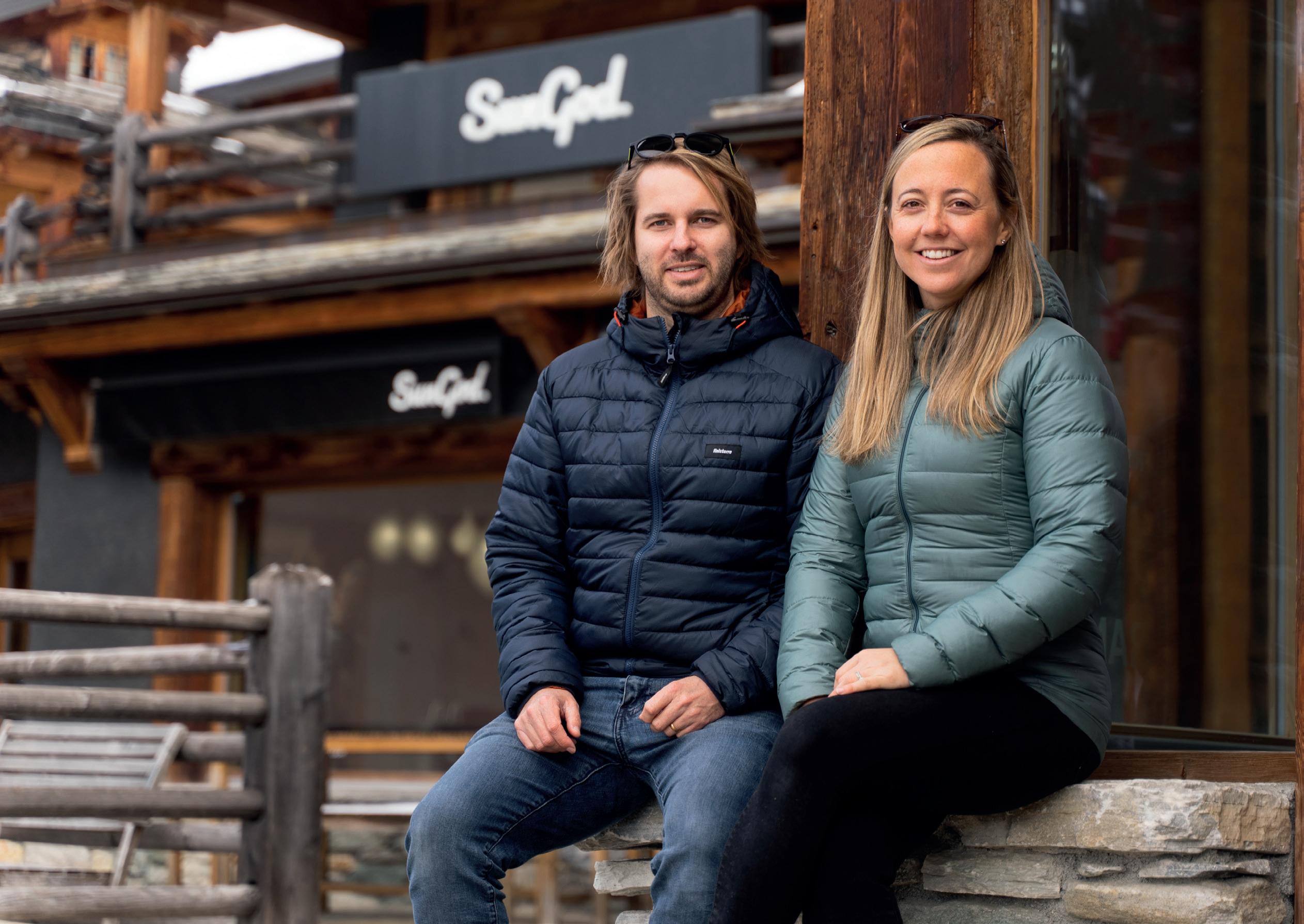
Walking into SunGod Basecamp to meet the founders of the English performance eyewear company, I unexpectedly find myself rubbing shoulders with some of the freeride world's hottest young things. SunGod's Swiss HQ is a small, welcoming shop and adjoining office on Verbier's bustling Rue de Medran. My meeting with co-CEOs Zoe and Ali Watkiss has coincided with a meet-up of several of the brand's ambassadors to capitalise on a fresh dump of snow.
While the animated freeriders settle into the squishy shop sofas, I take a pew in a large leather sofa in the office with the Watkisses. Both aged 35, the couple are peas in a pod, sporting matching long caramel hair, broad smiles and soft voices. As Zoe tells me how Ali used to crochet bobble hats on the Tube to work when they worked in London (he as an architect, she in marketing), in their first joint business venture, it's hard to picture them as a disruptive force within the £139bn eyewear industry.
And yet disruptors they are. Keen skiers, kitesurfers and cyclists, they set out in 2013 to fill a gap in the 8 sunglasses market, which then offered consumers either expensive designer sunglasses with huge mark-ups or iil cheap, poor-quality versions that broke quickly. As § passionate about the planet as they are about skiing, ii= they determined not only to offer top quality sunglasses,
but to manufacture and distribute them responsibly. Furthermore, their company would offer consumers unbeatable value for money, while also engaging them as a community, and be funded by them.

It sounds too good to be true, yet the Watkisses have largely achieved their aims. SunGod is a certified B Corporation™ brand whose products are largely manufactured from recycled and/or recyclable materials. Thanks to rigorous carbon offsetting policies, the products have also been carbon neutral since the first pair of shades was put together by the Watkisses in their living room in London.
One of Sun God's standout features is the lifetime guarantee that all products come with. The brave policy was adopted primarily to minimise waste in what's all too often a throw-away industry (according to Statista, 768.7 million sunglasses were produced in 2021, a number expected to grow to 901.4 million by 2025).
Ali explains: "The life of a product is only as good as the weakest component. In glasses, this is often the screws found in the hinges, which rust, fall out and cause the glasses to break and be discarded. So we designed our products without screws. We also replace or repair
any parts that do break, continuing to use the other parts. Our total return for repair rate is low-about 1%which shows that our products really are built to last."
The Watkisses are clearly committed to their mission, and unafraid to pull punches. As Zoe says: "We know working with recycled materials causes our manufacturers headaches but it's where our business is moving, so we need them to come on board with us on that journey. Sometimes that takes a bit of explaining and convincing to do."
The company's exclusively direct-to-consumer business model can also take some explaining to customers. Other than the Verbier shop, the brand's sunglasses and goggles are only available to buy through its website. This is partly because it enables the team to accurately meet customer demand and cut the journey between suppliers and retailers, and partly because each piece is customisable by the customer and assembled to order in Sun God's West Country warehouse.



Essentially, you build your own goggles/shades online, first selecting your preferred frame shape (there are two models of goggles and nine sunglasses models), then choosing the colour of the frame (six options in the goggles, up to 12 options in sunglasses), the design of the goggles strap (up to 22 different designs), the colour/ tint of the lenses (eight options in goggles, twelve in sunglasses) and finally which type oflens you need.

When it comes to lenses, there are two options in goggles (4KO®polycarbonate and SKO®nylon) and four in sunglasses, with the option to add polarisation to both lens materials. Developed by SunGod, the 4KO® polycarbonate lenses offer triple-layer scratch resistance, 100% UV and impact protection. SunGod's exclusive SKO®technology features lenses manufactured from 2mm nylon, which is optically superior to and lighter than industry-standard polycarbonate yet offers the same triple-layer scratch resistance and 100% UV and impact protection as the 4KO®lenses.
If you're wondering why polarised lenses aren't used for goggles, it's because polarisation works by adding a vertical micro-filter to block out the majority of intense horizontally reflected light. This significantly reduces the reflective glare from surfaces like wet roads but also makes it harder to read the surface texture of snow.
To help select your lenses online, there's a clever slider image that shows the difference between vision experienced with the bare eye and with the individual lenses in a choice of outdoor settings. Price may also play a role in your decision making -Snipers™ goggles with 4KO®lenses cost £105, while the SKO®model is £155. Similarly, SunGod Classics3 sunglasses start from £55 for non-polarised 4KO®lenses and go up to £110 for the SKO®polarised version.
Another unusual element of Sun God's business model is that it doesn't offer discounts or facilitate returns. Ali justifies the "anti-fast fashion" policy on returns by explaining how it significantly reduces environmental impact as many fashion brands consign returned products to landfill rather than investing the time and money in repackaging and redistributing them.
Finally, Sun God is a genuinely community-built company, having been funded by its fans since its initial inception.
The Watkisses launched their business in 2013 with a crowdfunding campaign on Indiegogo with the target of selling 350 pairs of Sun God sunglasses. They sold 3,500 pairs instead, with over 2,000 backers generating more than £80,000 in pre-orders, and promptly quit their day jobs.
In order to expand SunGod's portfolio to include goggles in 2016, Ali and Zoe returned to their community with a Kickstarter campaign that raised £134,000 to sell 2,000 pairs. A subsequent Crowdcube campaign in 2020 raised £1.5 million in 24 hours (from 1,004 investors) while a second Crowdcube campaign to break into the US market in November 2022 raised £3 million in just 79 minutes. It's a clear sign, beyond the £Sm annual revenue generated by the company in 2022, that the SunGod approach is working.

While not producing more excellent goggles and shades, supporting global athletes and environmental campaigns and working to become Net Zero, the Watkisses hope their business can leverage its growing brand power to encourage its manufacturers, and others within the eyewear industry, to be more sustainable. Watch this space ...

 Tested by Chrigl Luthy PRICE: £460
Tested by Chrigl Luthy PRICE: £460
REVIEW:Let me start this review with a statement that is probably the most important to first-time buyers ofa 360 camera, or even a single-lens action cam: this Insta360 X3 is one of the easiest ways to help ensure you 'get the shot' when you are out skiing or biking, etc.


The coverage, the clarity and the ease-of-use that this camera offers means that, as long as you are there among the action, the X3 will capture it. Attach the X3 to a one-metre telescopic invisible selfie-stick (one of several mounting options) and you will have endless options for camera angles, shooting others near you or yourself.
This is the camera to get if you want that close-up perspective of your snowboarding or skiing, as well as the people riding next to, behind, or in front of you.
This is not the first 360 camera: its predecessor, the X2, and GoPro's GoPro Max have been used for years, but it is probably the defining model, where the quality and features make it a viable choice to span one's needs for both a 360 cam and a more 'traditional' single-lens cam.
When the 5.7k360 footage is cropped to flat format, the footage is still only 1080p, which won't excite users looking for the highest resolution, but for 95% of users it is all they will ever need. If you require more resolution than that then you will be spending a good deal more money for a less-portable camera. In single-lens format the X3 can record at 4k resolution, which is plenty enough to scare the existing single-lens action cameras like the GoPro Hero.
In the hand, the X3 feels robustly built and with clean lines. The dual cameras protrude a fair bit from the body so the supplied silicone sheath is essential for protecting the lenses when not in use. The buttons are large and easy to operate, with handy shortcut buttons for switching lens modes or camera modes for switching between settings out in the field. The doors for the SD card slot and the battery are all waterproof to 10 metres, assuming they are closed properly.
One major upgrade from its predecessor is the LCD touchscreen on the back. In the X3 it is a massive 2.29 inches, and is bright enough to see on the sunniest of ski days. Cycling through the menus and camera settings is therefore completely pain free. There is a shortcut to Skiing mode even, which sets the camera to 360 lens, at 30fps and 5.7k. If you want to get some slow-motion powder shots, however, you will have to drop the resolution to 4k so the camera can achieve 60fps.
There is an incredible SK resolution available for Timelapse, which will look impressive on any screen size. And there are some cool new features such as 'Me Mode', which tracks the user to avoid editing later in post-processing.
One of the main advantages with these modern action cams are the smartphone apps they are linked with. The Insta360 app is a great tool for editing your footage from the day. It's great fun spinning the perspective through the full 360 degrees of your run, pausing to freeze-frame or slow-motion a cool shot, like a particularly deep powder turn or cool grab. Perfect for people wanting to make quick edits put to music to share with friends.
The subject-tracking feature is excellent; if there are multiple people skiing together, for example, you can easily select one to track for a few turns, and then swap to a second skier for the next few turns, tailoring the edit in seconds.
VERDICT:Easy to use with all the latest action cam tech, it's the easiest way to help ensure you 'get the shot'. insta360.com
REVIEW: My number one priority for a ski jacket/pant combo is that I feel good in it. 'Feel' can be a hard thing to spell out on a spec sheet, but I believe it comes down to the fit, the texture of the fabric, the general ergonomics (pocket placement etc.) and, of course, the colour on the mountain.

This Scott Vertie combo has that feel that makes me reach for it every time I go out, choosing it over outfits that, at least on paper, should leave the Vertie in the dust. That's because this isn't Scott's most 'technical' outwear option -that accolade is reserved for their 31 GTXLine Chaser range. Instead, the Vertie is mid-high-level spec, reflected in the modest waterproofing and breathability numbers of the 31 DRYOsphere material (15kand 10k respectively), and also in the more affordable price. With an RRP of £370 and £320 for the jacket and pants respectively, this combo is very keenly priced in the company of other triple-layer offerings.
What is impressive, however, is how Scott have made their mid-level kit feel so premium. Rather than keeping the best colour combinations for the top-of-the-range kit, Scott has given us some really smart colour options; I tested the Aruba Green, but I have also seen the Pale Yellowin the flesh and it looks equally smart and would pair seemlessly with either the green jacket or pants.
Tested by Nicola Iseard PRICE: £140REVIEW: "Please, not another gadget for the kids!" With young 'uns glued to their tablets on car journeys and staring at screens in restaurants, it is hard to conceive that bringing another device into the family orbit could be a good idea. Or at least that was my thinking before getting to know the Xplora watch.
Yes, the screen is bright and attractive, there is a small selfie camera and your kiddos can send emojis back and forth via the messaging app, but I can attest that this wearable 'phone' has none of the addictive qualities of a tablet or smartphone. Instead, our family immediately benefited from being able to call and message each other when on the mountain, organising pick-ups from ski club more easily, or simply just sending funny little messages.
In short, the designers at Scott have really nailed it with the colours this season.
The texture of the Dryosphere material is nice to the touch -it doesn't have that crinkly crisp packet feel, but rather is soft and quiet when skiing or touring.
Sure, the breathability when touring isn't the greatest, but the zips for dumping excess heat are massive, and unless you are regularly touring multi-hour days then it is totally adequate. Personally, I took the bib off and hung it on a clothes peg to save for the deepest of days -it makes the mid-section another notch more breathable and allows for easier pit-stops too. But, the bib does include a neat transceiver pocket, so some users may prefer to keep it attached so they can use this.
The pant cuffs have super-tough Cordura fabric panels to protect from ski boot or crampon scuffs. There are two hip pockets and, my favourite, one on the thigh -perfect for gloves in a pinch, or snacks for kids. As for the jacket, it has premium features like thumb-loops at the wrist cuffs, keeping drafts or powder from going up your wrists. The jacket pockets are also a good size, unlike the comically small ones in some ladies' jackets. The DWRwaterproofing is PFC-free, which is something I look out for in all modern outerwear.
VERDICT: Aprettyperfectset-up and great value -my go-to combo. scott-sports.com
chairlift. Other communication options include sending voice messages and texts, photos and emojis; the list of emojis is a little short, with only 25 or so, nothing like the options on a smartphone, although this may increase with a future firmware update. Being SIM connected, the watch is also trackable via GPS, so it provides added security if you are in a crowded area or anywhere you want to keep track of your kiddo's location.
The watches come in a cool range of colours, and if you upgrade to the X6Play you can customise the colours in a kaleidoscope of combinations. Whether the customisation and the upgraded selfie camera are worth the extra cost of the X6Play is up to you, but I think for young kids, the XG03 has more than enough appeal, so save your money.
As for the kids' opinion of the watches? It's easy to use with its touchscreen 'swipe' action, the fit is good, with no sharp edges, although the strap is unnecessarily long given how small most kids' wrists are. There is no question our boys both enjoy the feeling of being connected to us on the mountain, for safety, for confidence and
Xplora, a Norwegian tech company, has a range of three watches. The XMove is basically a step counter, designed to make kids aware of their activity time. Their other two models, the XG03 (tested) and X6Play are delivered ~------ for convenience. The fact there is GPS for with full-blown SIM cards and phone contracts (the data plan is very reasonable, considering it includes free calls and messages, averaging out to £90 for the entire year).
The watch can make and receive calls (audio, not video, and only with people saved as contacts on the watch), with your child speaking into it via a decent microphone. The call clarity is perfectly good, even on an exposed

emergencies and also some silly emojis on the side is a bonus.
VERDICT: It's hard to see the benefits ofa GPSwatch for your child until you start using it. This watch is not only a safety aid, but an easy and convenient way of communicating with the littlest, often funniest, members of your family. xplora.co.uk
REVIEW:A completely free online option to customise the frame, strap and lens combination? Count me in!
Once you've settled on the Vanguard -the larger and slicker-looking ofSunGod's two goggle models -you are offered some pretty cool colour options. I went for full pink with a purple general-use lens and blue low-vis lens.

When my goggles arrived it was great to see that the packaging was a super-smart cardboard box. SunGod, being a Blue Sign company, claims their products are all carbon neutral and their packaging is made from recycled or recyclable materials. A good start. This ethos is also backed up by their lifetime guarantee. If you break their goggles, for example, SunGod will repair or replace them for you for free.
I had chosen the new nylon SKO,rather than polycarbonate 4KO lens, for extra clarity. The verdict is that yes, the lens is super clear, although there is a part of me that suspects you will only notice this difference if you keep your lens very clean 100% of the time. The Vanguard's 'flexible frame', which 'conforms to your face' is a nice idea, but in reality the lens itselfis so stiff it determines the shape of the goggle on your face more than anything else. Thankfully, the lens shape, combined with some of the cushiest triple-layer foam I have ever seen in a goggle, plant the Vanguard comfortably on my face with no gaps or pressure points.
The view from inside, although touted to maximise peripheral vision, is normal for a mid-large-sized goggle. I have some goggles that, granted, have a slightly larger overall frame -but from which the view outward is entirely unobstructed. I have a feeling this is partly due to the

Vanguard goggles sitting some way off the face, which allows for compatibility with glasses, but means they lose out on a little range of view.
Leaving the goggles on a warm head in a steamy gondola could fog them up, like any pair would, but they cleared exceptionally quickly when I started moving again; the vents performed well.
When it comes to swapping the lens for a different tint if the weather changes, I found that, although there are no fancy switches or magnets for a fast changeover (as seems to be the rage these days), the frame was flexible enough that with a little practice I was able to make the lens swap pretty easily.
Having opted for the purple lens, with 23% visible light transmission (VLT)for daily use, I would be swapping to a 38% low-vis lens for stormier days. In my opinion, 38% light transmission is actually a decent all-round lens. It's not as bright as the yellow-tinted storm lenses from some other manufacturers, which can offer 50% VLT and above. This has both advantages and disadvantages. If the sun peeks through thin clouds when you have a bright yellow storm lens on, it can instantly be blindingly bright and this 38% blue tint will help avoid that.
Conversely, when the light is at its most horrendously flat, or even beginning to fade at the end of the day, a 50% VLT lens lifts the detail off the snow better, in my opinion. When choosing two lenses for the Vanguard, buyers may want a full sun-specific lens, like the smoke lens and the high-vis, to give a broader range of performance.
VERDICT:Very comfortable, great customisable looks and clear vision. Customers will have to sacrifice a little ease of lens-swapping and storm-lens clarity, however. sungod.co


The SCGBTestTeamheadedto La Clusazin France for a five-dayski-testingmarathon.Here'sour rundown of the latesttrends and excitingnew developments
WORDSHENRYJOHNThe 2023 annual industry SIGBSki Test is in the bag. In La Clusaz, France, over 600 pairs of next year's skis from all the biggest brands were waiting to be put through their paces -and put them through their paces we did. The SCGBTest Team spent five days hammering up to 12 skis a day each, from first lift to last. Piste, all-mountain, freeride, freestyle, touring -no ski category was left unturned, and by day five we all had our favourites -and rather tired legs, too.
Before we bring you our best skis for next season (you'll have to wait for our Autumn 2024 Kit Guide for that), here are some of the most interesting takeaways from the test ...
Skiers will have long recognised the importance of racing technology in developing standout on-piste skis. Some of the biggest and most important trends we've seen in the past couple of years in this category has been tech filtering down from the World Cup circuit and making really good piste skis even better.
Last year, Rossignol's Line Control Technology was a winner in bringing the Rossignol React lOTi back to into our top picks, and we have long been impressed with Head and their Energy Management Circuit, a
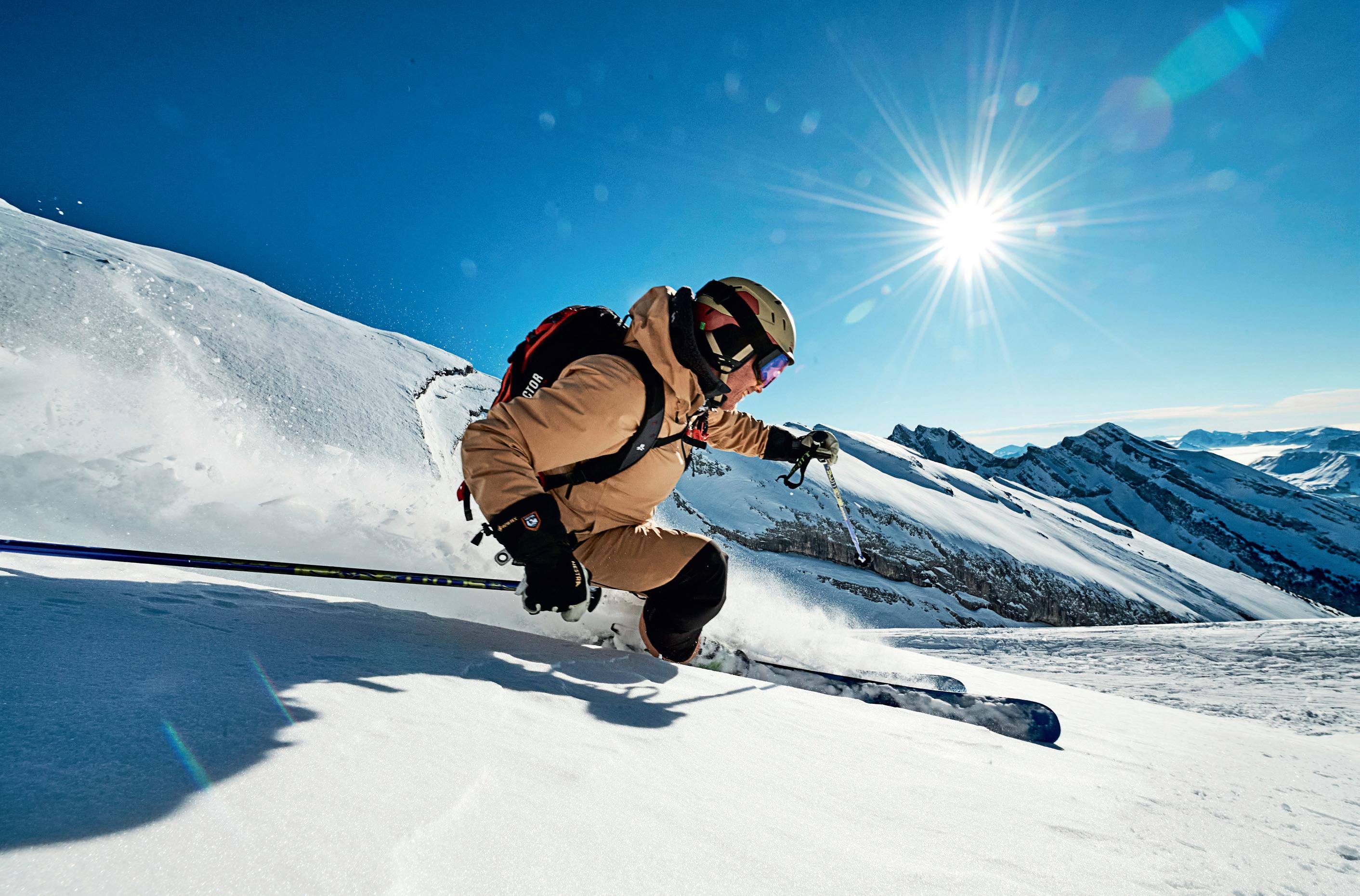
development ofKERS technology. Both of these bits of kit act as shock absorbers within the ski. However, rather than adding bulk and weight, as a trefoil might in days gone by, these are unnoticeable, built into the main body of the ski.
All other brands have been playing catch-up ... until this year. The piste category was more difficult than ever to pick our winners. With a surge in technology flooding into the market as brands completely embrace their World Cup-winning designs, we struggled to tell many skis apart!

In the end, we were able to pick our top three for both men's and women's, but rest assured it is very difficult to go wrong when picking a piste ski next season. After a decade or more ofliving in the shadow of all-mountain skis, it is time to give power back to the piste.
One of the best skis we tried to carve on all week came in at 106mm underfoot. Elan seriously impressed us with their Ripstick, utilising their unique Amphibio technology to create a freeride ski with support on its inside edges, but an outside edge that freely releases back the other way. Last year it was the 96mm that won the day, this year we had the snow beyond the piste poles
Skiing's biggestnames - includingthe legendary GlenPlakewere La Clusaz-bound totest2024's offerings
to challenge the 106mm underfoot. They are not alone, however. The top runners and riders in the freeride category all impressed us with how they handled on the corduroy, as well as how they smashed through crud or floated through the powder.
Long gone, therefore, are the days when freeride skis resembled 'boats': long, fat planks that were good for pointing straight down a powder line and not much more. The Black Diamond Impulse 104, for example, features reinforced edges to boost its edge performance over its playful 98mm-underfoot cousin, and a multi-wood core from Blizzard has helped their Rustler series flex perfectly underfoot to give skiers exceptional control.
Next year's powder skis are fun all over the mountain. Some of them want to coax the heel out to have some fun thanks to a lightweight but supportive design, others reinforce their edges with well-placed metal to give the ski a proper boost when rolling edge to edge.
What does the refinement of freeride skis mean for the future of all-mountain skis? Following the explosion of one-ski quivers in the last decade and a half,
manufacturers have started to apply the same logic to their wider cousins, drawing on piste technology to improve the all-round performance offreeride skis.

This does mean that the golden age of all-mountain skis has shuddered dramatically to a close. With high90mm and low-l00mm underfoot skis performing as well as, if not better than, all-mountain skis on-piste and in choppy snow, as well as offering exceptional float in the powder, trying to find that happy medium in the late 80s or early 90s is suddenly a thing of the past.
Should we be writing the obituary of the all-mountain ski, perhaps?
Perhaps not. As Mark Twain once penned: "Rumours of my death have been greatly exaggerated."
Rather than wait patiently for its demise, the all-mountain category has rationalised and diversified. At the lower end of the spectrum, the focus has returned to good-quality piste skis that can handle a quick dive off the piste or a myriad of different snow conditions, rather than trying so hard to be a skinny freeride ski. The Volkl Deacon 84 and Elan Primetime are good examples of this from this year's Test.
Further up the pecking order, all-mountain skis are diversifying. Whereas traditionally we had two sub-categories (piste skis designed to go off-piste, or freeride skis designed to go on), we're now looking at up to four sub-categories. Alongside the original two, we are seeing skis stripped back of their technology to create something simple but fun. The Serpo from Black Crows is perhaps the best example of this, alongside the Black Diamond Impulse 98. While the Volk! Blaze is the complete opposite of their Mantra M6 we tried -and fell in love with -last year.

We're also seeing the rise of touring-compatible skis. Partly driven by this stripping back of the technology in the ski, the rise in tour and particularly hybrid setups is allowing all-mountain skis to go anywhere on the mountain. Sticking a Shift binding on a Black Diamond Impulse or Black Crows Serpo is an immediate guarantor of a good time in the backcountry.
Perhaps the biggest, most remarkable step forward in ski technology this year has been in the area of sustainability.
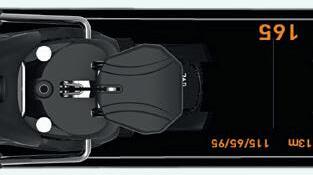


It has long been noted that skis are not particularly environmentally friendly, especially when it comes to disposing of them. The combination of woods, metals, fibreglass and plastic, all held together by resin, makes them very difficult to dispose of responsibly.

That has changed this year, with a couple of really noticeable examples to help us all ski more sustainably. Rossignol have created the Essential, the world's first

recyclable ski. They have removed the resin that binds the ski together (don't worry, it won't fall apart under your feet), and the fibreglass normally found in the core of the ski, and replaced plastic elements such as the topsheet and sidewall with wood. When you are done with the Essential, return it to Rossignol and they will ensure 77% of the ski is recycled, with the rest burned for energy and only 6% going to waste.
The other big step forward has been in the recipe of the ski. Two brands, Atomic and Dynastar, have independently arrived at the same result: by removing metal plates and replacing them with a high-density wood, you can reduce waste by 30%, greenhouse gas emissions by 50% -both across the lifecycle of the ski -and offer a ski that is better performance-wise than before. This technology can currently be found in Atomic's Backland touring range and Dynastar's M-Pro range, and will be rolled out widely in years to come.

We are super excited to bring you our top picks for next season in Ski+board, on the Ski Club website, and via the Ski Club's YouTube channel.
Stay tuned in the autumn for more, and in the meantime don't forget the Ski Club is on hand to help you find your perfect pair of skis over the phone on 0208 410 2009 or via email at information@skiclub.co.uk.
We would like to thank our sponsors for their support in making our participation in the 2023 SIGBSki Test possible. Thank you to Snow+Rock, Huski Mountain Delivery and OVONetwork for their generosity.

y bags were packed and I was off again, like an excited kid, to the SIGBSki Test in La Clusaz, France. This winter sport tradeshow gives me the opportunity to not only try the latest skis that will be hitting the slopes next winter, but also get some real-world experience of what new boot tech is coming and, more importantly, get them on my feet and try them.
You'll be glad to hear that sustainability is still a big story for most manufacturers. Scott is bringing out a new touring boot that uses over 50% recycled material, and Salomon are already developing processes that can take a running shoe and turn these into materials that can be used in ski boot production -clever thinking!
One thing that we can't get away from is rising costs with boots. Investment in recycling solutions and the general quality of boots these days means that most higher end models are now in the £600 to £700 bracket.
Thankfully, this does mean there is some great tech coming along to improve everything from fit to reducing weight and, in the touring segment, improving the fluidity of motion in the upper cuff when in tour mode.
Big news is from BOA.These micro-adjustable fit solutions we are used to seeing on cycling shoes and snowboard boots have now made it to the ski boot world. We are used to seeing them on liners from the likes of the Scott boots, but Salomon, Atomic, K2 and Fischer are all utilising BOA'sexpertise to produce better fit solutions on the front of some of their boot models, doing away with the first and second clip. This gives a radically improved fit over the forefoot, wrapping the foot securely for a more precise feel. I love the fact that adjustment on these new models is not only precise, but can be tweaked on the move with a quick twist of the BOAdial, which is easily grabbed with a glove on. Keep an eye out as other manufacturers adopt this technology in the future.
Then, from Lange, we have the launch of the Shadow boot. Inspired by mountain bike suspension, this combines a suspension blade in the rear cuff and a dual
pivot, which extends the axes of the cuff. This extra leverage gives more power with less effort and increases the rebound by 26% giving a more dynamic drive from the boot. Less effort for more reward and bigger smiles. Dalbello are still charging with their all-mountain range, and while these have had incremental changes this year, sales from this allow them to develop their other more niche boot lines. The Cabrio has an all-new full-wrap liner with more progressive flexes in the Cabrio Free.
The Rossignol Hi-Speed range is offering a huge range of customisation options from 98/100/102/104 last widths. Plus their dual-core shells with different hardness zones within the same mould gives great drive where needed and more rebound in other areas of the boot. The rear of the shell has three screws so you can alter the flex of the boot -this is a model that can truly grow with you as you progress.
In the touring arena hybrid is the big news. Scarpa joined last year with their fantastic 4-Quattro range, and the race is now on for the best performing boot, with great touring ability and dynamic downhill performance. Atomic have joined the party with their Backland XTD range. Think all-mountain/piste boot meets lightweight touring -this boot is a game changer. With its frictionless mirror pivots, the walk mode is genuinely epic and should come with a health warning when switching between ski/walk. Beware and hold onto something before you engage its 74 degrees of cuff movement! But what goes up must come down and these can drive the biggest skis out there with ease. Choose a model with a GripWalk sole and you have a genuine one-boot quiver.
Finally, Dynafit, who have always been market leaders with their fast and light ranges for years, have jumped into the freetouring arena with their all-new Tigard 130 with GripWalk sole.
Check back in the autumn for a full rundown of 2024's best ski boots.


.a.

Expect someexciting upgradesto your2024 bootline-up
Wonderingwhatsnowboardswilllooklikeinwinter23/247
We'vegotthelowdownonthebiggesttrendssettoshape theindustryoverthecomingyears...woRDsTAMARAH1NsoN
One of the biggest upcoming trends relates to snowboard profiles. As much as we love the versatility and playfulness of a twin-tip, it's important to remember that these boards are designed with parks in mind. In recent years, twin-tips have become the go-to snowboards for many riders -even those who don't plan on going near a rail, kicker or table top.
All this looks set to change in winter 23/24, when we'll see more directional shapes dominate the market. "The 1990s and the early 2000s were all about twin-tip boards, but in the last decade shaped snowboards have made a big comeback," says Moonchild Snowboards founder Jure Sodja, who founded the brand after stints at Capita and Elan. The brand's Malibu freeride board was subsequently described as one of the world's top
freeride boards by White Lines magazine. "I believe the preference for directional snowboards will continue into 2024 and beyond," says Jure.
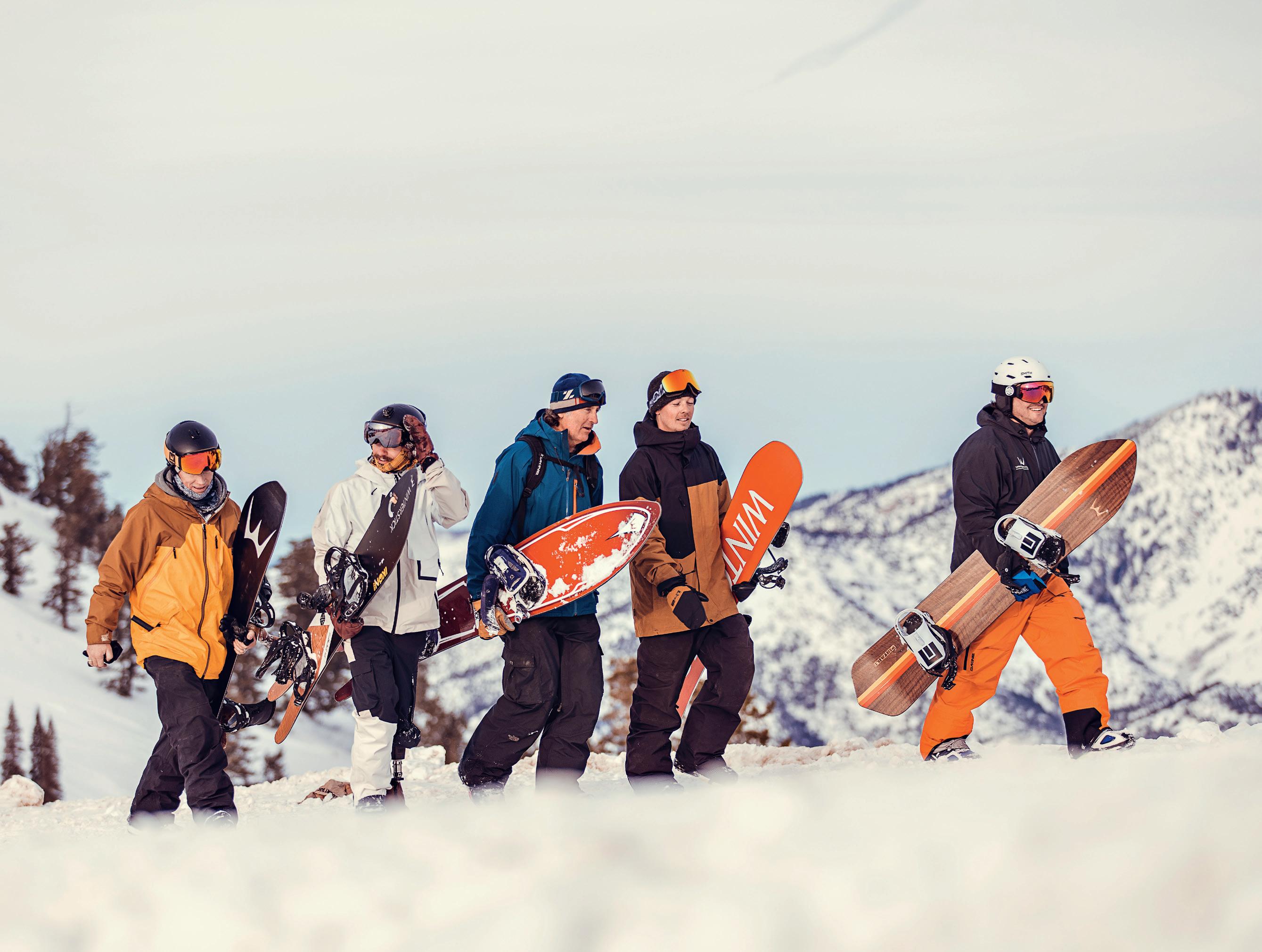
"After all, if you're not a park rider, there's no sense in riding a twin-tip snowboard. Snowboards with directional profiles are much easier for beginners to ride, and they'll have much more fun on them, too."
This brings us on to the next development. It appears there will soon be a much bigger focus on fun, rather than an obsession with over-engineered snowboards designed with specific terrain in mind. "We'll definitely continue to see the evolution of back-to-the-roots snowboarding," says Colin Boyd, marketing director at Winterstick Snowboards. "We'll see more shapes that
support riders' capacity to surf the entire mountain." There will also be more experimentation. Rather than an auto-pilot approach that dictates certain designs for certain terrain, brands will look at new ways to help riders get the most out of their time on the mountain.
Lewey Payne, director ofDouk Snow UK, a UK-based snowboard brand, believes we'll see more brands throwing out the rulebook: "I think we'll see more design-related progression -snowboards that are designed to do everything well, such as directional hybrid camber boards tailored not just to hitting the park or powder, but which are capable of doing all of this at a very high level. And I think we'll see more experimental shapes, such as low sidecut boards and super-wide short boards."
The good news for consumers is that many experts are predicting that more snowboard brands will open bases around the world, which will inevitably result in lower prices (albeit a reduction that could be eclipsed by price increases caused by other factors). But let's be clear: in an industry that is increasingly focused on sustainability, we'll see more brands embracing localised production. "Snowboard brands are increasingly looking for production solutions that are regional or local," says Yoann Chapel, co-founder ofVerbier-based First Track Lab, a R&D-focused company specialising in winter sports. It's a change Yoann believes will be a slowburning development that will gather momentum over the coming years. "Quality is a key success factor for partnerships between brands and manufacturing partners, and factory changes take a long time to organise," he adds.
Perhaps unsurprisingly, we're demanding more from our snowboarding gear, whether it's our jackets and trousers or boots and beanies. "There's definitely a growing focus on performance," says Colin Boyd, marketing director at Winterstick Snowboards.



"People will invest in hard goods and soft goods that are built to last, but which also elevate performance through comfort, durability and design." Think more goggles with magnetic lenses, jackets and trousers with superior temperature regulating qualities, and a popularity boom for step-in bindings.
Speaking of step-ins, Colin isn't the only industry insider who's predicting a surge in demand. "I think there'll be a continued focus on step-in binding setups, with brands like Nidecker honing in on this area," says Lewey Payne at Douk Snow.
Finally, don't be surprised to see some brands ditching bindings altogether. "Powsurfing (which refers to the riding of powder snowboards without bindings) is becoming bigger every season," says Jure Sodja.
''We've seen a lot of people who've been snowboarding for decades now, and they lost the excitement they had in the early days. Powsurfing is slightly more challenging and can give you that excitement back. Several brands now have at least one powsurf model. They're easier to build than regular snowboards, too."
Moonchild Snowboards will soon take this to the next level. "Moonchild Skunkworx (the experimental side of Moonchild) is working on a hybrid snowboard, which will transform from a splitboard to powsurfboard to powder board in less than a minute," says Jure.

.t.DoukSnowUK (top}isamong thebrands embracingamove towardsmore experimental boardshapes
Moonchild isexperimenting withanew typeofhybrid snowboardas powsurfinggains inpopularity

In this month's From the Archive we're focusing our attention on the race results of the Ski Club-hosted British Ski Race Week of 1960. The papers are a recent addition to the Club's 100-year-old skiing collection at De Montfort University. They originally belonged to a Ski Club Member called Miss Mary Cavenagh (later Mrs Hughes), and were donated by her sister, Doreen Beatty. "According to Doreen, Mary was a well-regarded member of the Ski Club," says Archives Assistant David Millns. "Mary began as a secretary in 1948, and by the end of her career at the Ski Club in 1969 she was well respected within the Club and was helping to organise events -most likely why she had these race results in the first place!"
Unfortunately, David was not able to find a record of the job title Mary held on her leaving the Ski Club, but she did get a mention in the committee minutes when she left, and received a payment from the Club towards her wedding, which would be held later the same year (1969).

As for the papers, by the 1960s, ski racing had become more formalised than the early races of the 1920s and 1930s. Growing participation up and down the age groups meant that more and more Brits were taking part.
The passion for skiing nurtured by the Ski Club's junior parties, as featured in Ski+board 219,is evident once again, as young racers take part in the races hosted by the Club during the 1960 St Moritz meet.
The Anglo-Swiss skiing connection is also evident. We discussed this in Ski+board 218,when, during the Second World War, allied internees were permitted to partake in events such as the Parsenn Derby in return for their help developing and repairing ski resorts. In 1960, this relationship remained as strong as ever, as the Swiss were deeply involved in helping the 1960 St Moritz races become a success.
The most telling sign of the strength of this Anglo-Swiss relationship was the Anglo-Swiss Universities Race. The 21 runners in the Duke of Kent Cup featured representatives from Cambridge, the University of London and the University of Zurich, with several participants also skiing on behalf of two university-based clubs, the British University Ski Club (BUSC)and the SAS (Swiss Academic Ski Club). Both organisations exist to this day with long and illustrious histories, and help to encourage students into competitive skiing.
The competition was clearly fierce back in 1960, and took place on a demanding course almost 3km long, featuring a vertical drop of 1,866ft -a challenge for competitors today, but Herculean for the skis and boots
~ae'tman r Me ..9%"°~ei:;z-





of the 1960s. The athletes were in fine form, however, with the top four competitors all finishing within one second of each other. Palmer Tomkinson and Macintosh, both of the University of London's First Team, walked away with gold in a time of two minutes and 15seconds -more accurate timing not yet available to split the photo finish!

These fascinating papers were inherited by Doreen on her sister's death in 2005, and she donated them to the archives after she began clearing out some of Mary's belongings things this year. Which leads us to wonder what other Ski Club paraphernalia Members may have hidden around ...



the start gate, the
theme building,and GrahamBell,or the SkiClub'sChemmyAlcott, readyto introducethis week's action -the BritishSki RaceWeek of 1960, held in St Moritz, Switzerland...
.6.Mary's papersoffer asnapshotof theClub'sracing sceneinthe'60s
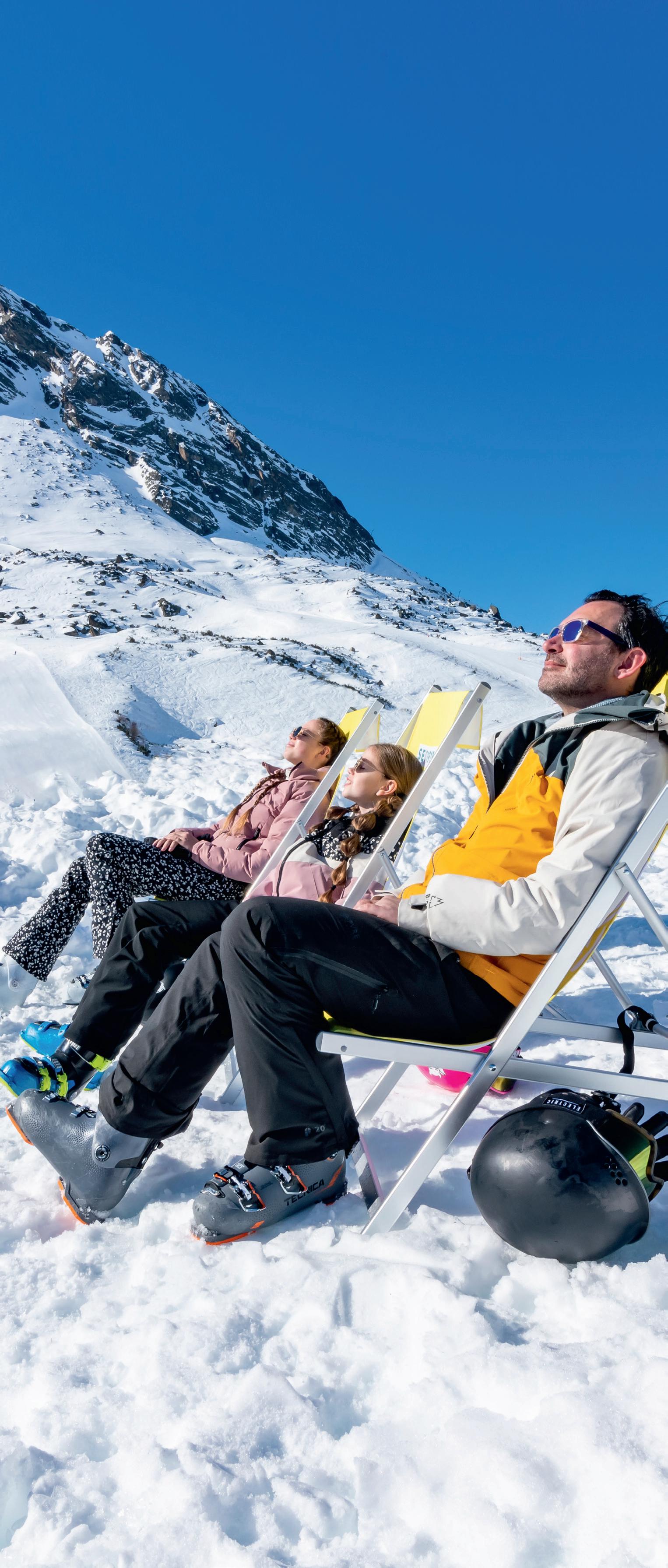







FROM APRIL 15 TO MAY 06, 2023
-¼ GREAT SHOWS, FUN FOR ALL, LIVE MUSIC AMAZING DEALS


